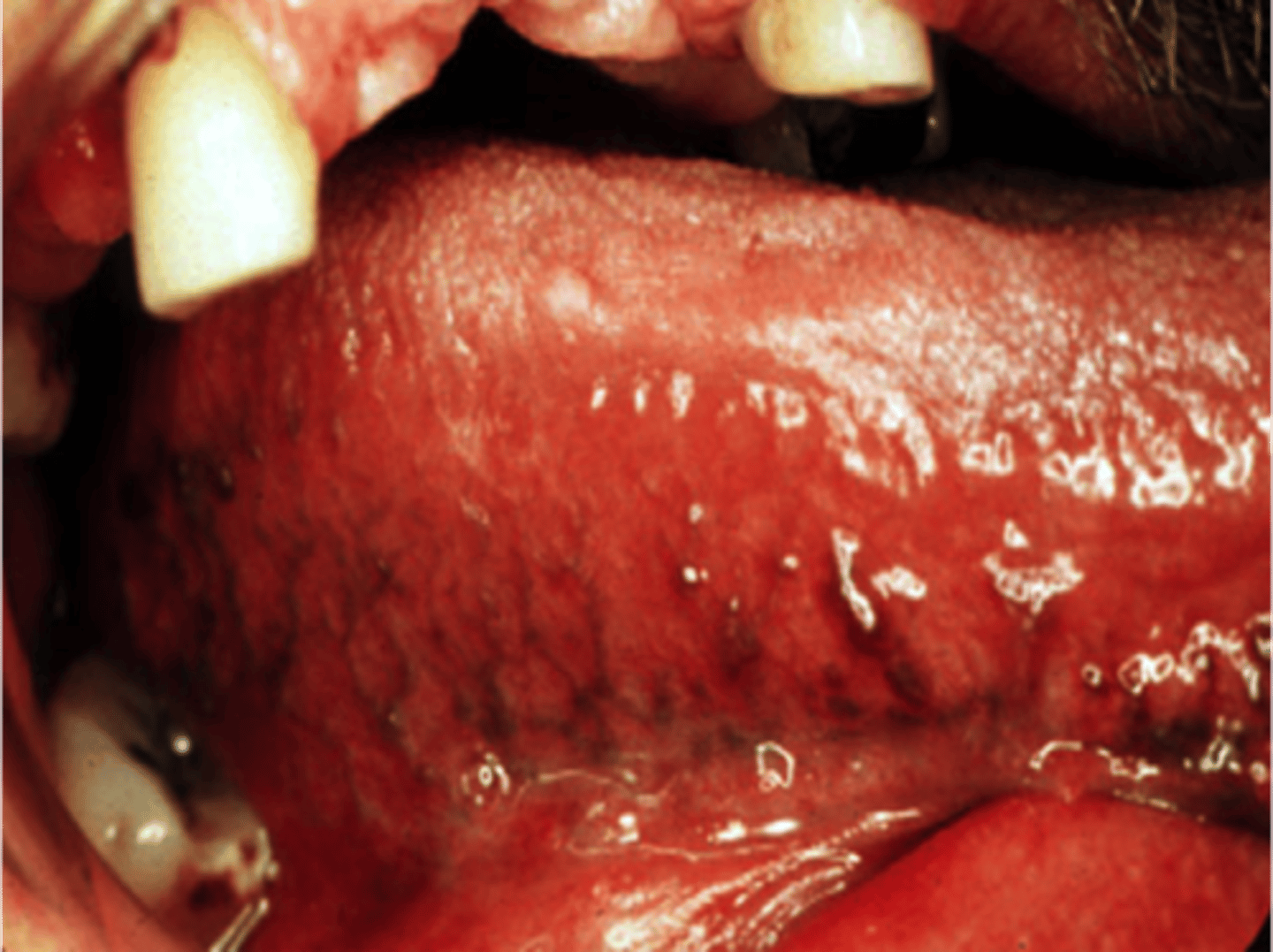ELCS Exam 1 - Head and Neck Anatomy
1/92
There's no tags or description
Looks like no tags are added yet.
Name | Mastery | Learn | Test | Matching | Spaced |
|---|
No study sessions yet.
93 Terms
Sternocleidomastoid muscle
What is this muscle?
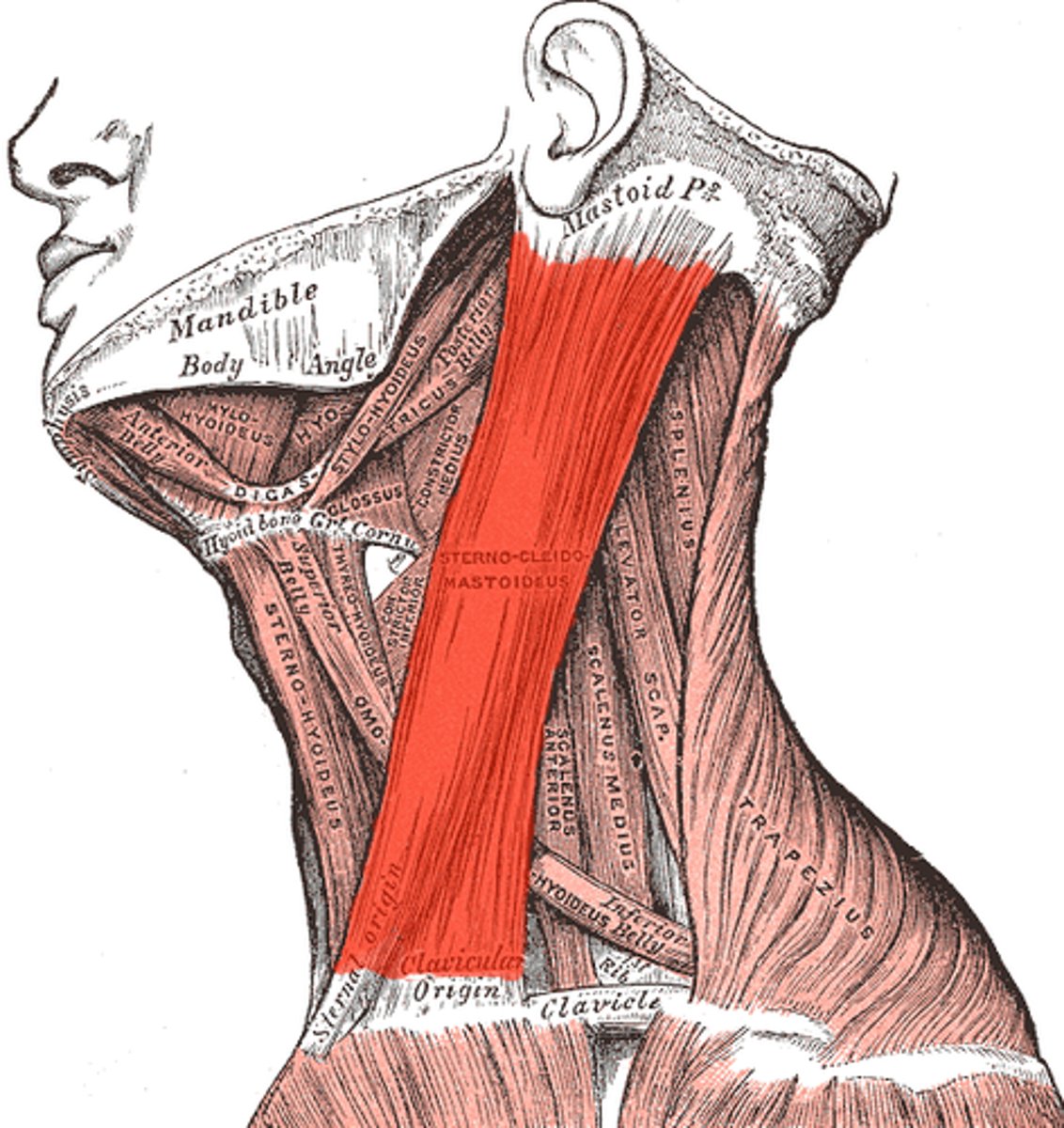
Searching sternocleidomastoid
Bimanual palpation
- Feeling for lumps or bumps
What do you do when searching here?
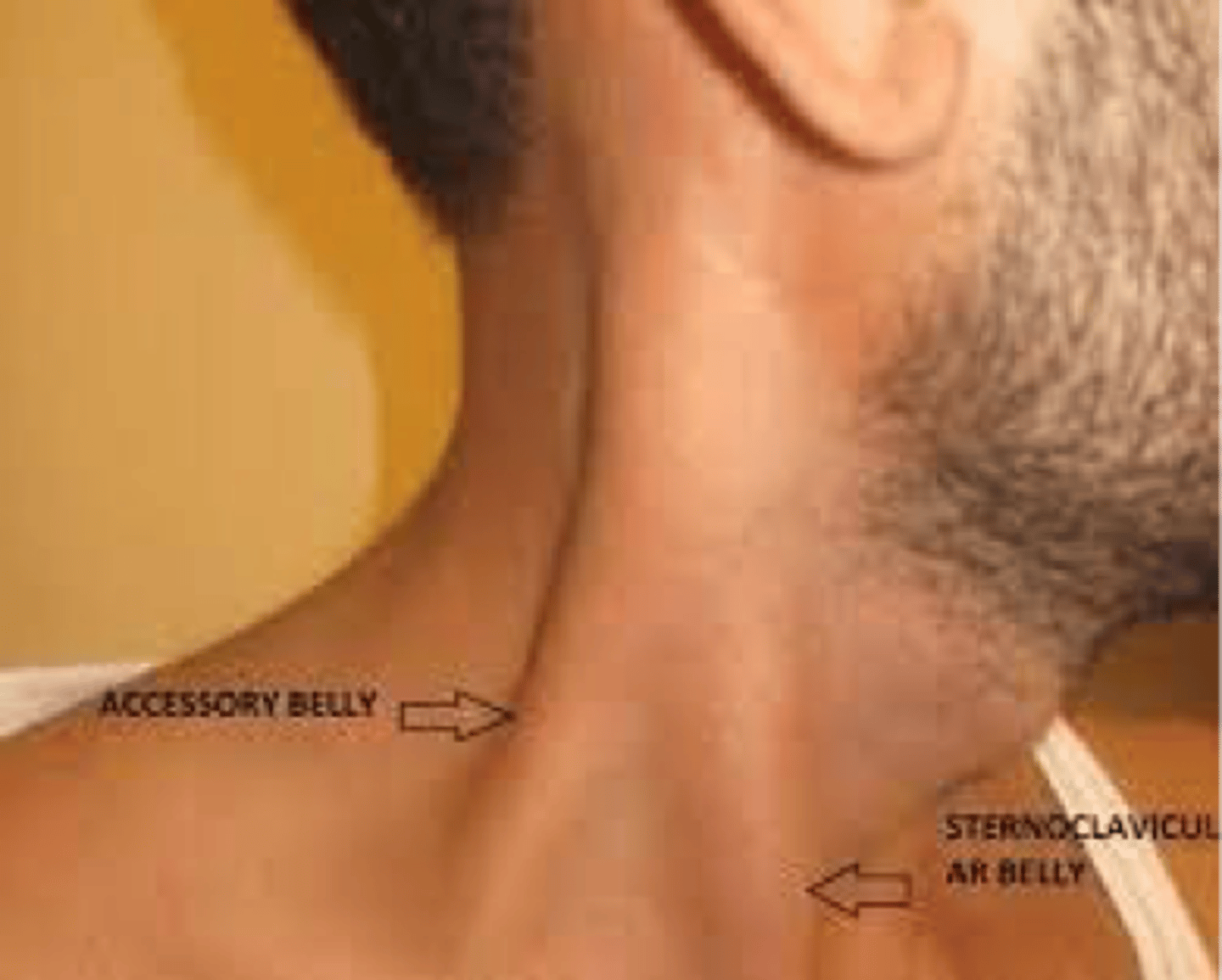
submandibular triangle -a region in the neck, specifically a subdivision of the anterior triangle, located beneath the mandible
What is this?
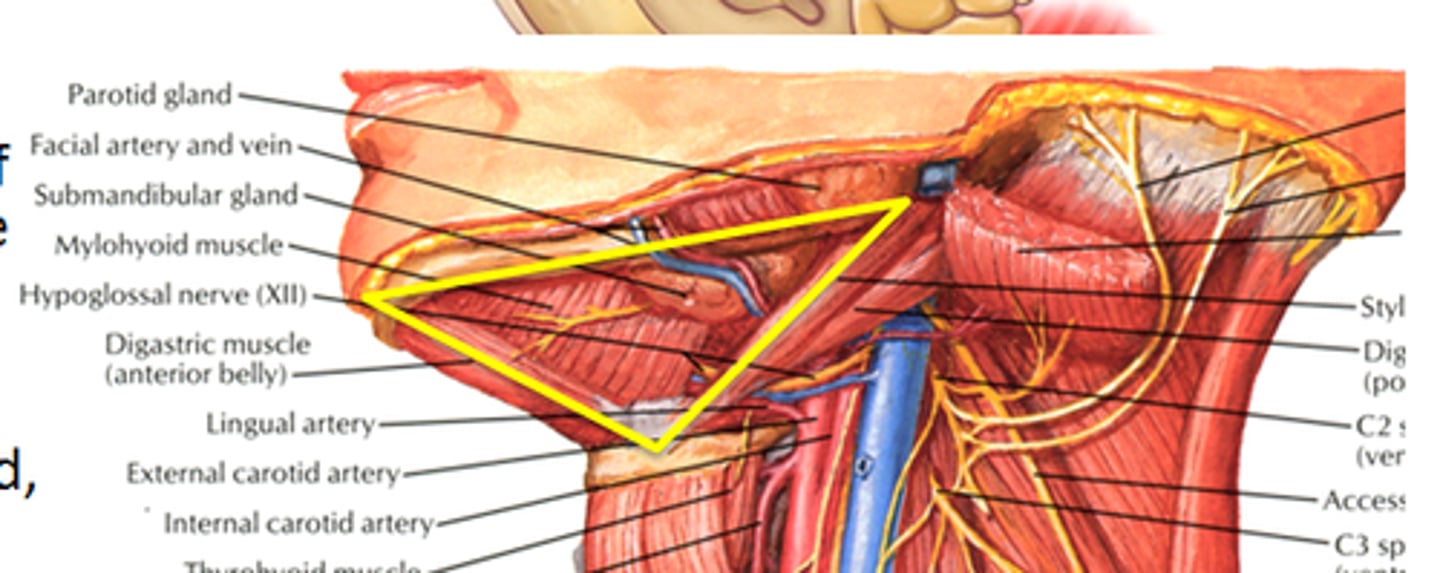
Termporalis Muscle
What is this?
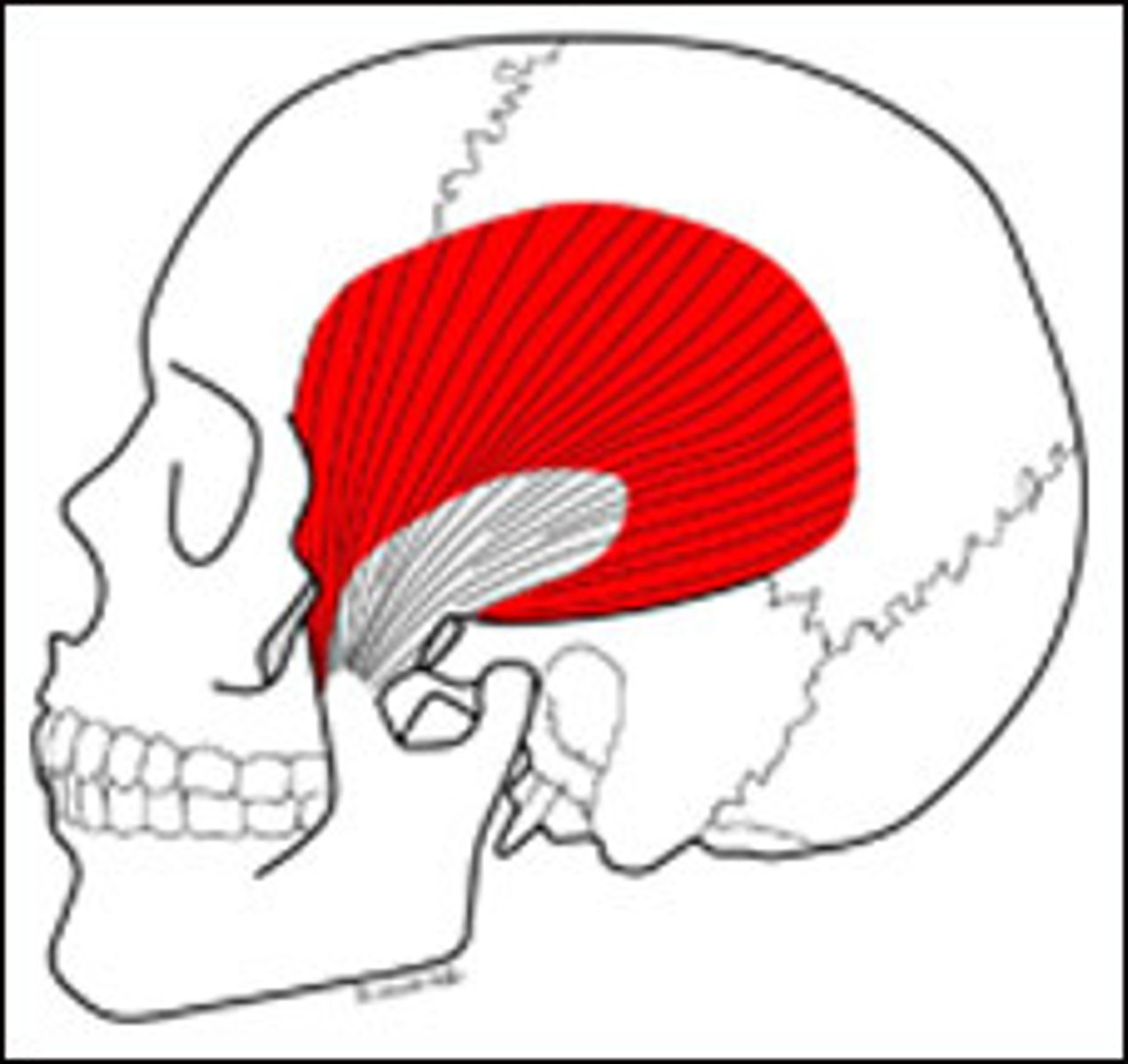
masseter muscle
What is this?
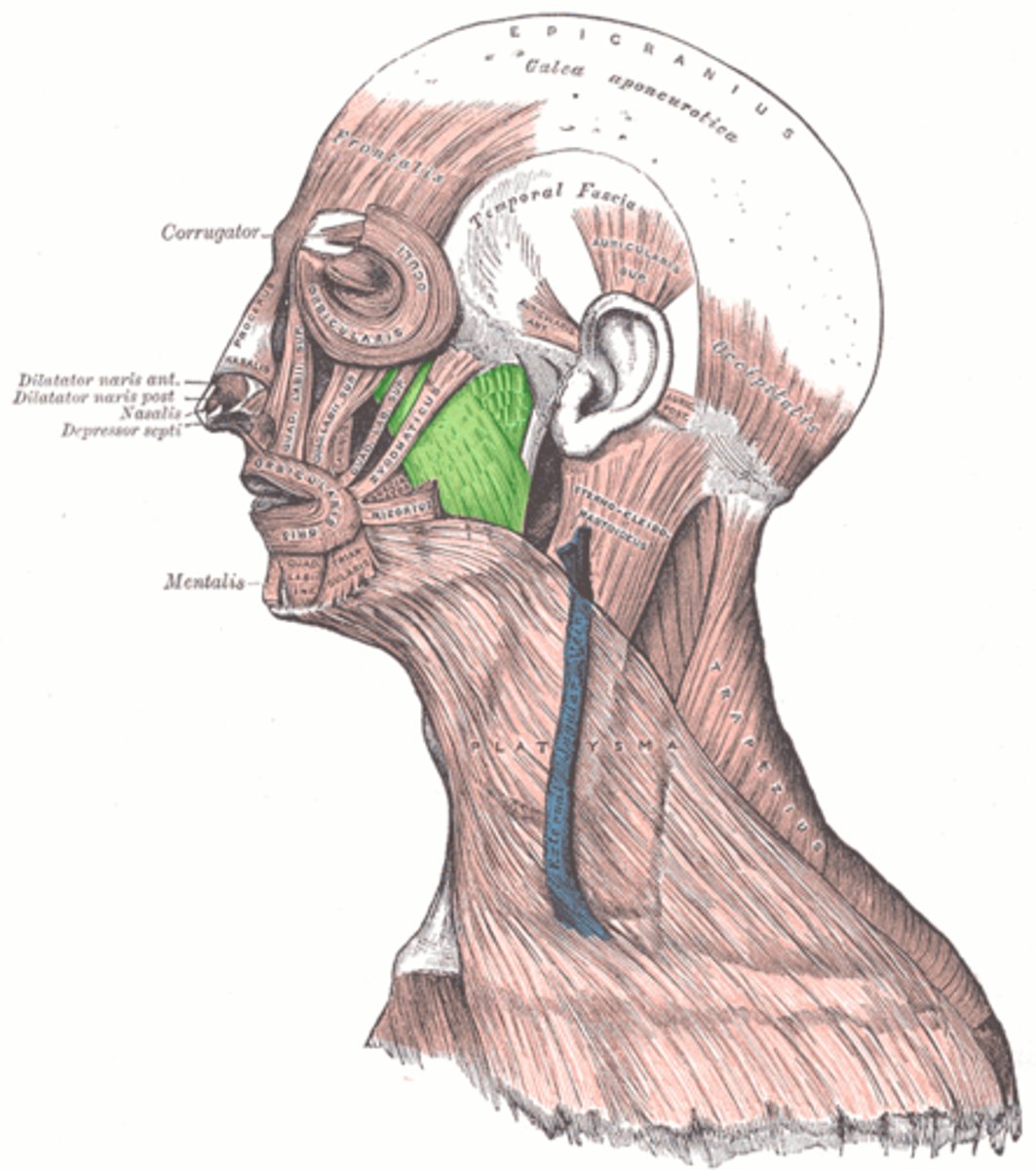
Palpate the muscles
Ask about soreness or tenderness
When examining the temporalis and masseter, what are you doing?
hypertrophy
What's with the masseter?
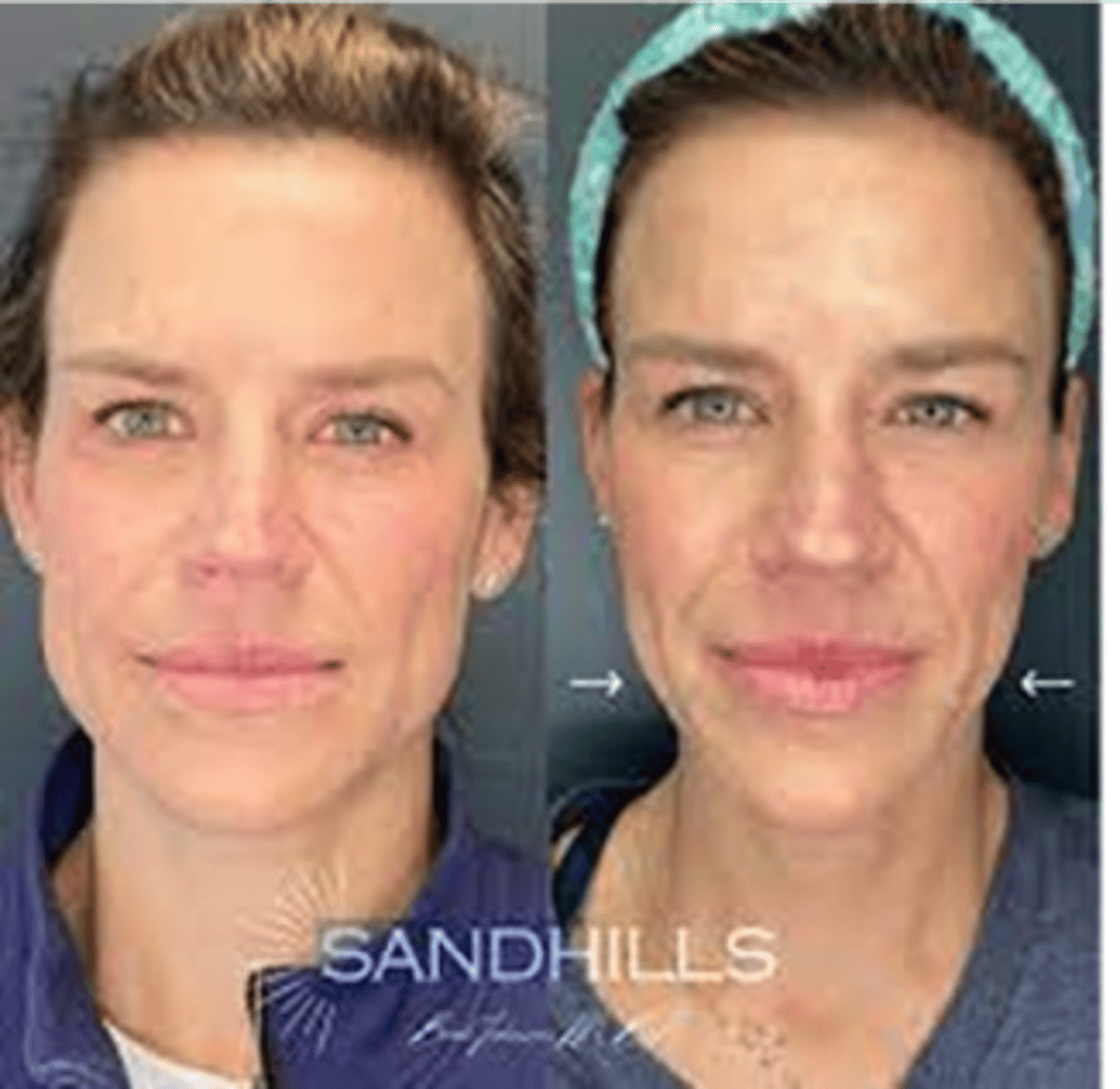
Asymmetry
What's with the masseter?
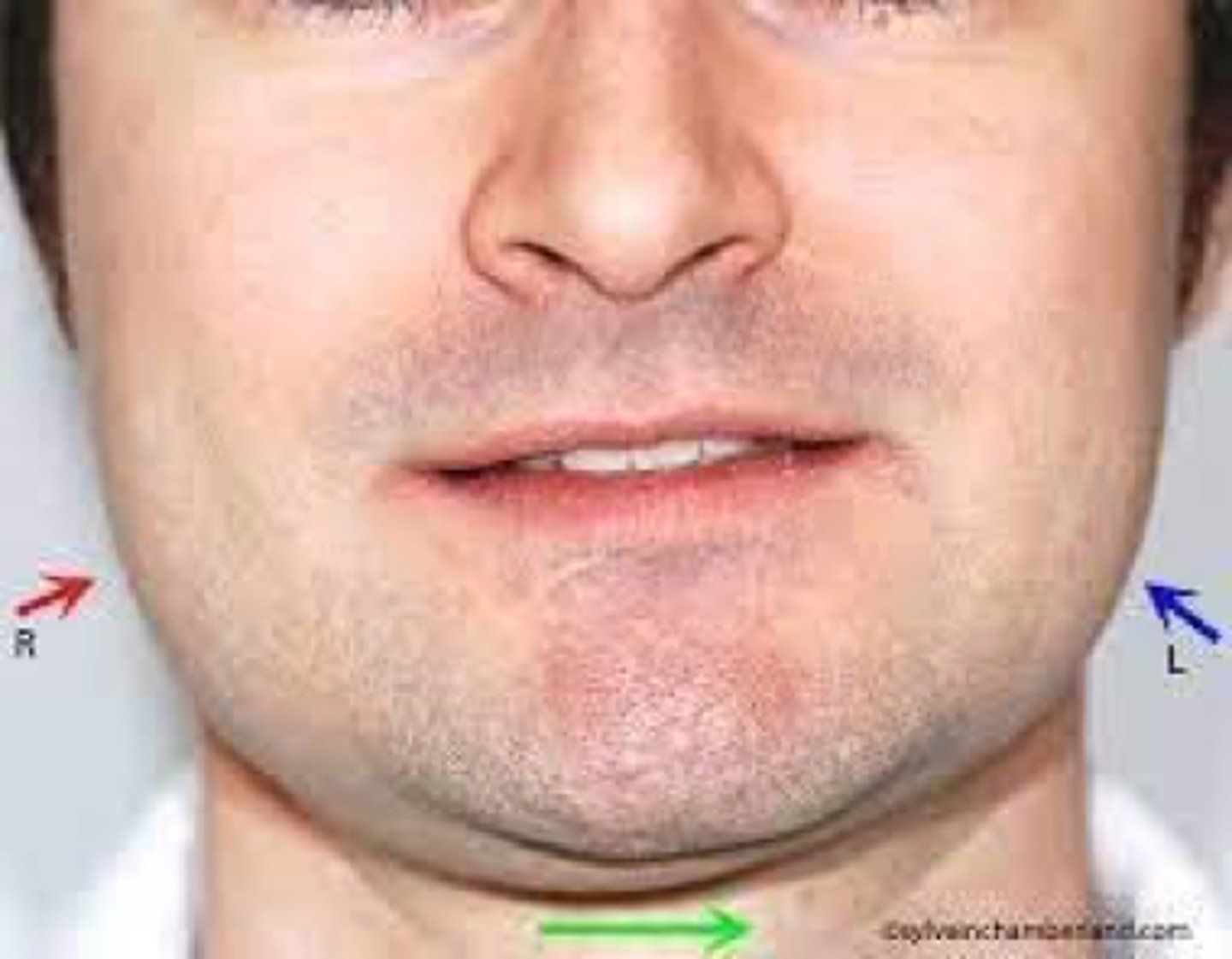
Temporomandibular joint (TMJ)
What is this?
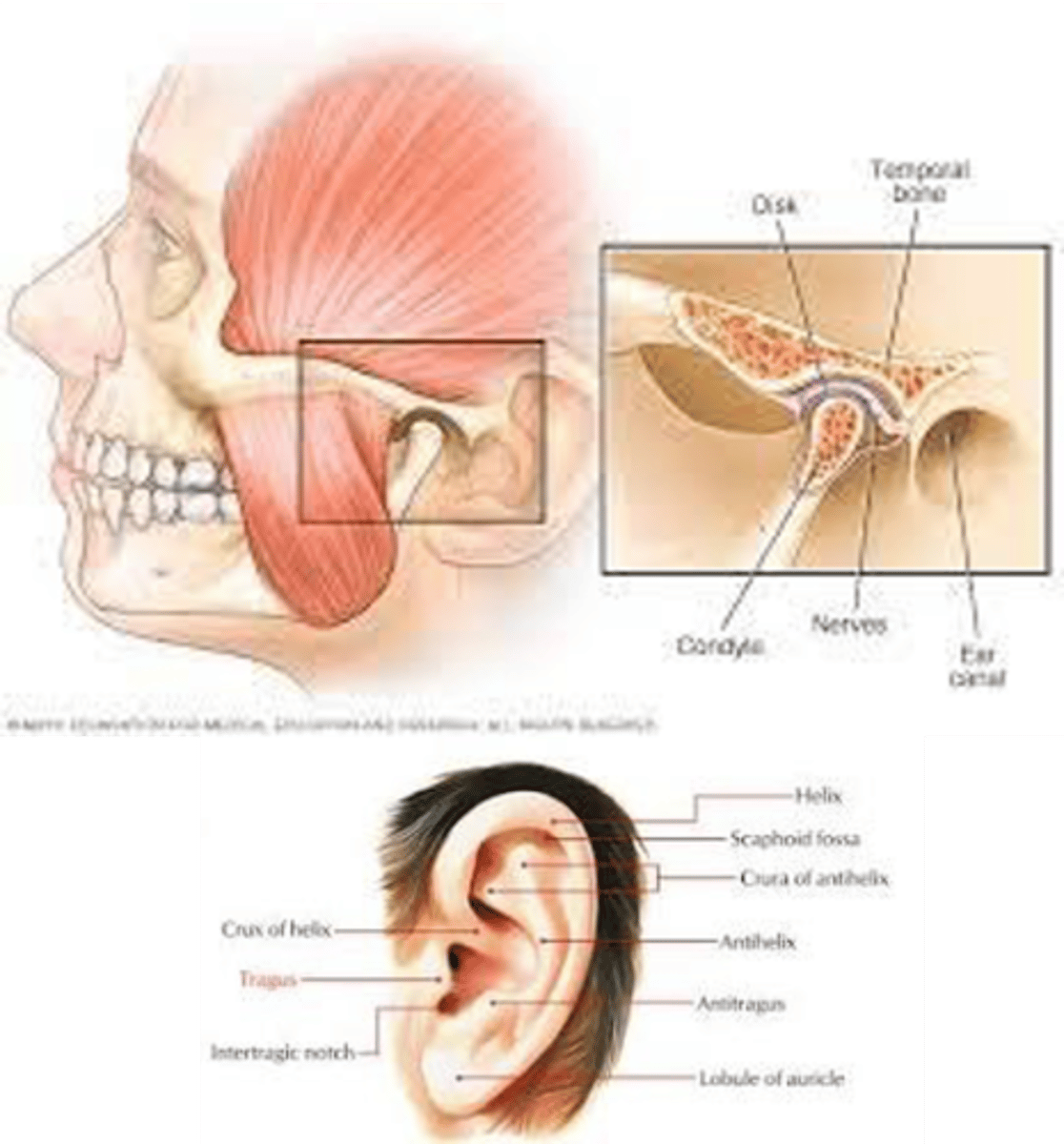
•Condyle can be palpated anterior to the tragus
•Have patient open and close
•May feel abnormal movement or hear popping/clicking/grinding
When looking at TMJ, what are you doing?
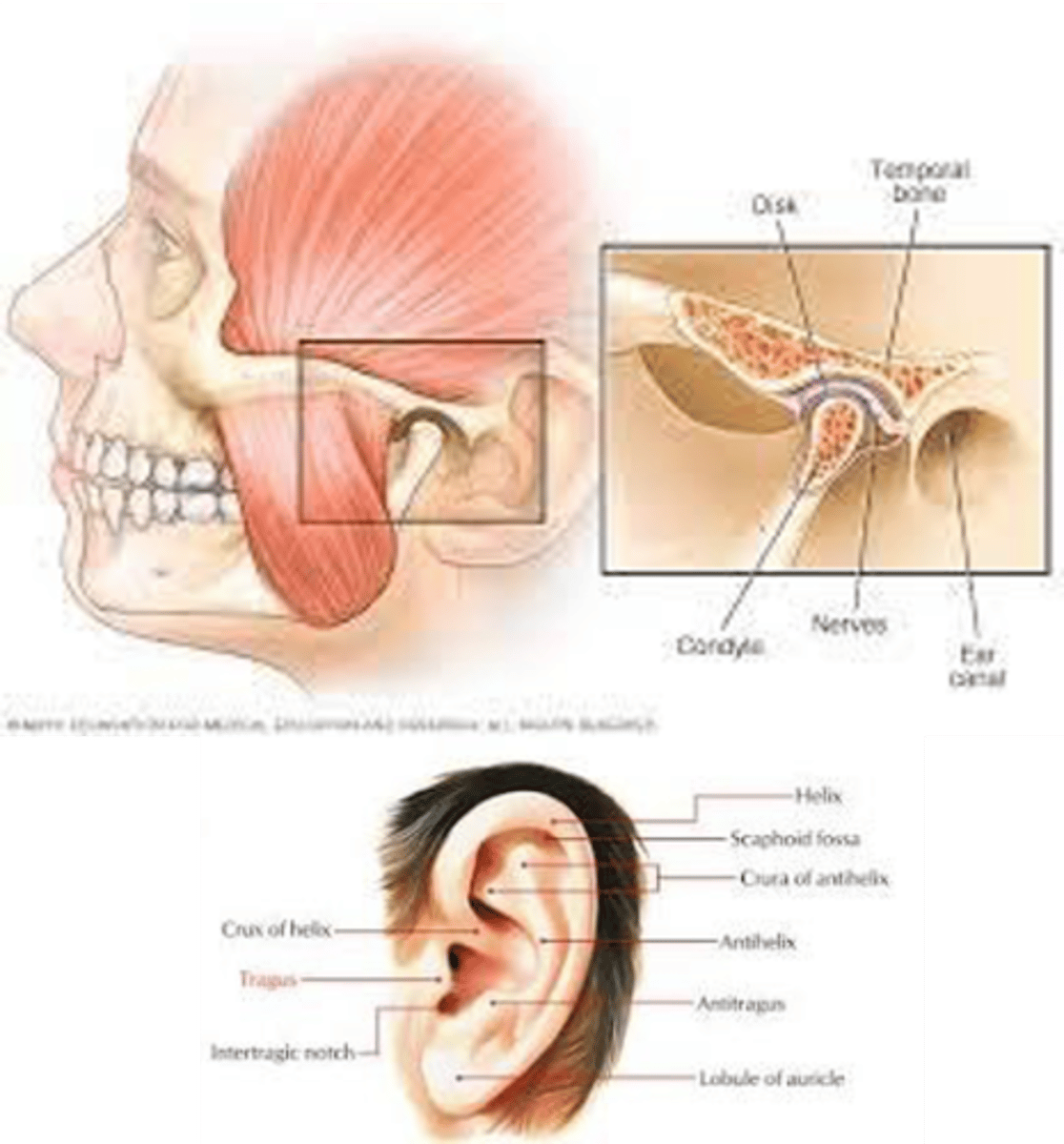
Ramus of mandible - the vertical, quadrilateral-shaped portion of the lower jaw (mandible) that extends upward from the posterior end of the body of the mandible
What is #2?
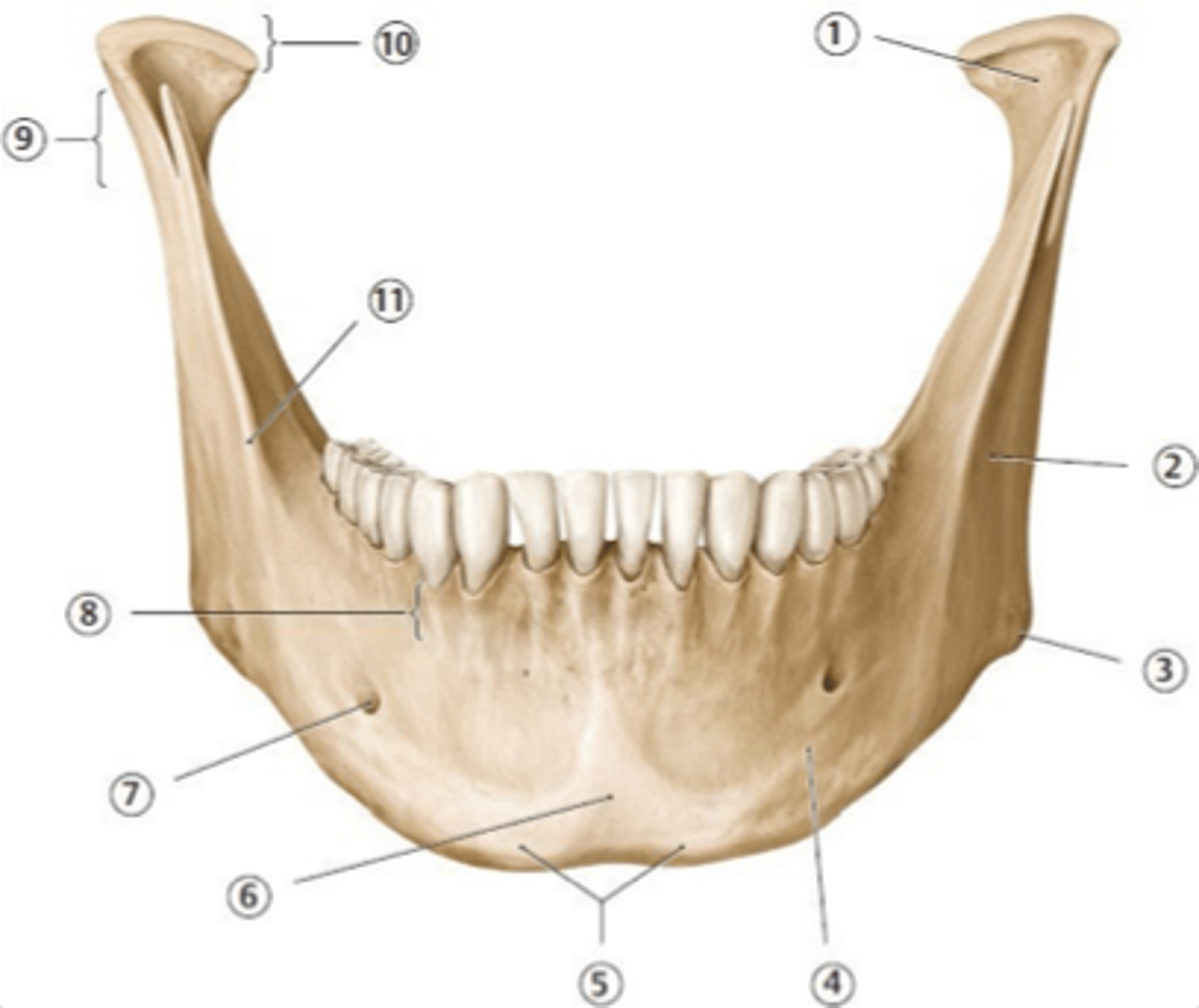
Angle of Mandible
What is #3?
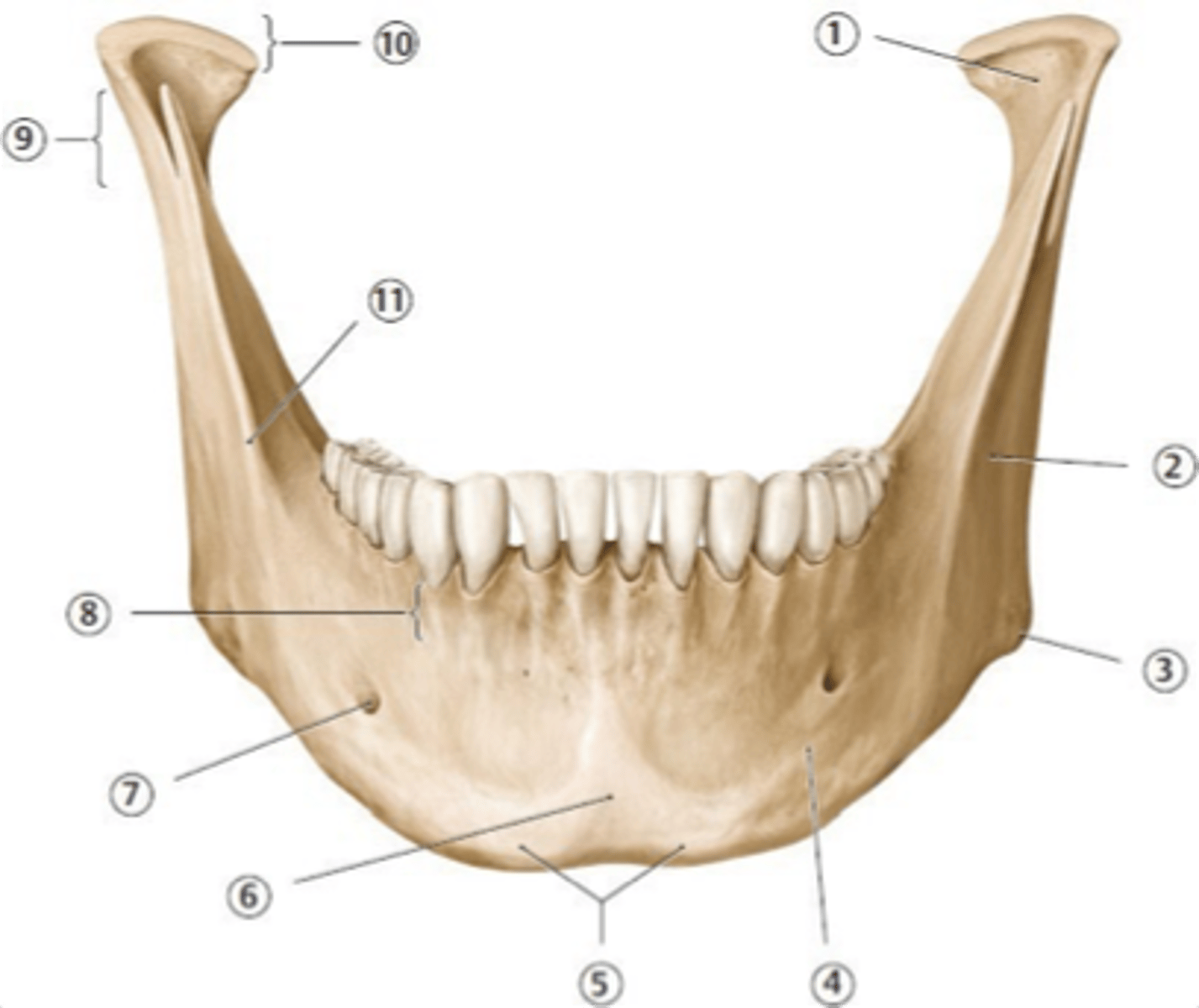
Body of mandible
What is 4?

Head (condyle) of mandible
What is 10?
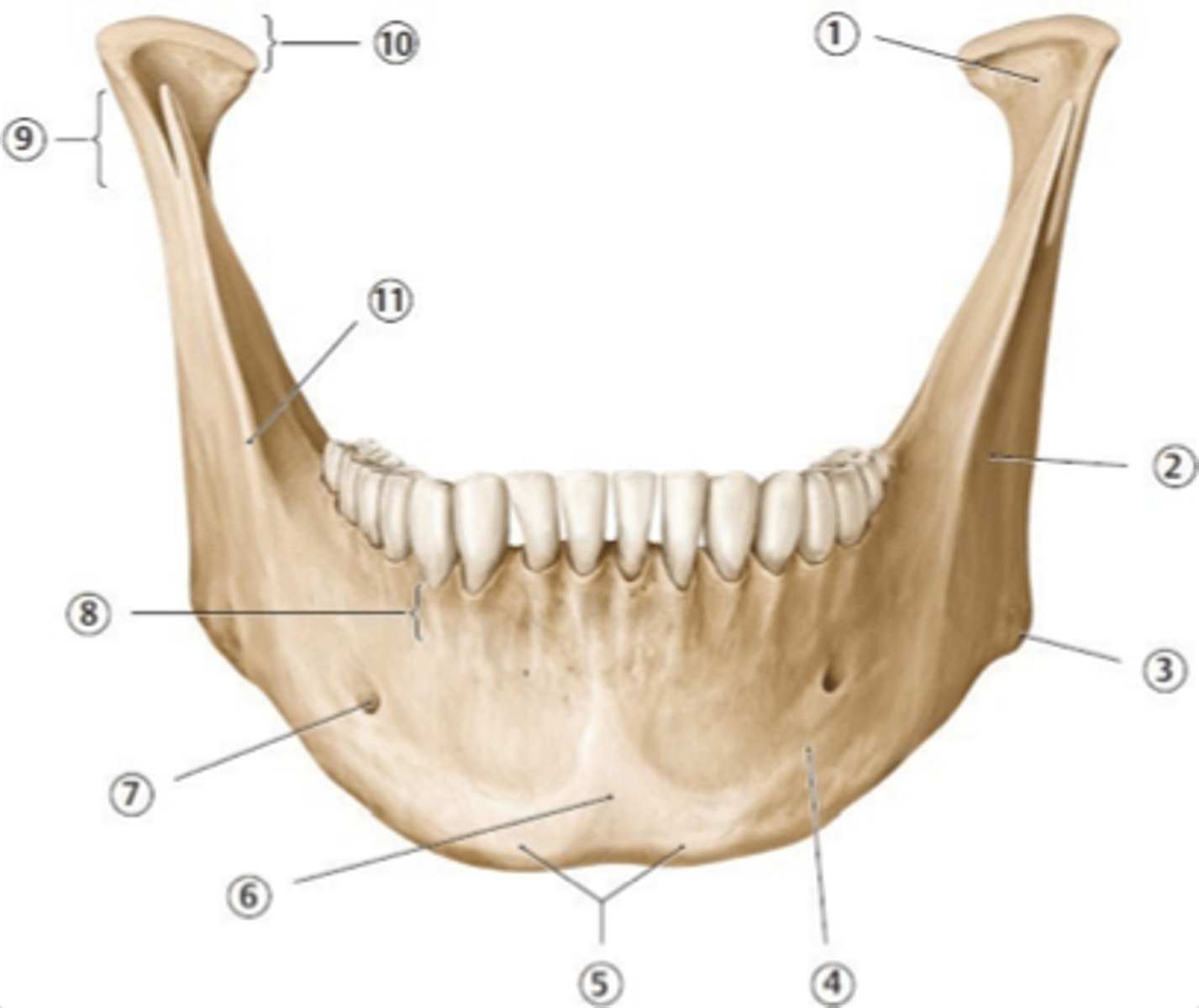
Lymph nodes: palpate; don't to identify what they are but notice if they feel abnormal
What is this? and what do you need to do?
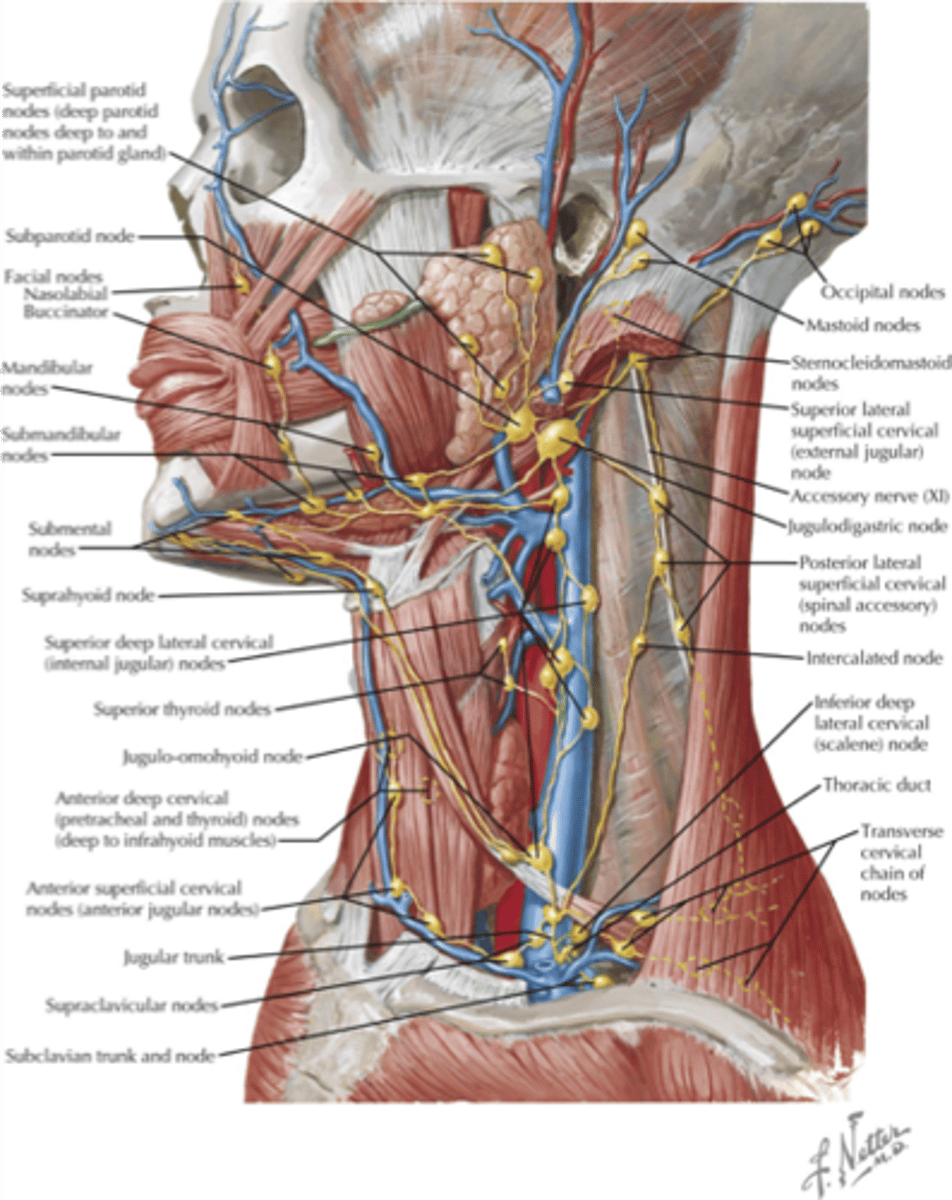
Philtrum
What is this?
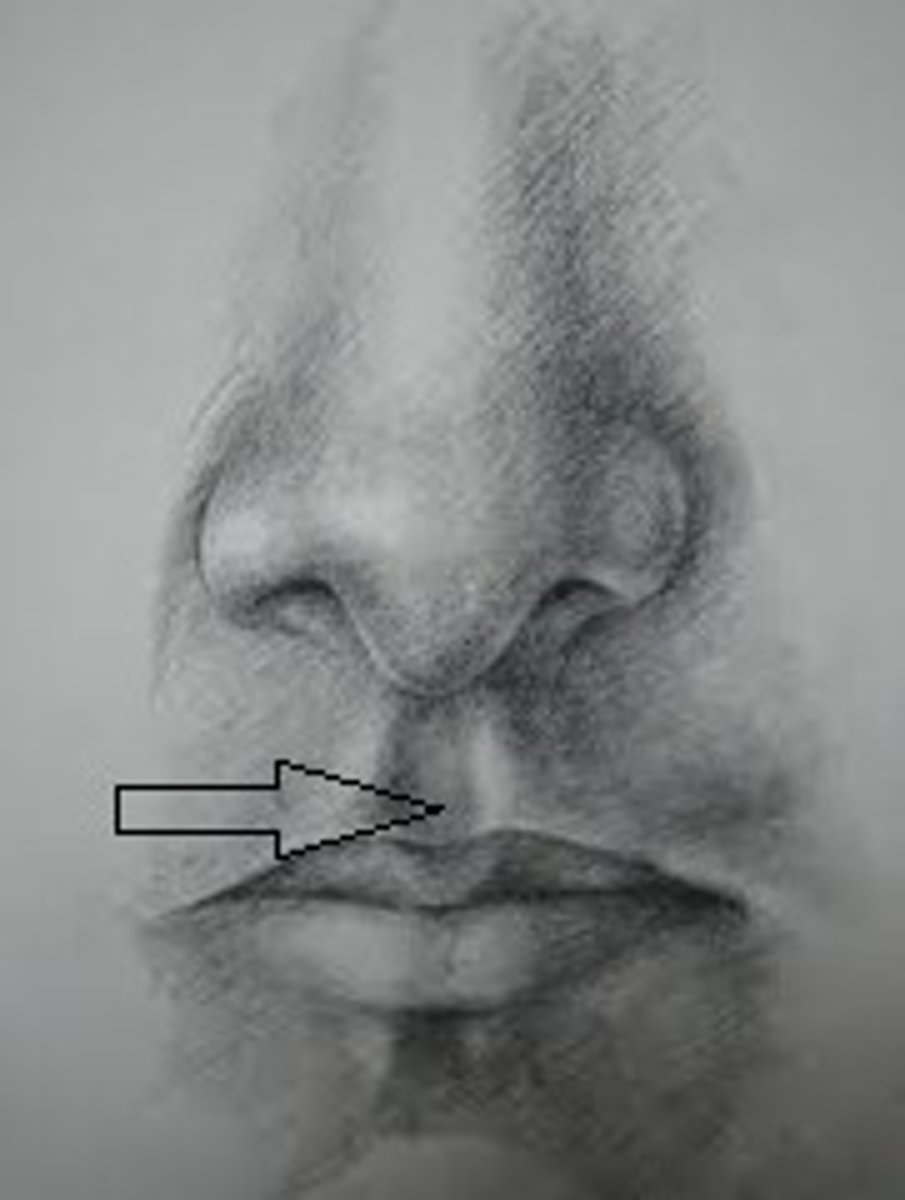
Vermilion Border - the distinct line where the pinkish-red vermilion of the lips meets the surrounding facial skin
What is this?
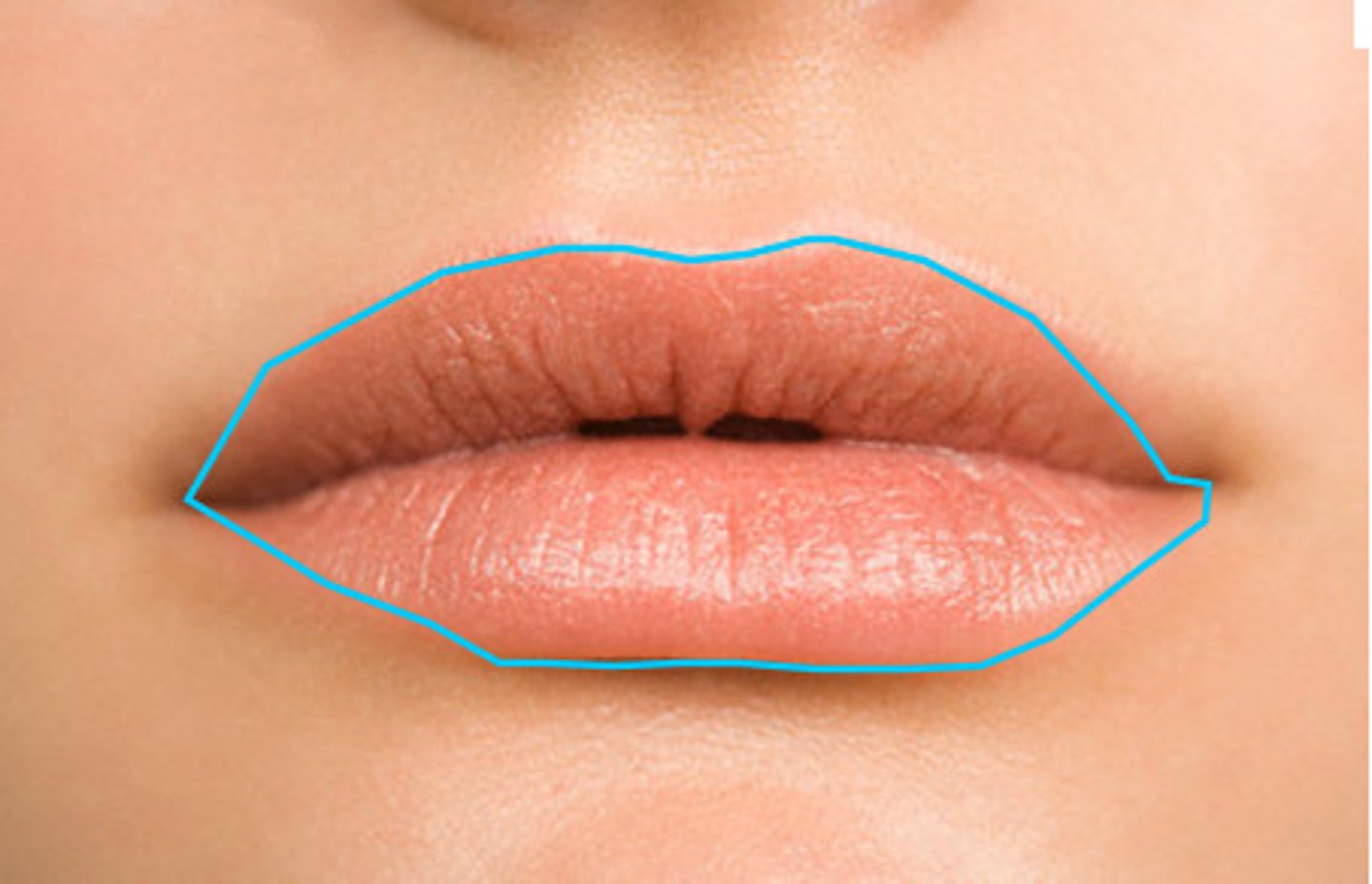
commissures
What is this?
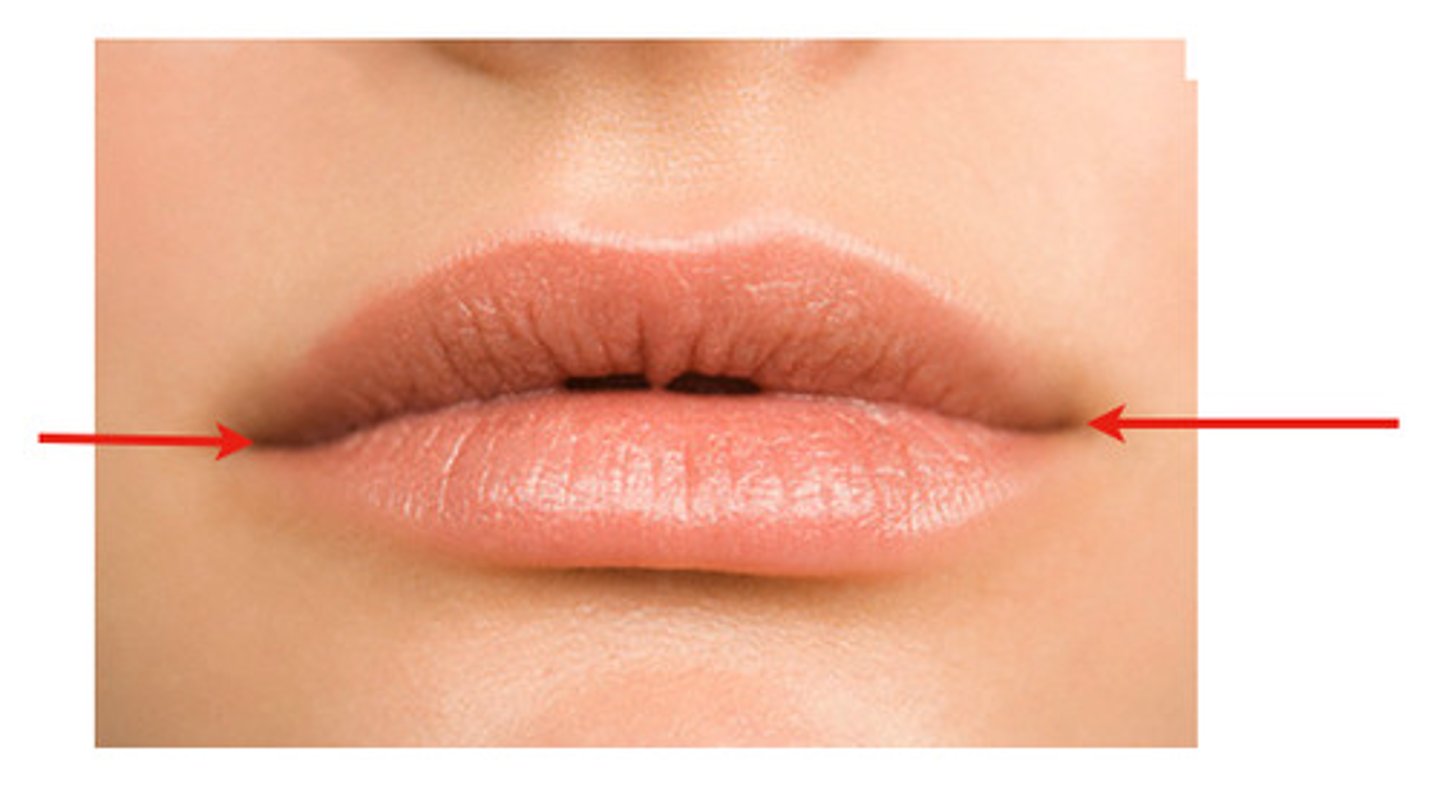
Wet line - the anatomical boundary where the pinkish, moist vermilion of the lip transitions into the more mucous membrane of the oral cavity
What is this?
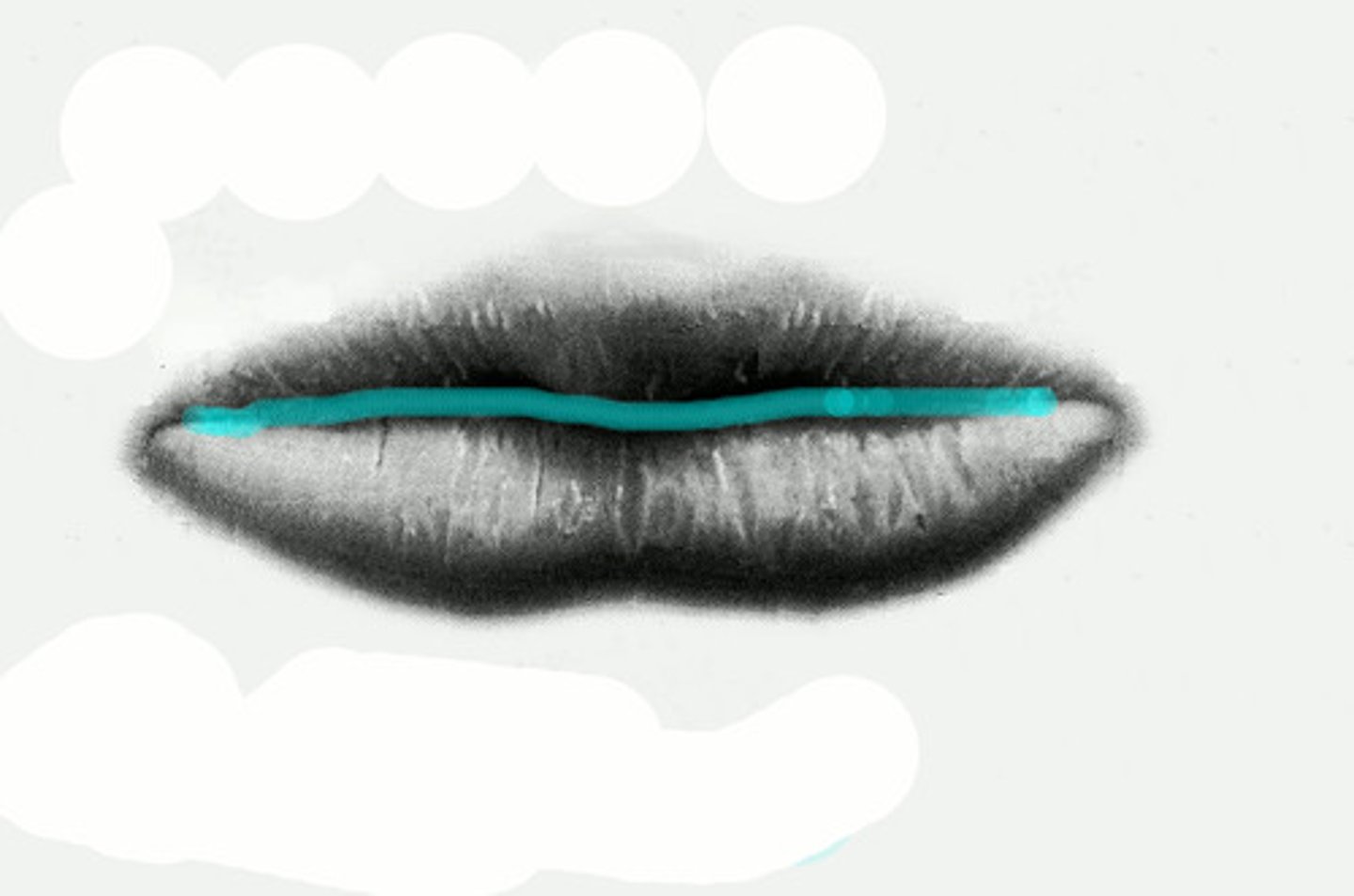
Carotid artery
What is this?

Zygomatic bone - the cheekbone, is a paired bone located on the lateral (outer) side of the face
What is this?
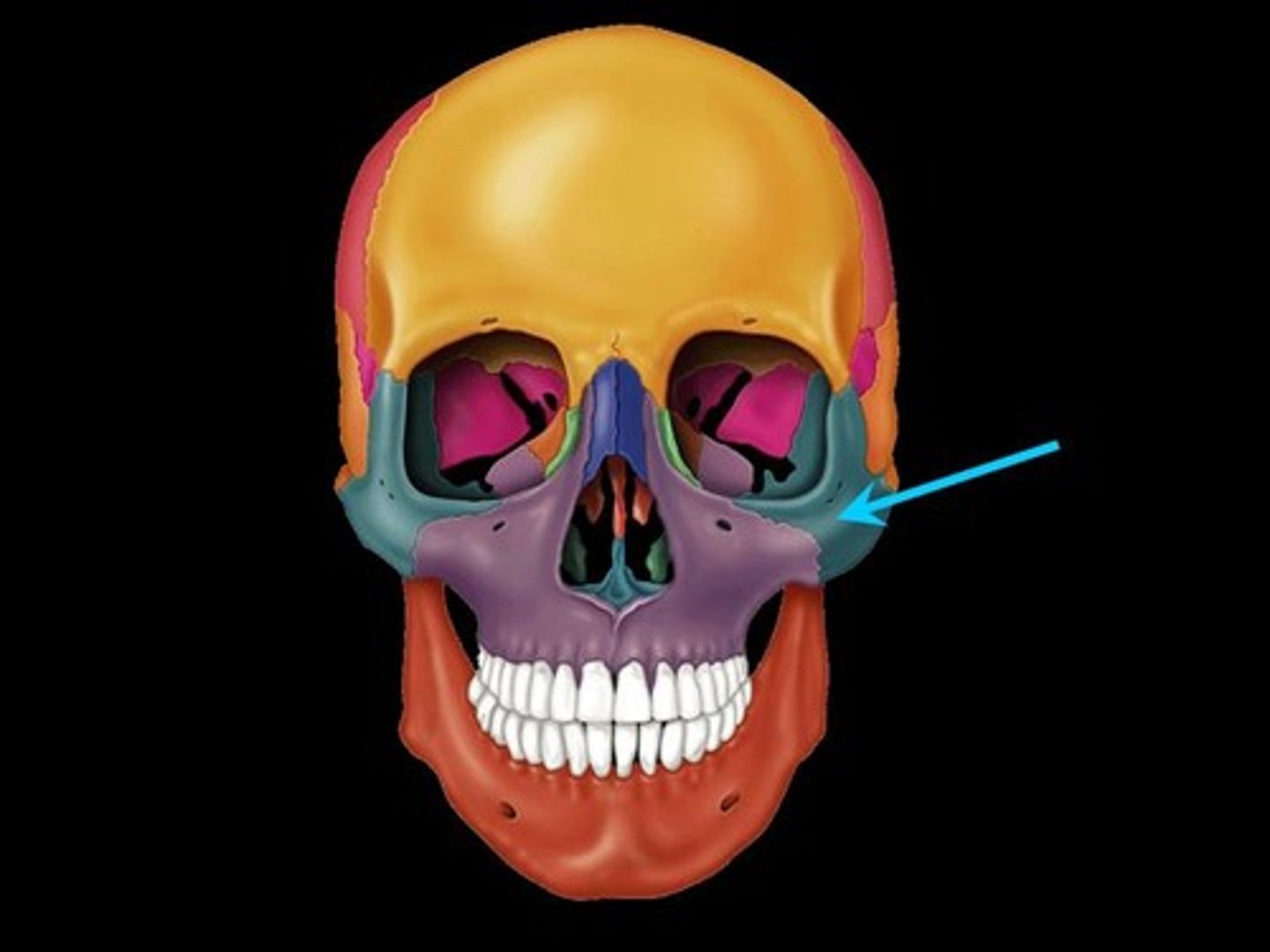
oral vestibule - the space in the mouth located between the lips and cheeks externally, and the teeth and gums internally
What is 10?
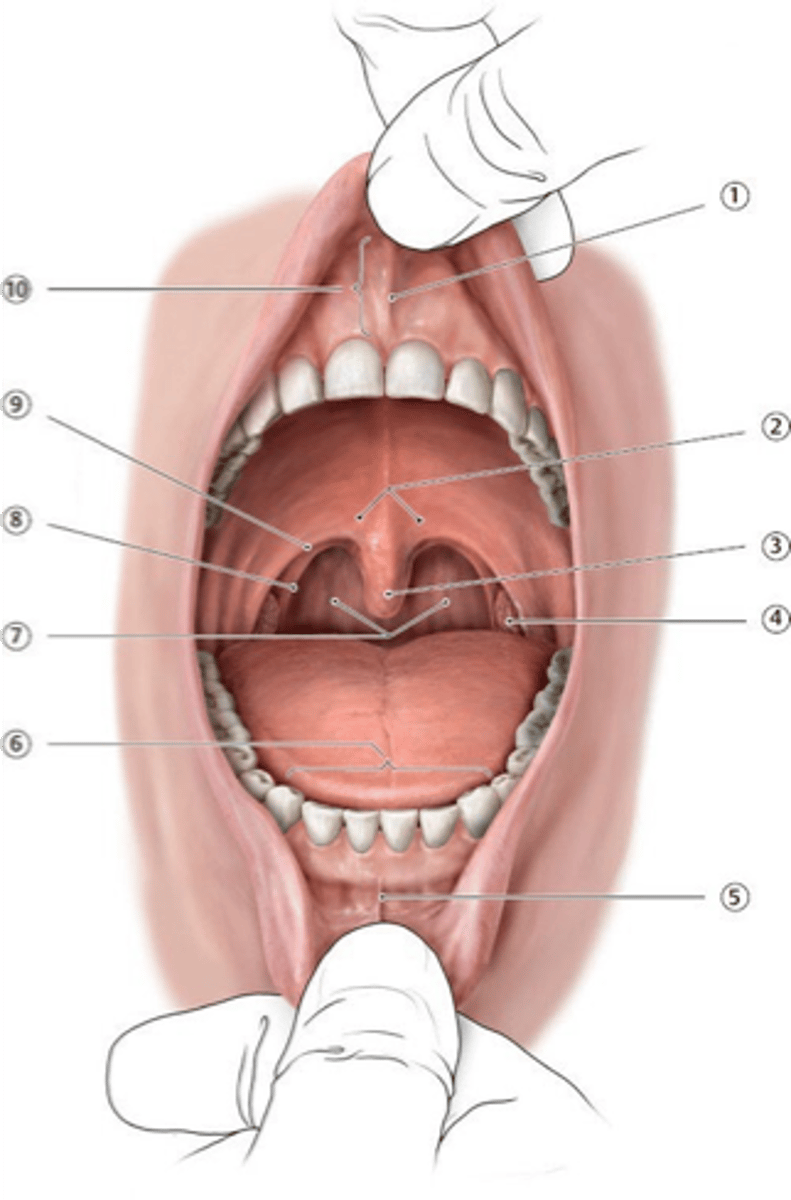
Frenulum of upper lip/Frenulum of lower lip
What is #1/5?
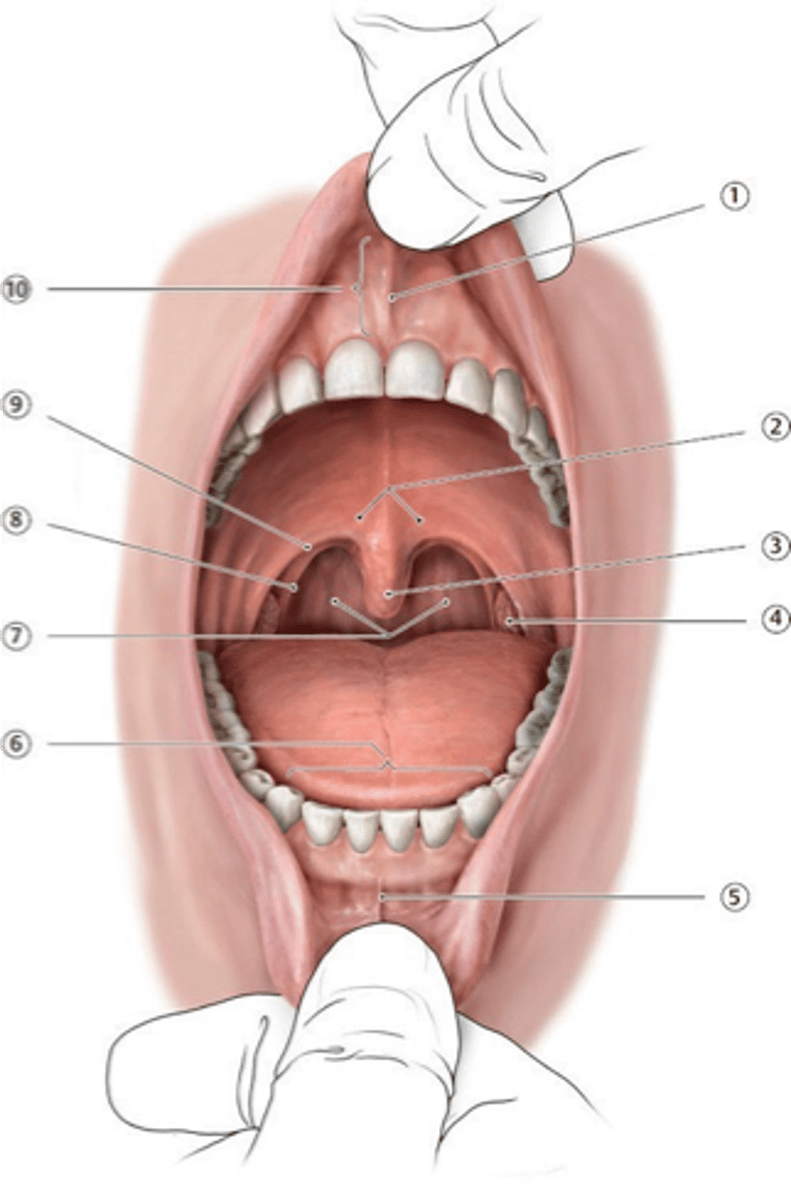
Soft palate - the muscular, flexible area at the back of the roof of your mouth
What is 2?
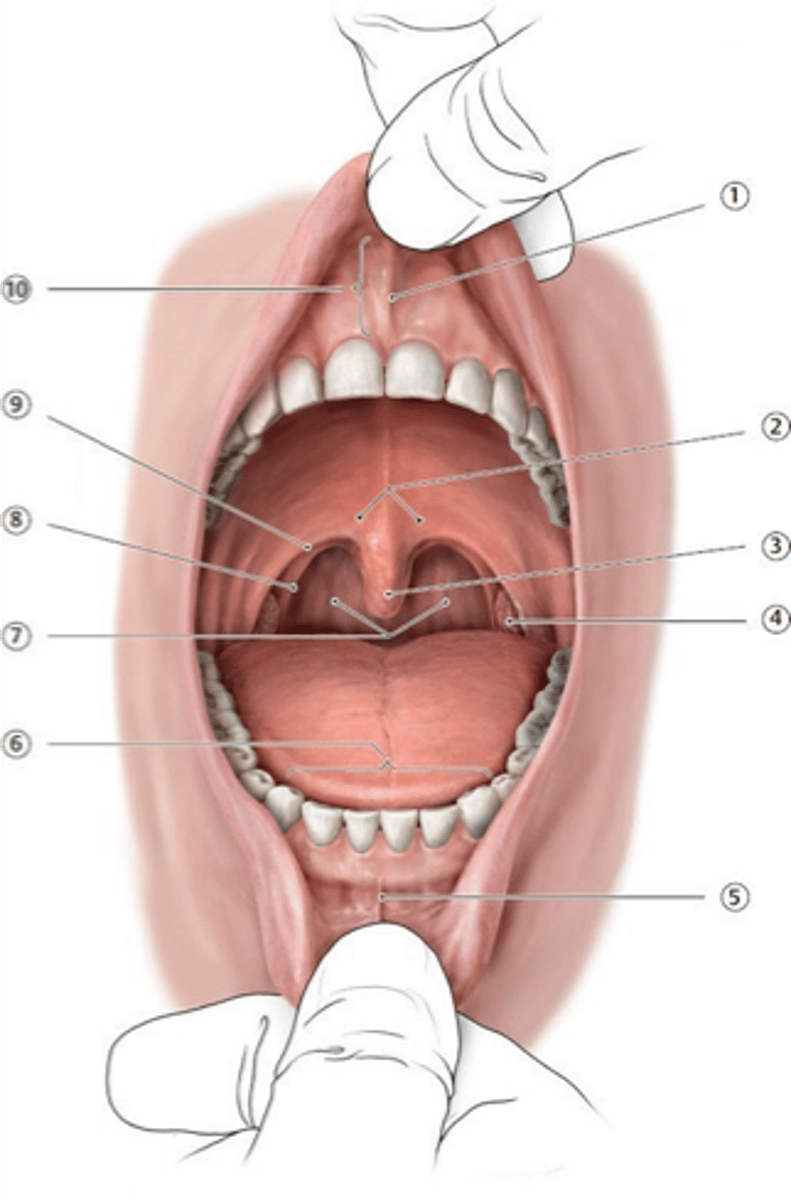
Uvula
What is 3?

Palatine tonsil
What is 4?
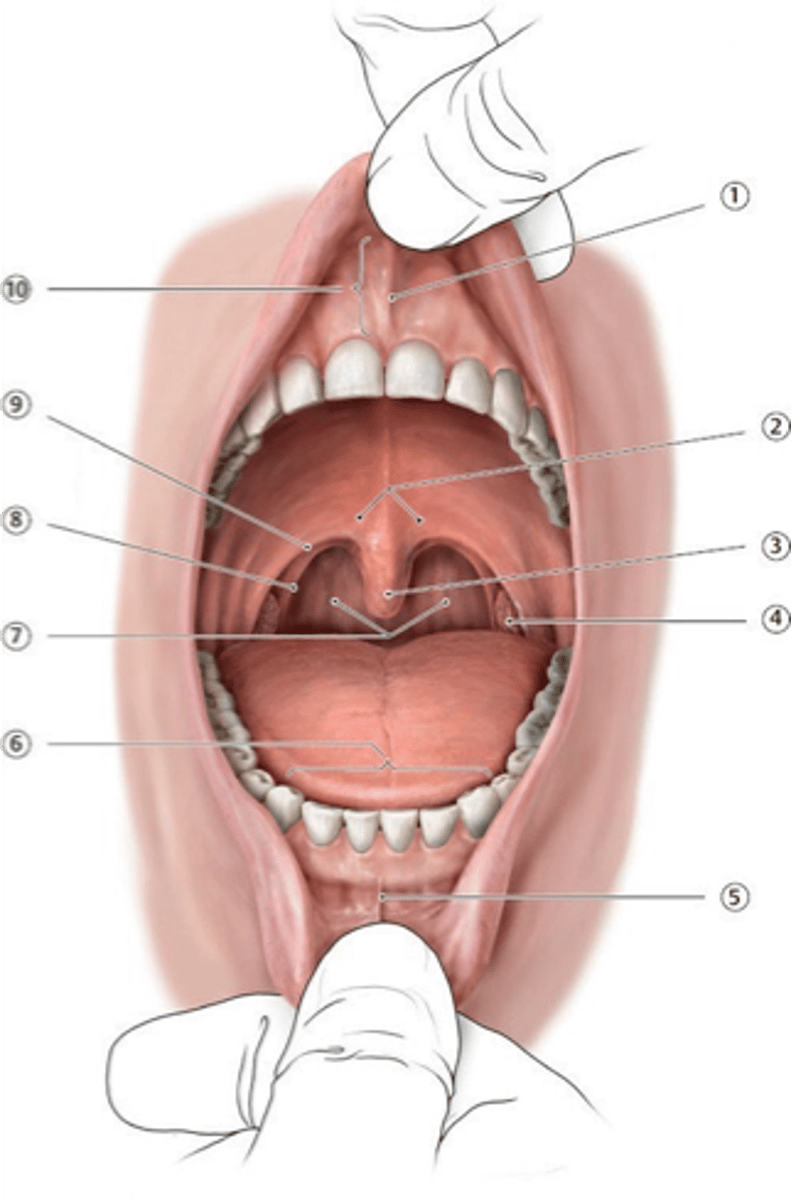
Oropharyngeal isthums
What is 7?
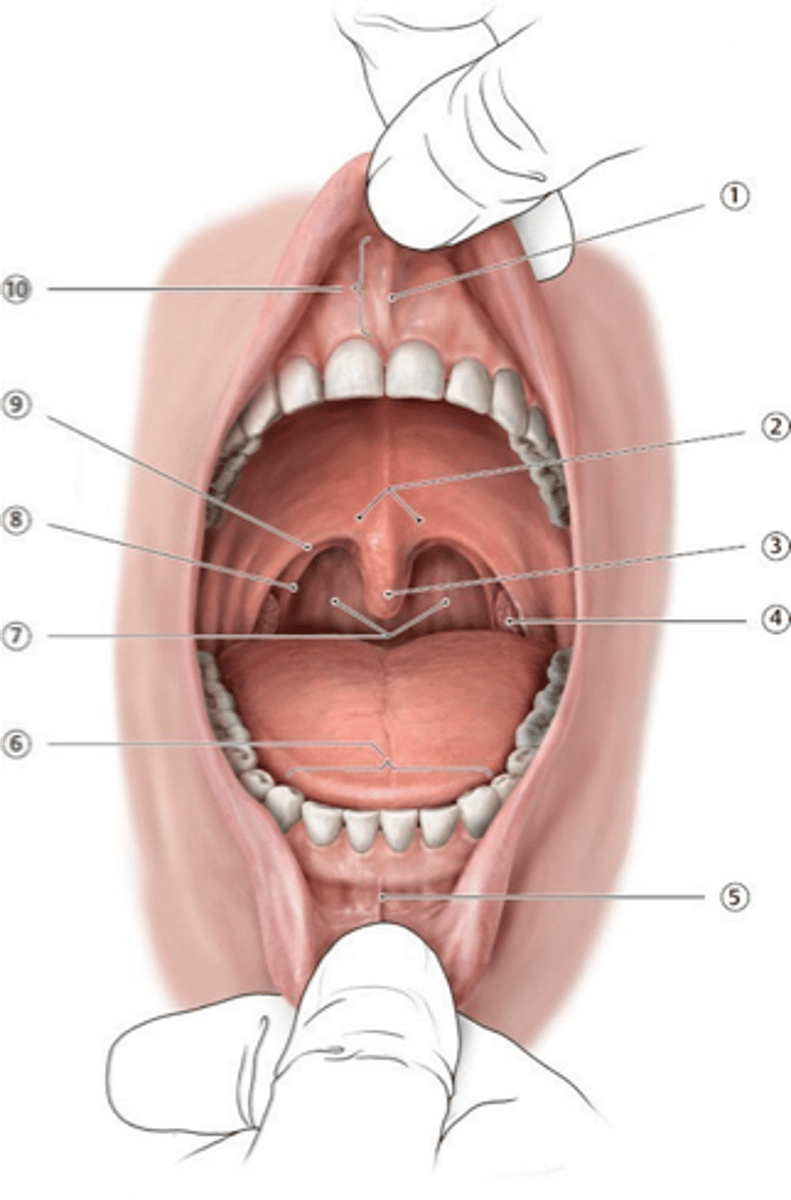
Palatopharyngeal fold/arch/pillar
What is 8?
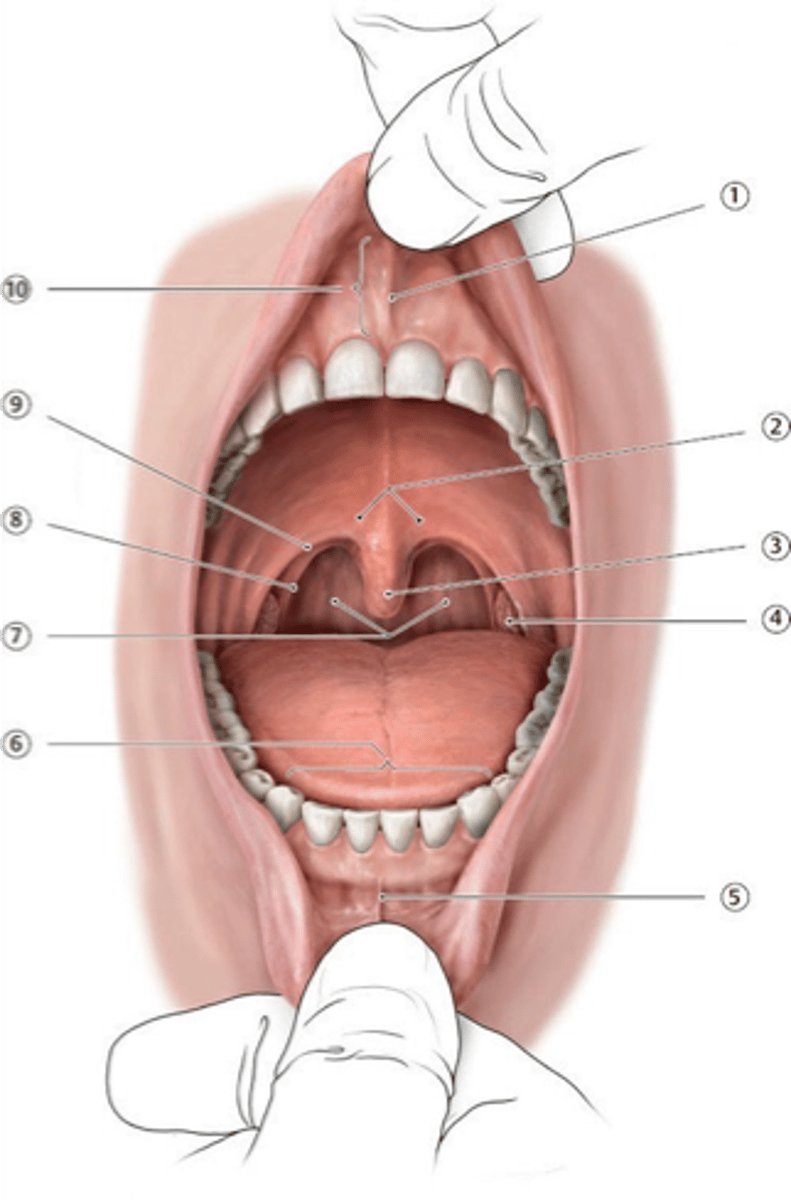
Palatoglossal fold/arch/pillar
What is 9?
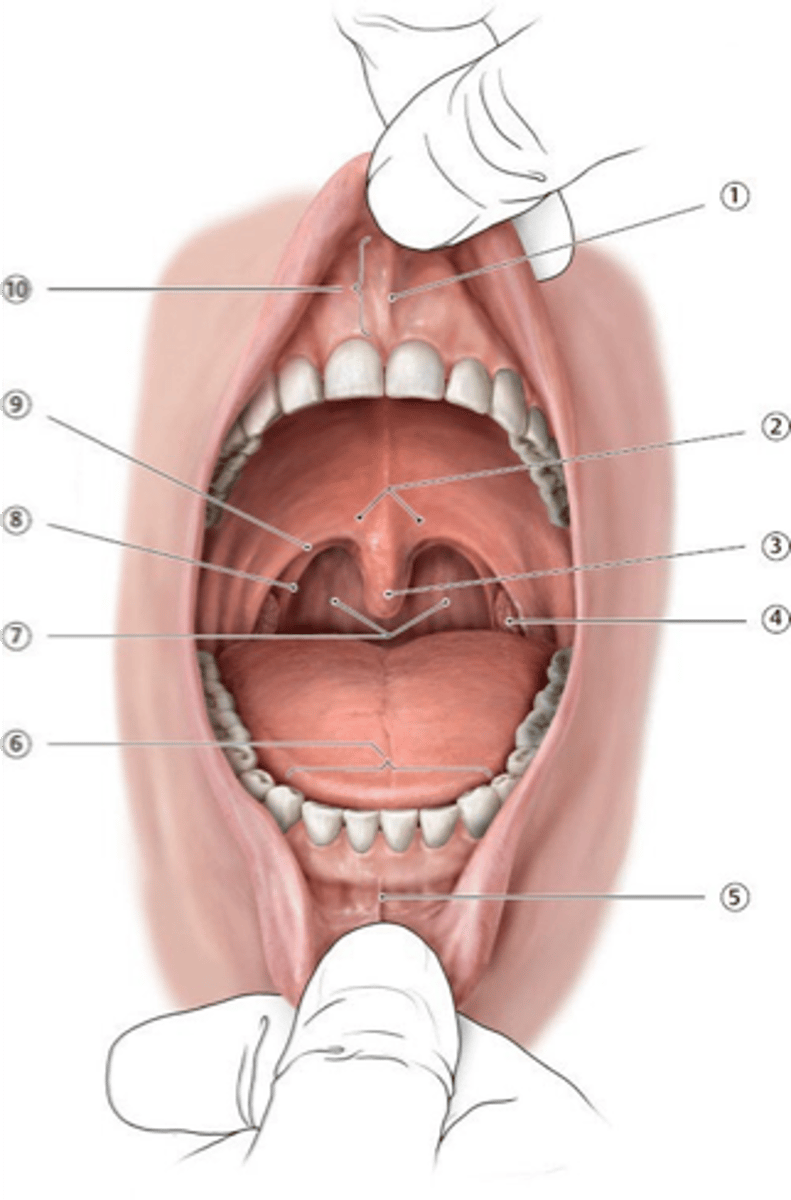
Palatine Raphe (median raphe, median palatine raphe) - The palatine raphe is a visible, raised line of tissue on the hard palate
What is this?
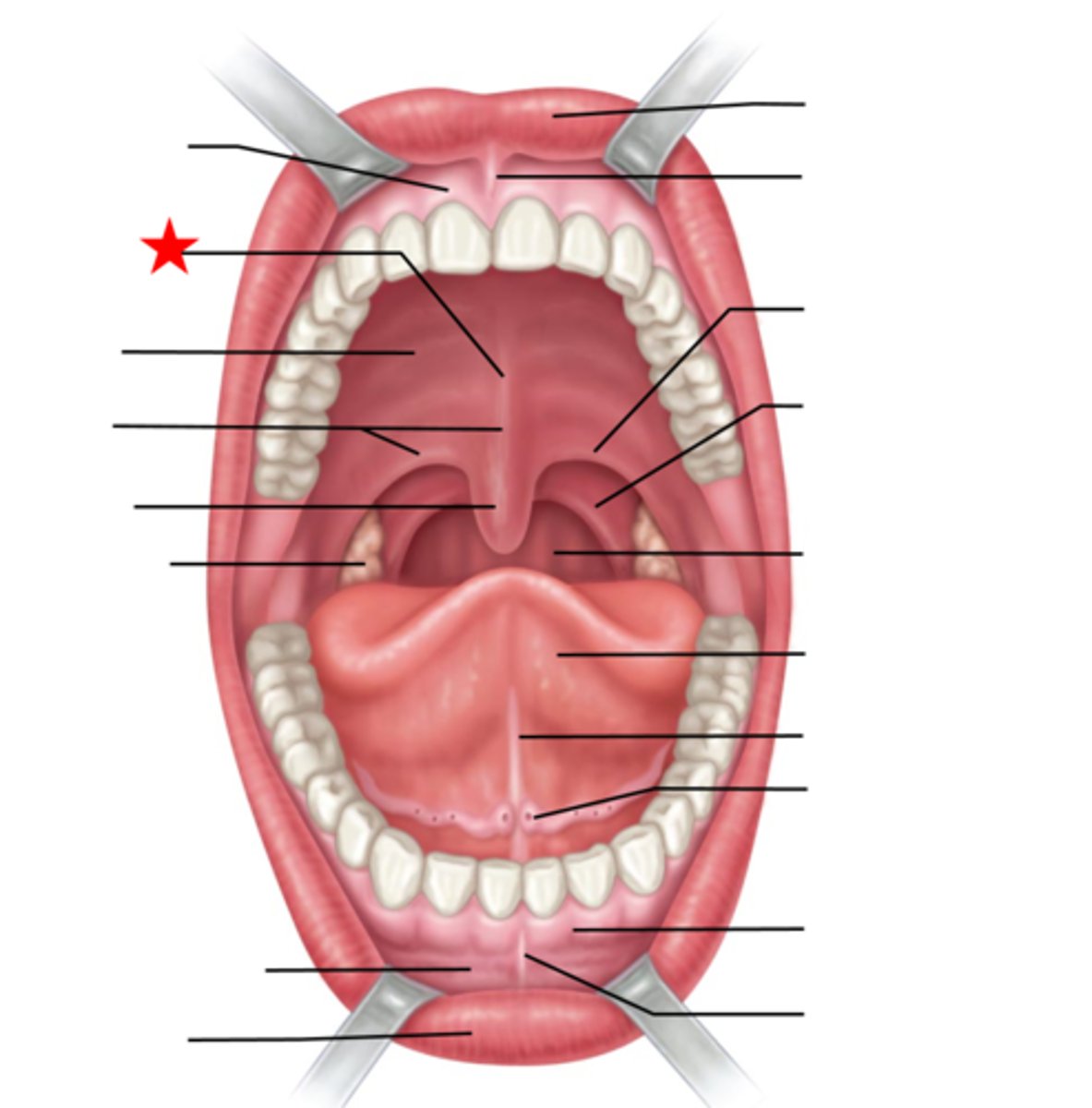
Median (midpalatal, intermaxillary, palatine suture) - midpalatal suture is the underlying bony structure where the two halves of the hard palate fuse
What is this?
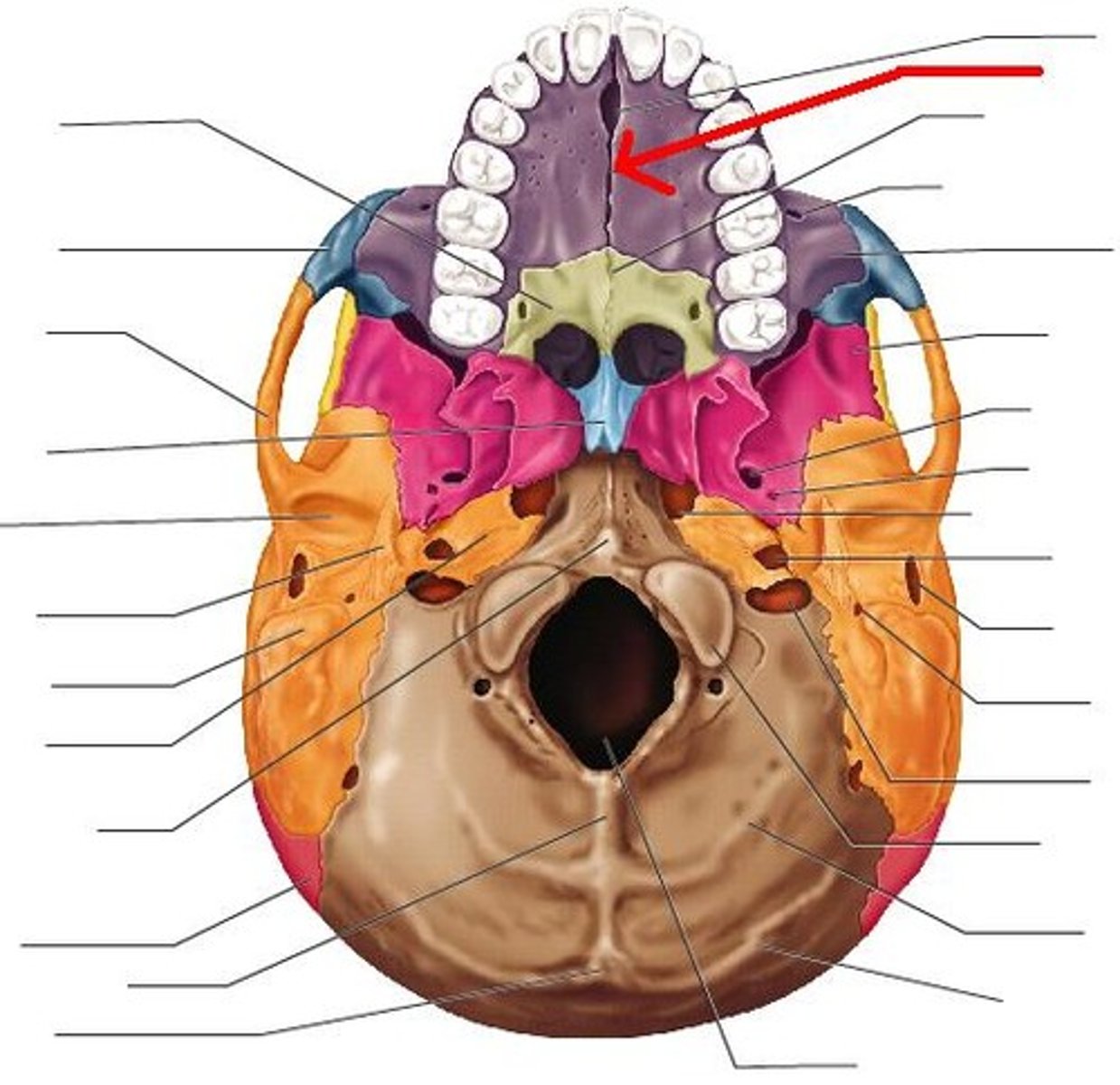
Median (intermaxillary) palatine suture
What is 2?
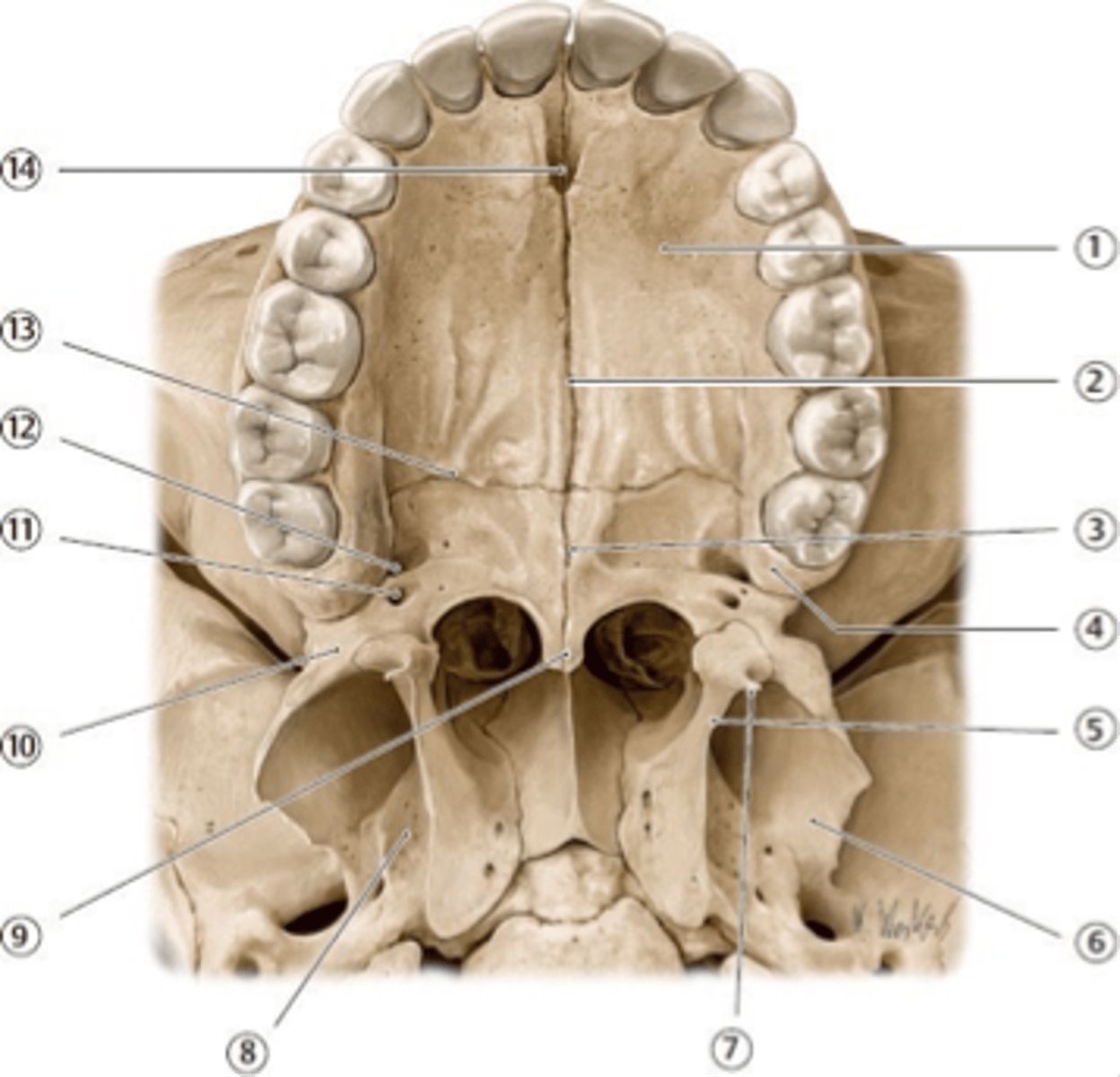
Maxillary tuberosity - a rounded bony prominence located on the maxilla (upper jawbone), specifically behind the last molar
What is #4?
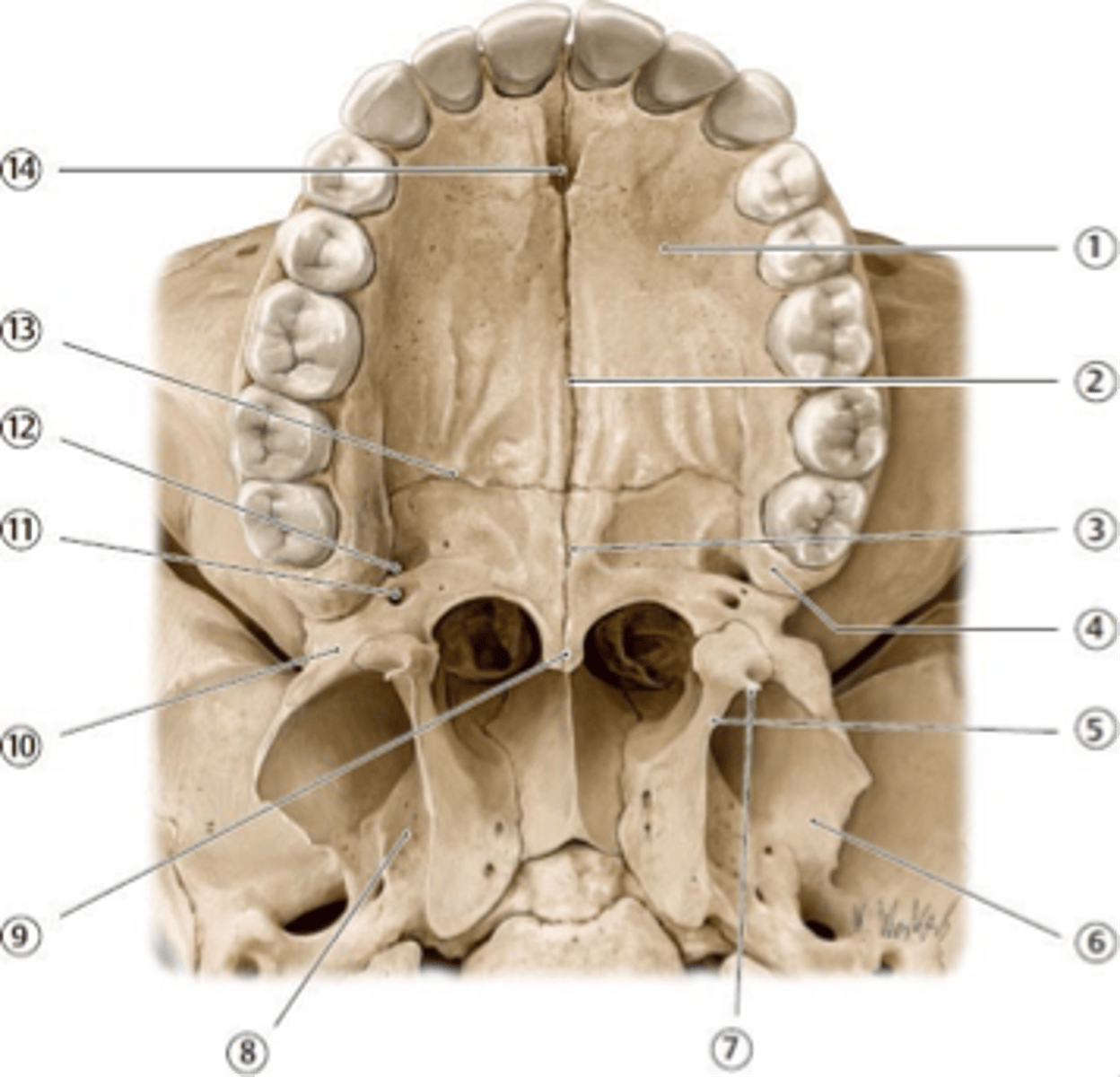
Incisive Fossa - a shallow depression on the underside of the bony hard palate, located behind the incisor teeth
What is #14?
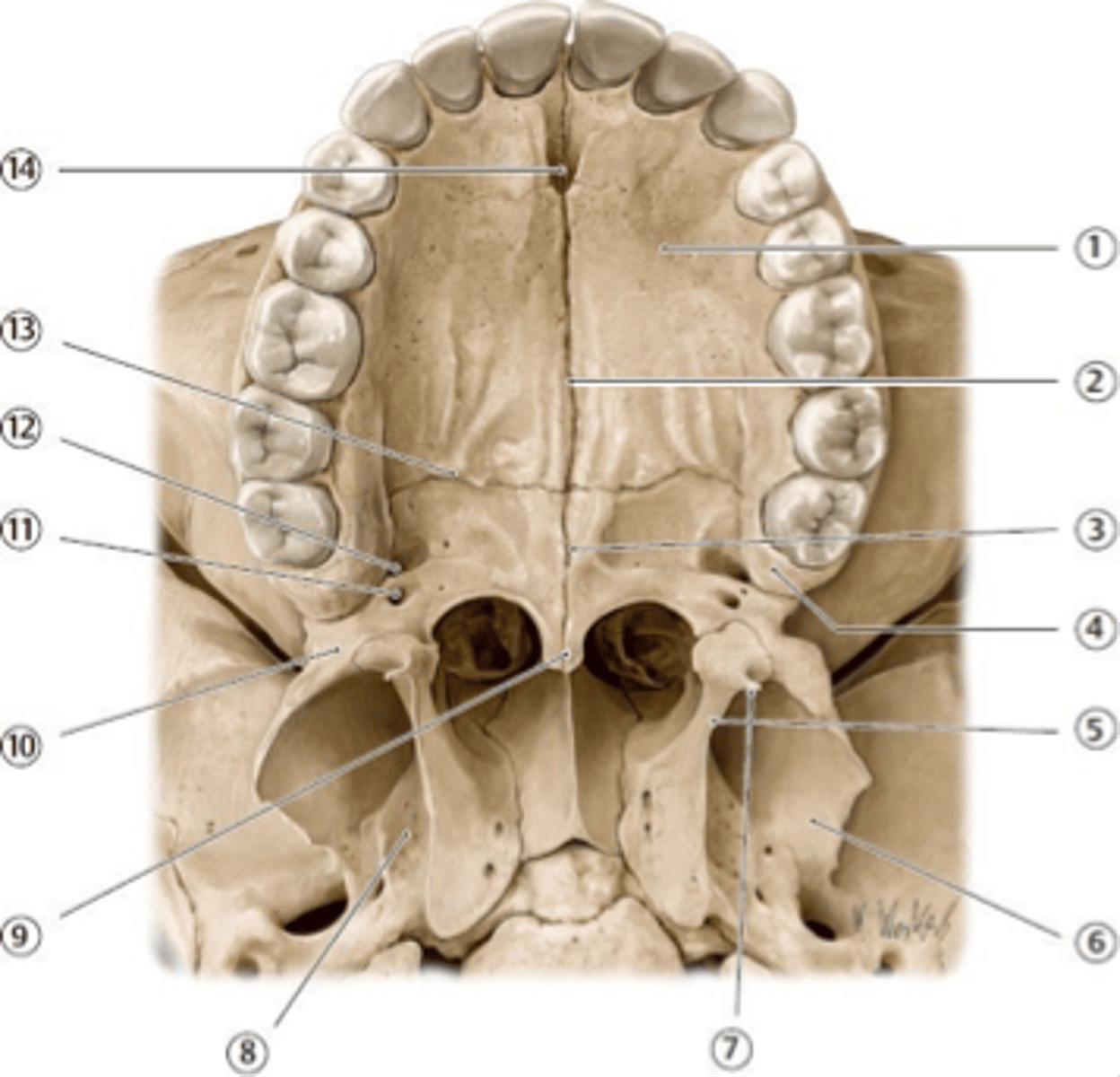
Rugae (palatal rugae) - raised, asymmetric ridges of tissue on the anterior (front) portion of the hard palate, the roof of the mouth
What is #1?
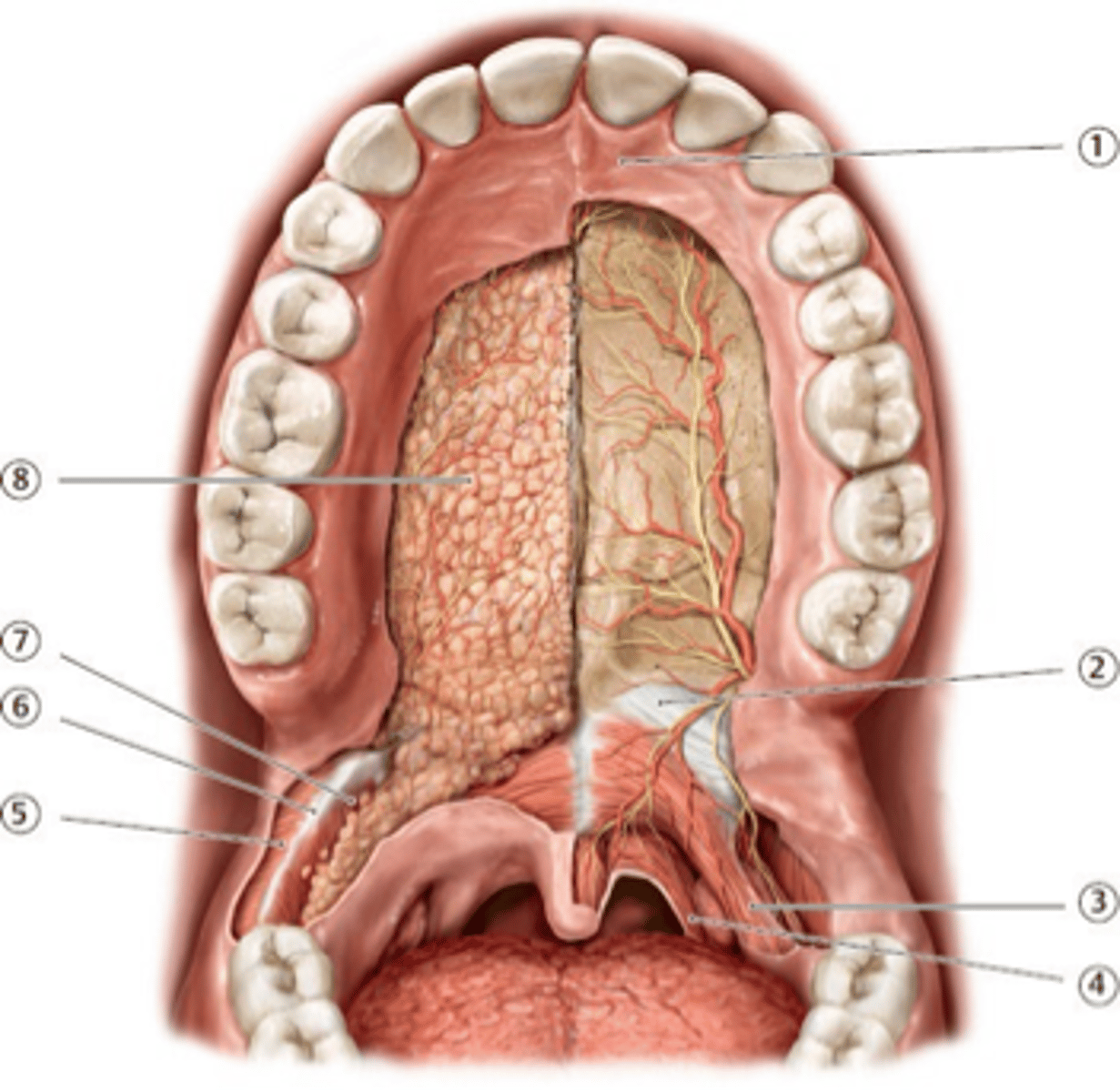
Palatoglossus - a muscle located in the mouth that plays a role in swallowing and speech
What is #3?

Palatopharyngeus - a muscle involved in swallowing and speech
What is 4
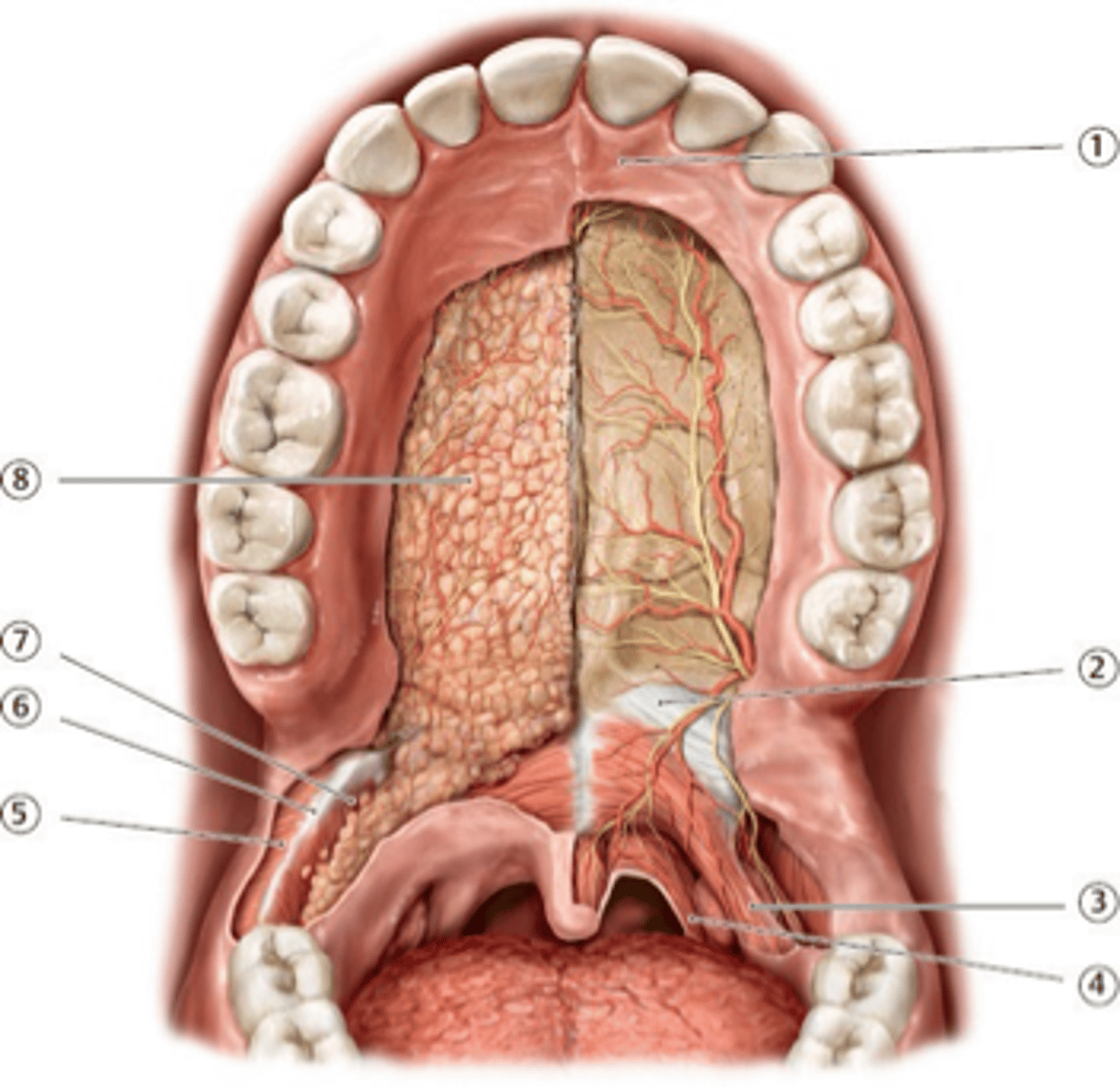
Buccinator - a flat, thin muscle in the wall of the cheek
What is 5?
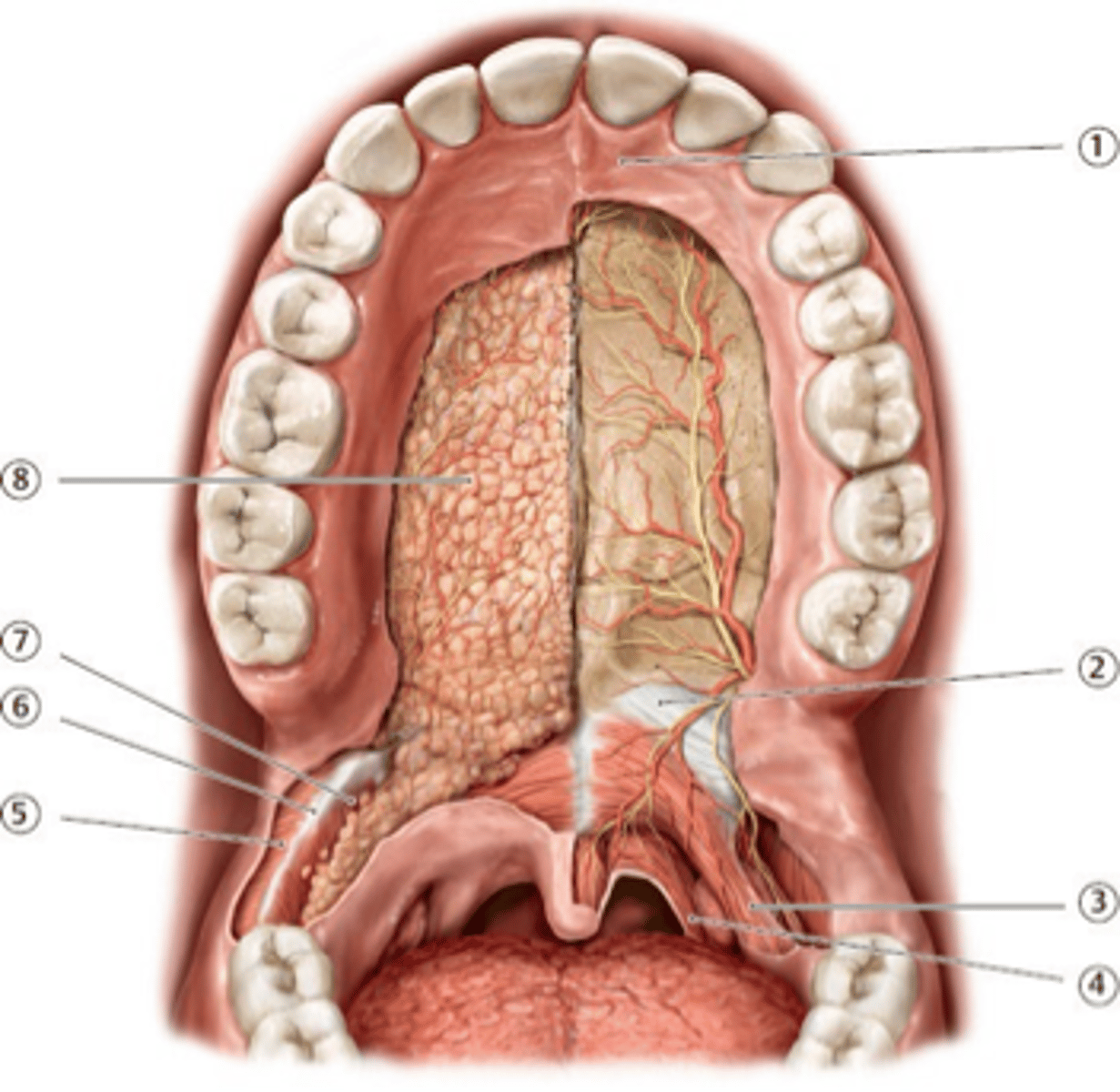
Pterygomandibular raphe/fold - a thin, fibrous band of connective tissue located in the oral cavity -
What is 6

fovea palatini - Two small pits in the anterior part of the soft palate. There is one on each side of the midline
What is this?
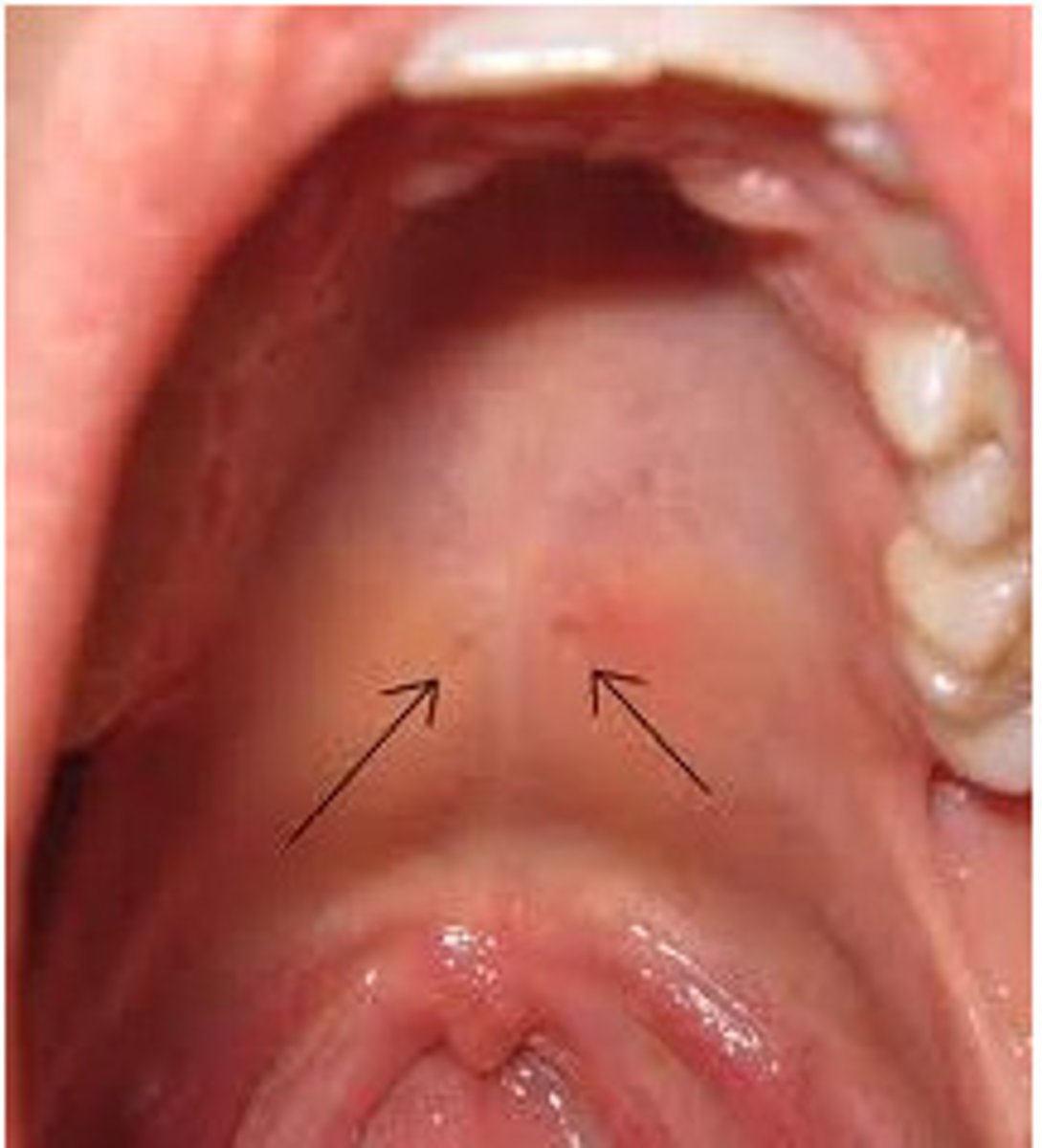
Buccal fat pad
What is this?
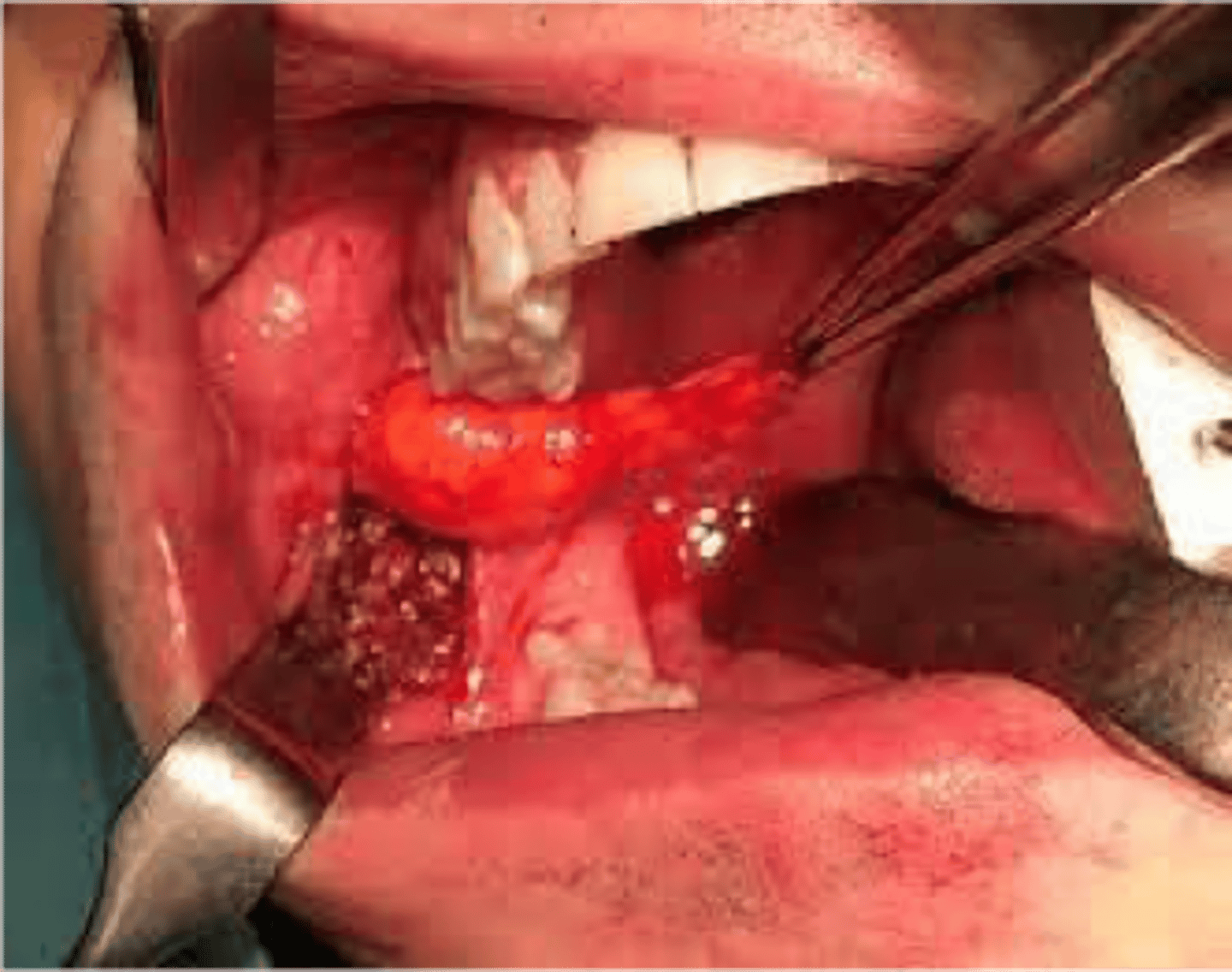
serves as an important landmark for an inferior alveolar nerve block.
What is the pterygomandibular fold important for?
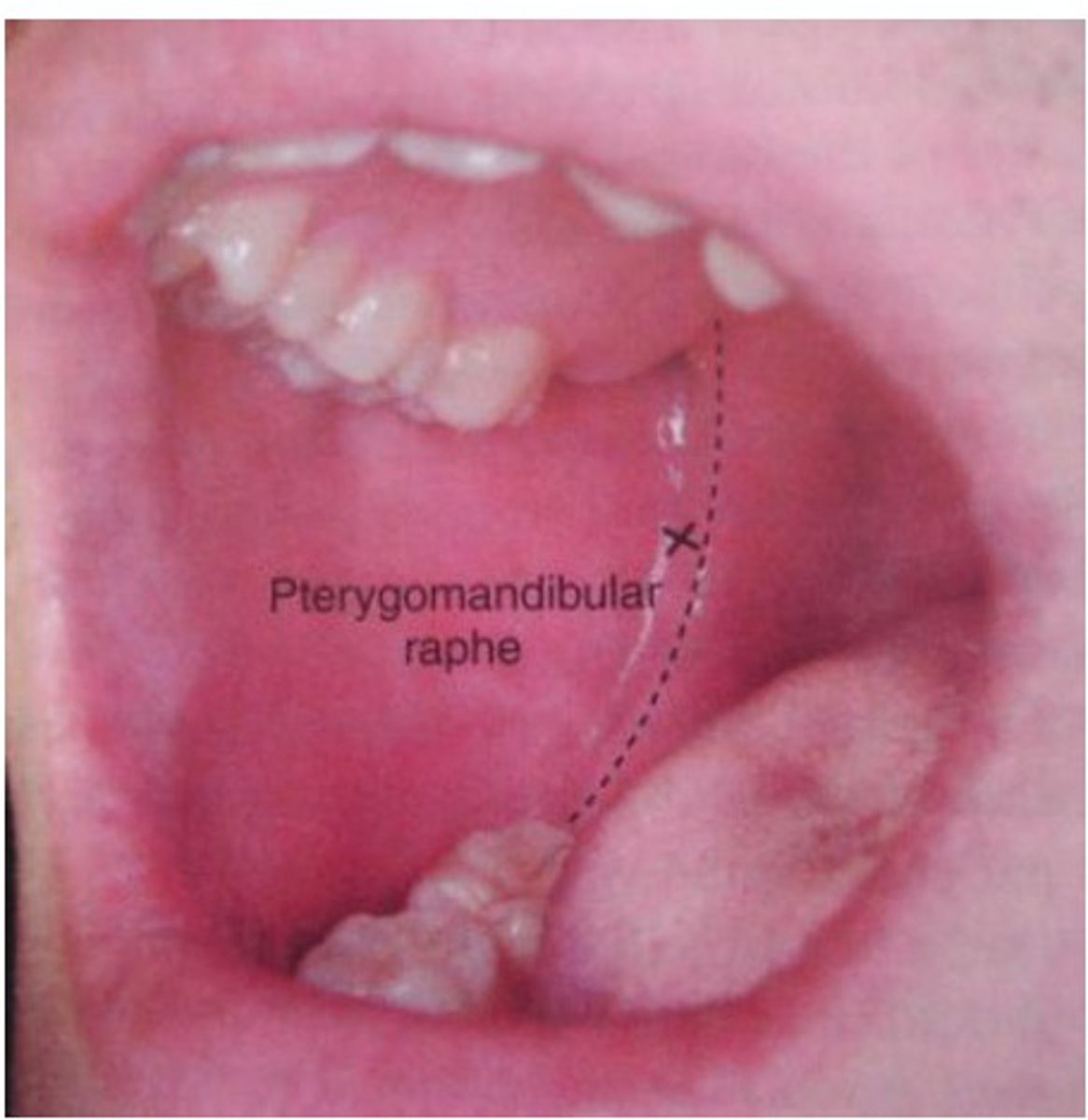
The pterygomandibular raphe is a fibrous band of the buccopharyngeal fascia. The pterygomandibular fold is the visible intraoral ridge produced by the underlying pterygomandibular raphe.
Difference between pterygomandibular raphe vs. fold
- deep to masseter and runs perpendicular
- can be palpated intraorally
characteristics of buccinator
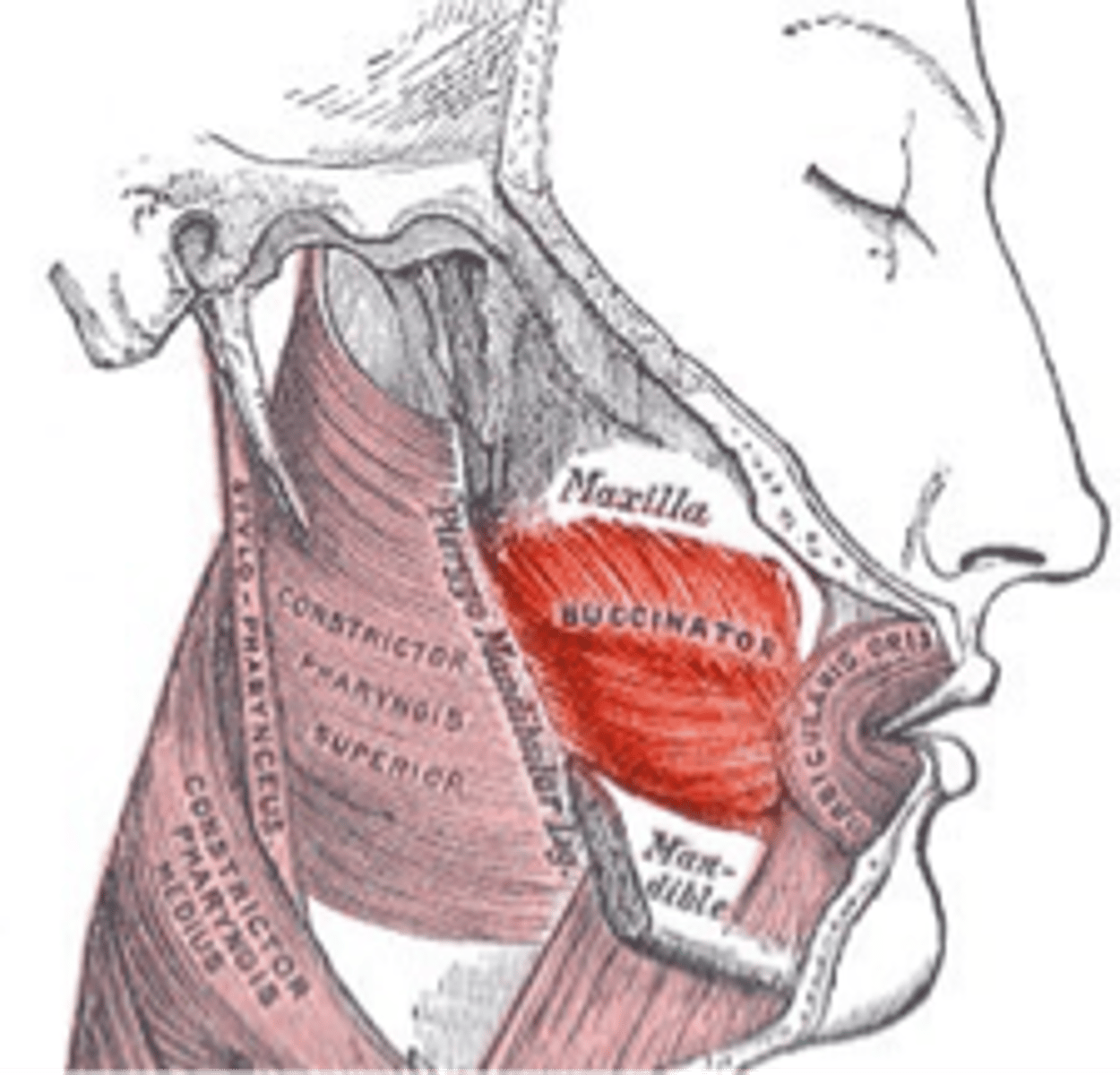
Retromolar pad - Soft tissue landmark at the most posterior part of the mandible
What is purple highlighted?
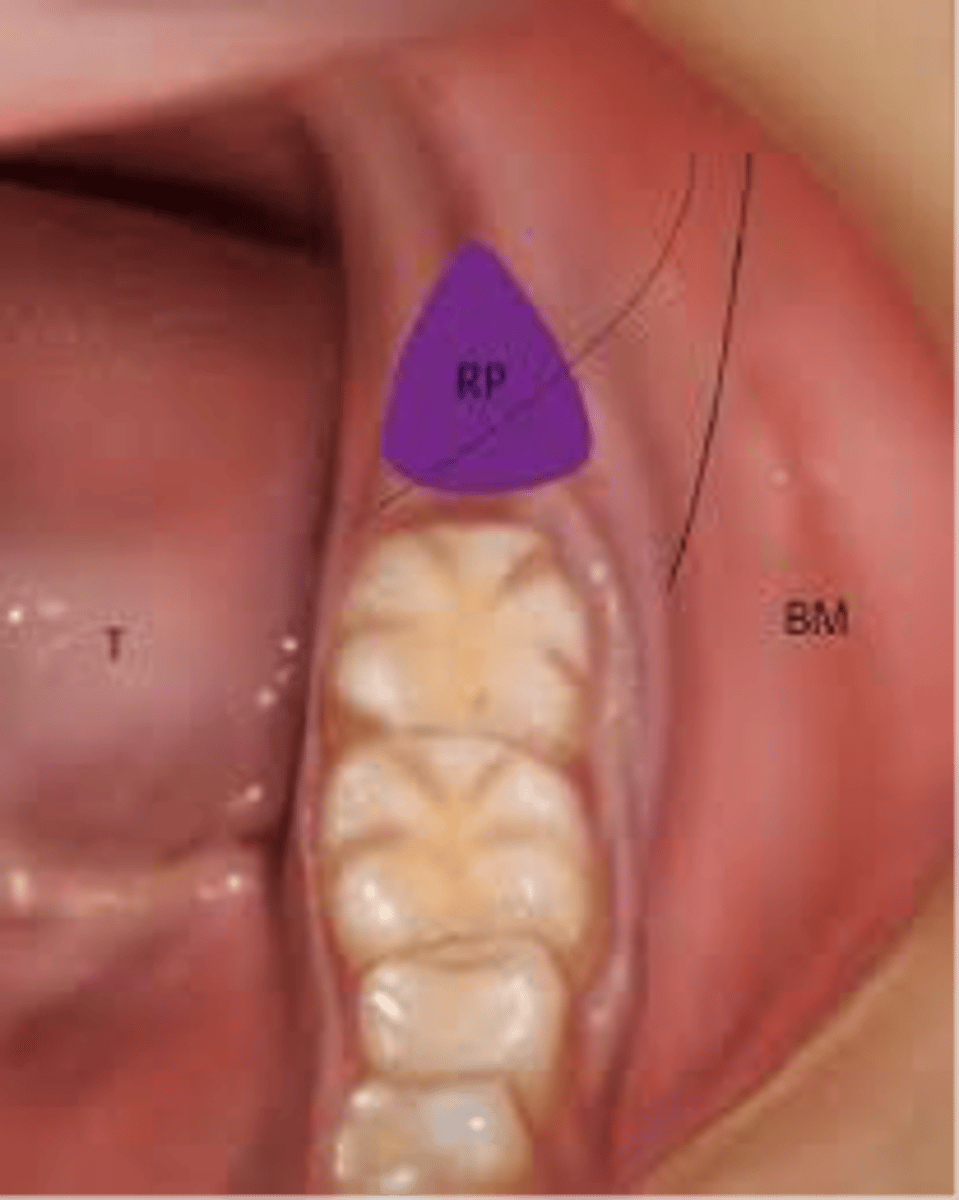
mylohyoid muscle - Along with geniohyoid, makes up the floor of the mouth
What is this?
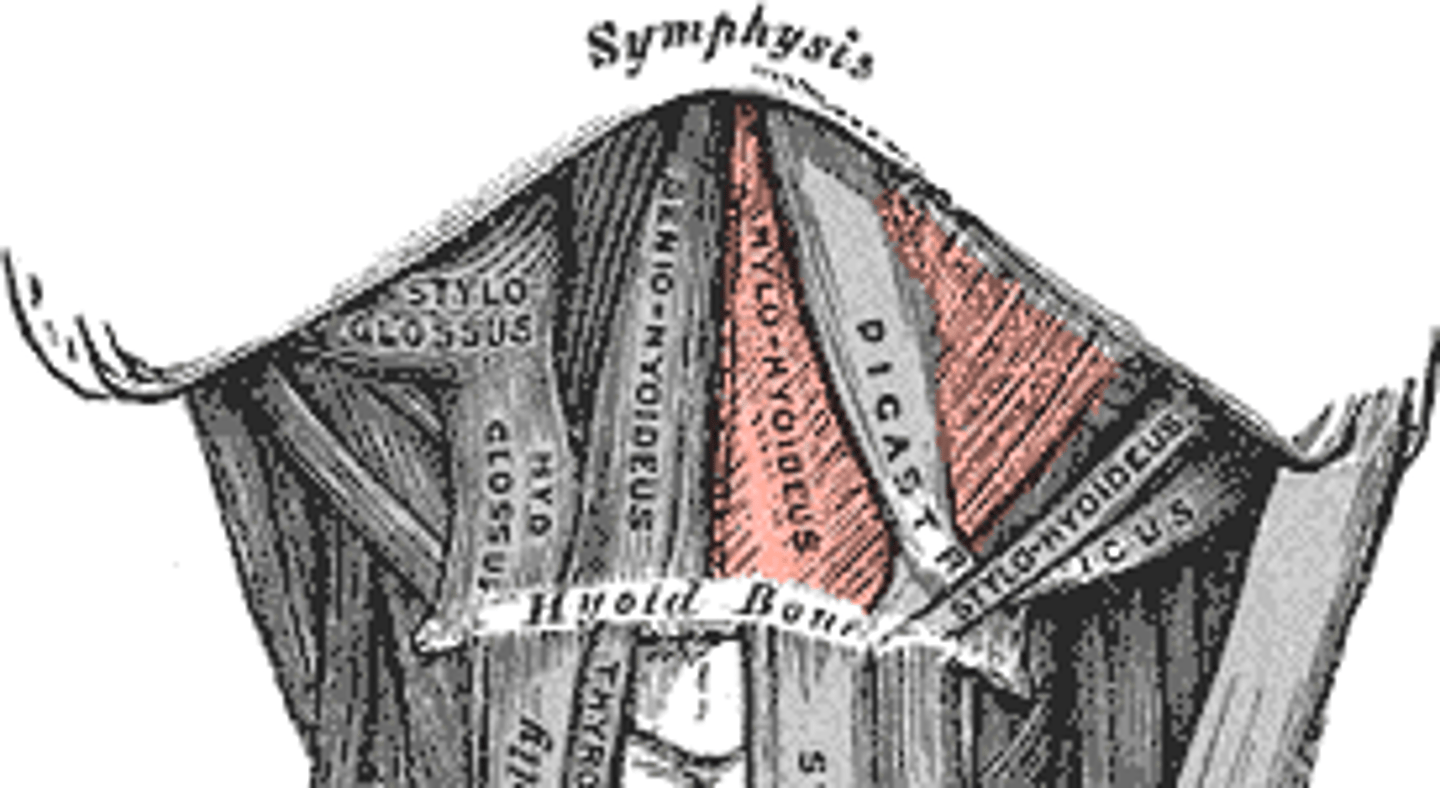
During extraction, maxillary tuberosity cracked (risk)
what happened here?
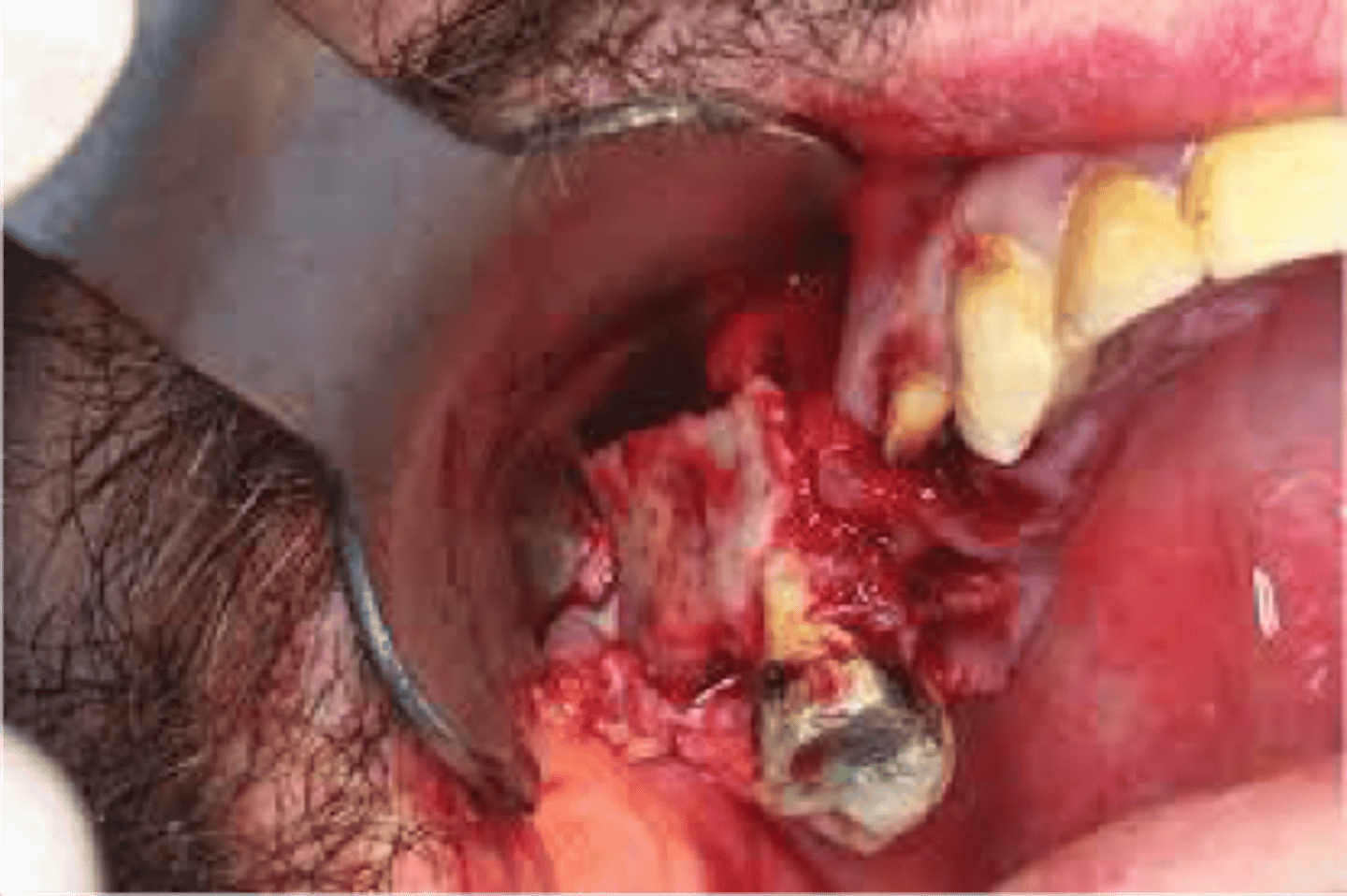
thin, non-keratinized
Everywhere except around the teeth
describe mucosa and where it is located
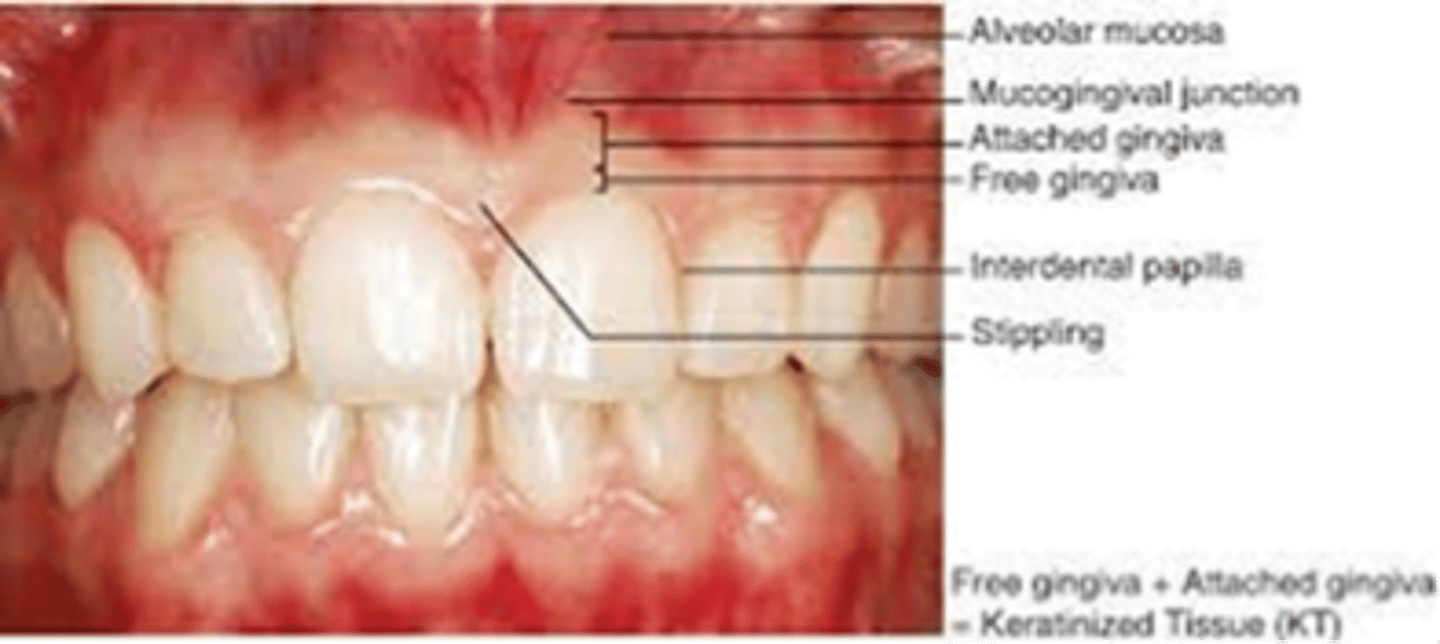
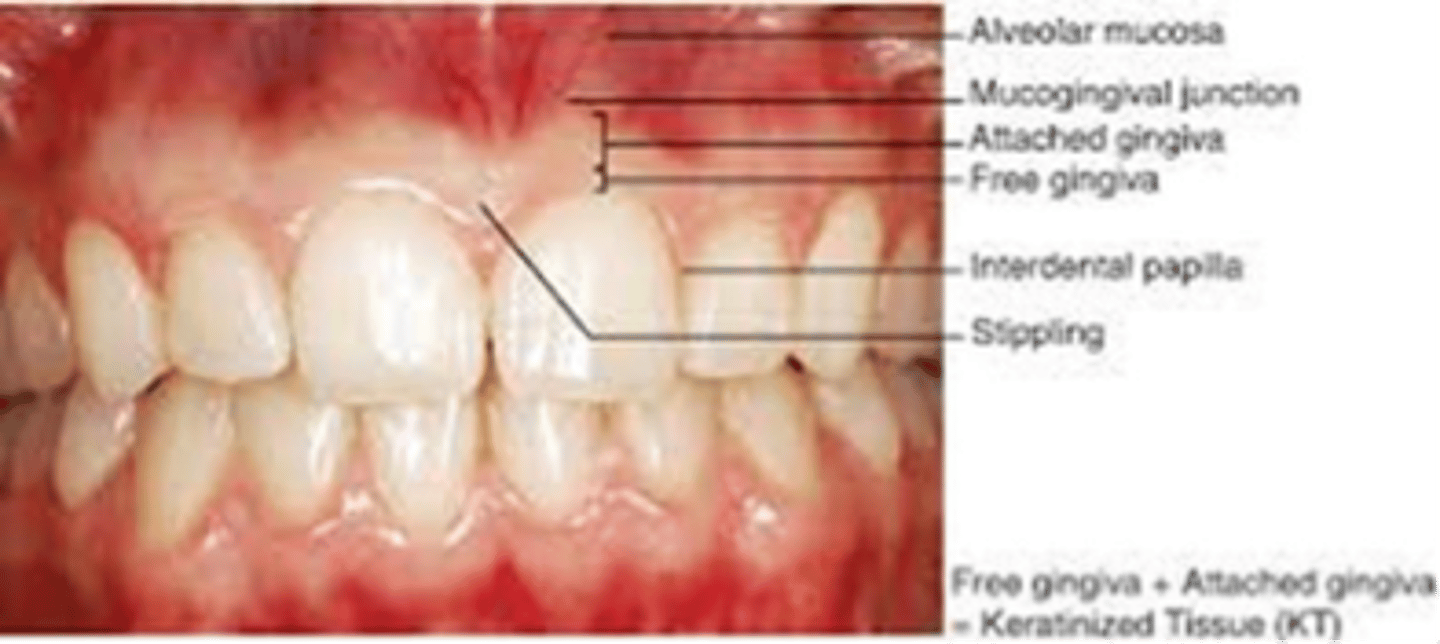
mucogingival junction - where mucosa meets gingiva
What is this?

gingival margin - the terminal edge of the gingiva that is around the teeth
What is C?
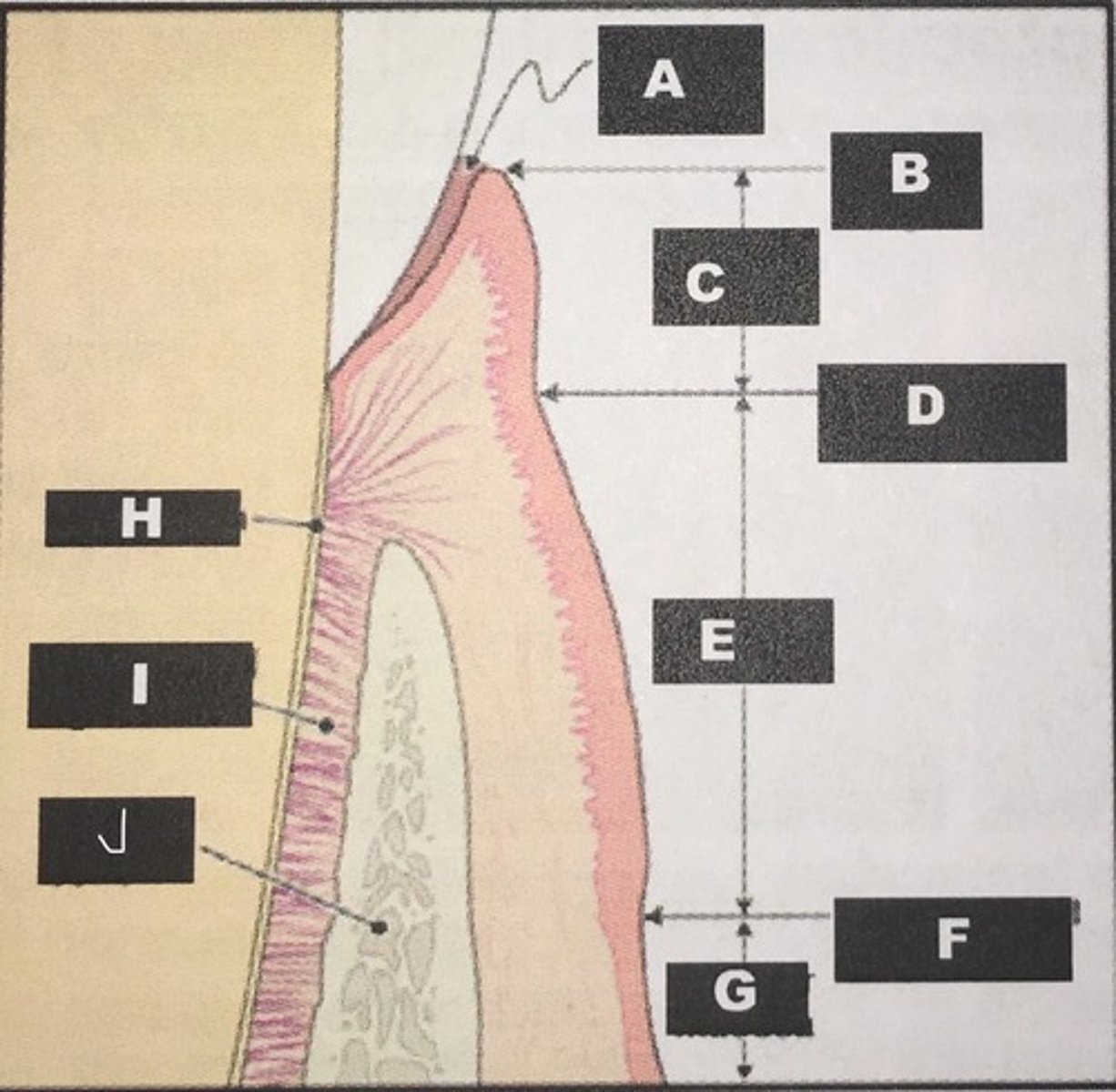
interdental papilla - the gingiva that scallops up between the teeth
What is this?

gingival sulcus - the gingiva that scallops up between the teeth
What is this?
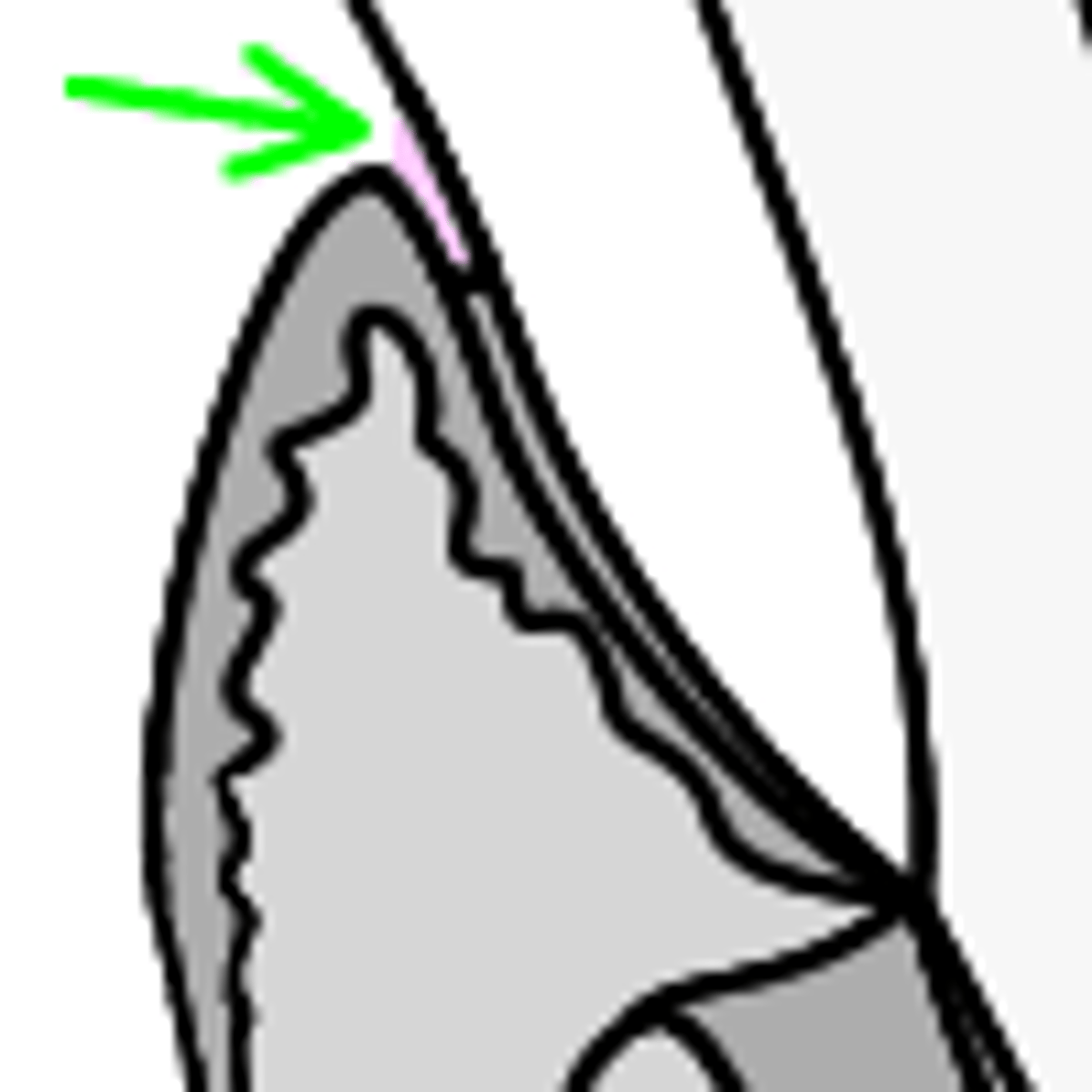
recession of gingiva - loss of soft tissue (and likely hard tissue underneath.
What's going on here?
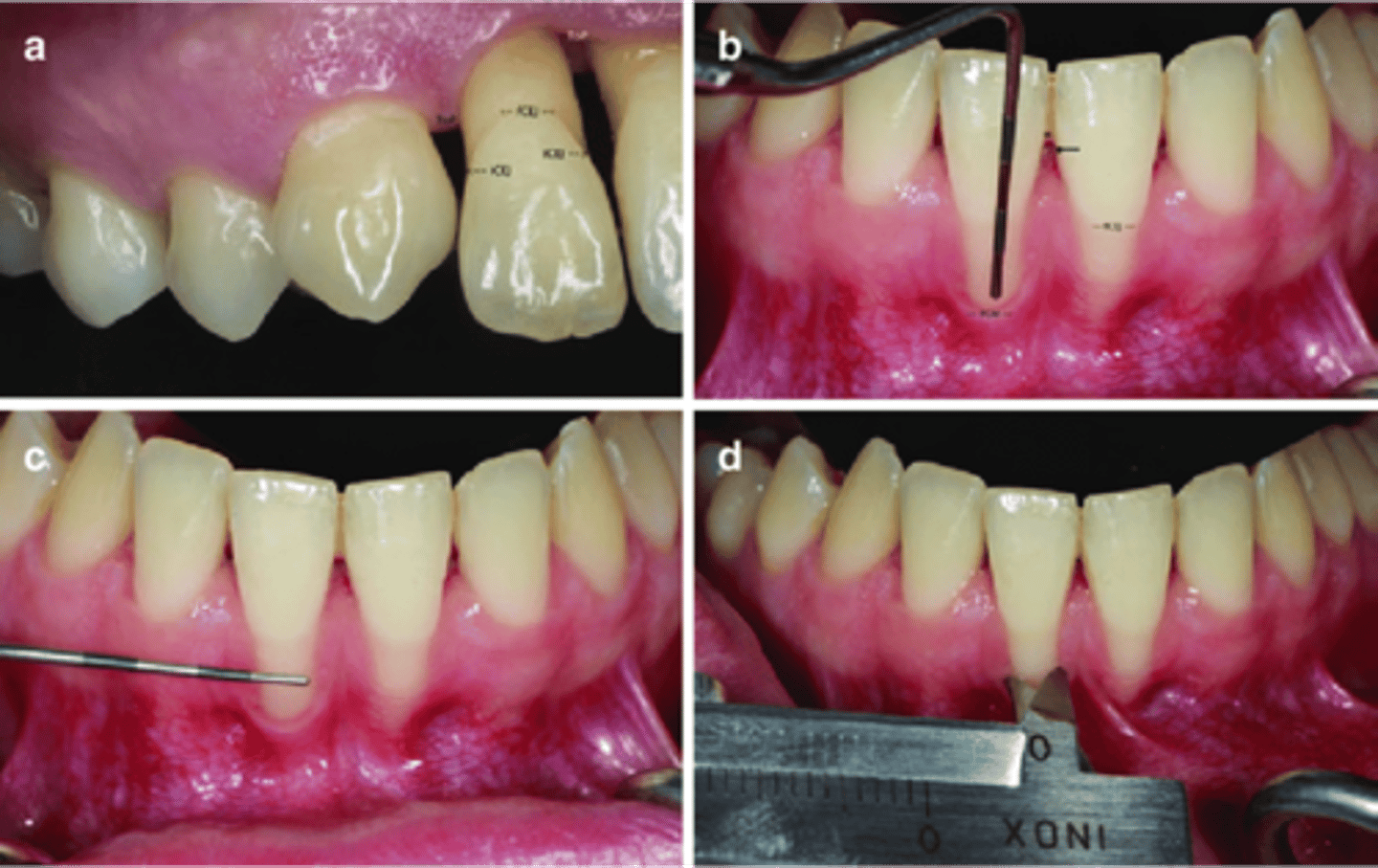
parotid gland, submandibular gland, sublingual gland
What are the major salivary glands?
parotid gland
What is this?
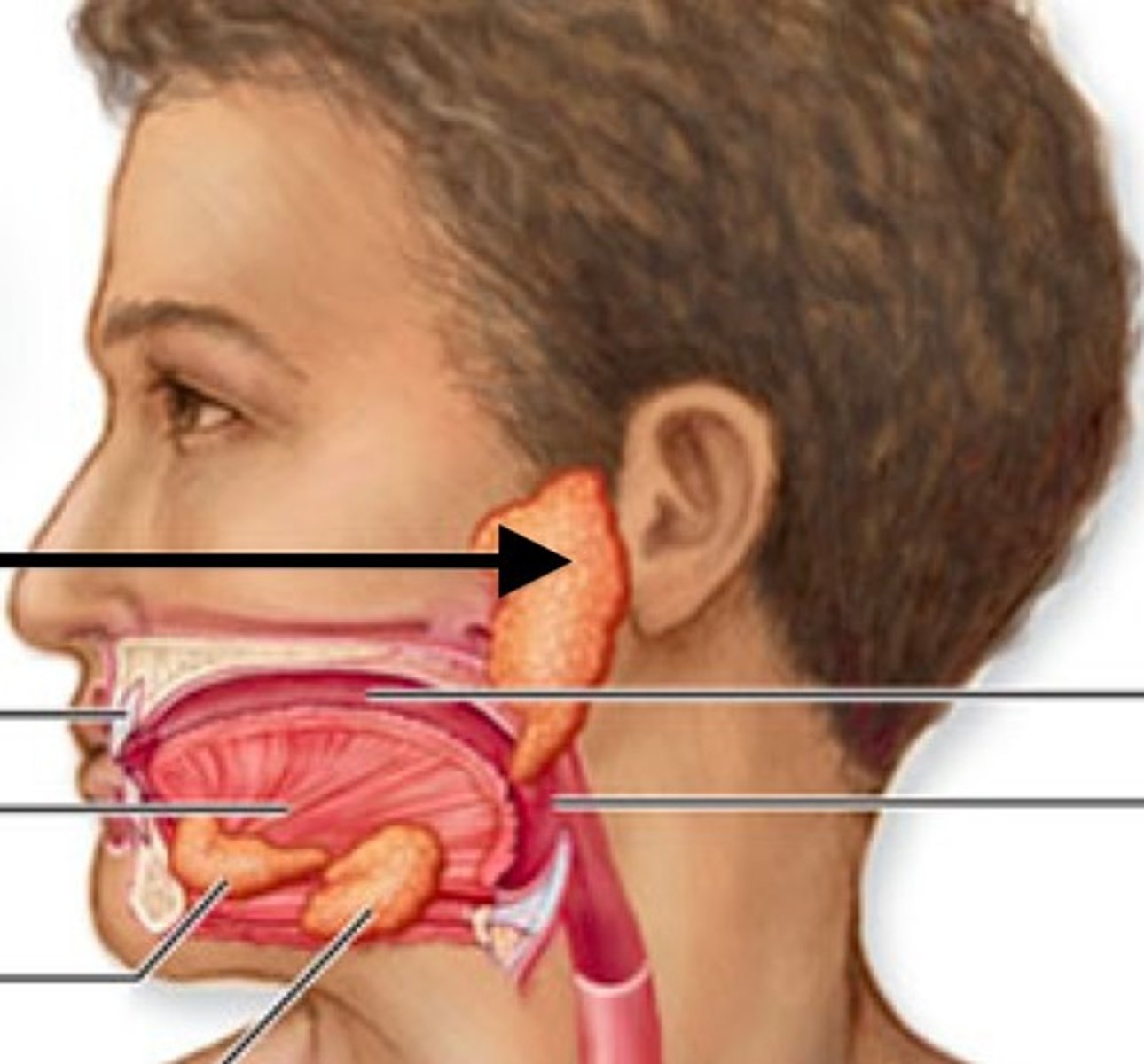
Submandibular gland - a type of salivary gland
What is this?

Sublingual gland - a type of salivary gland
What is this?
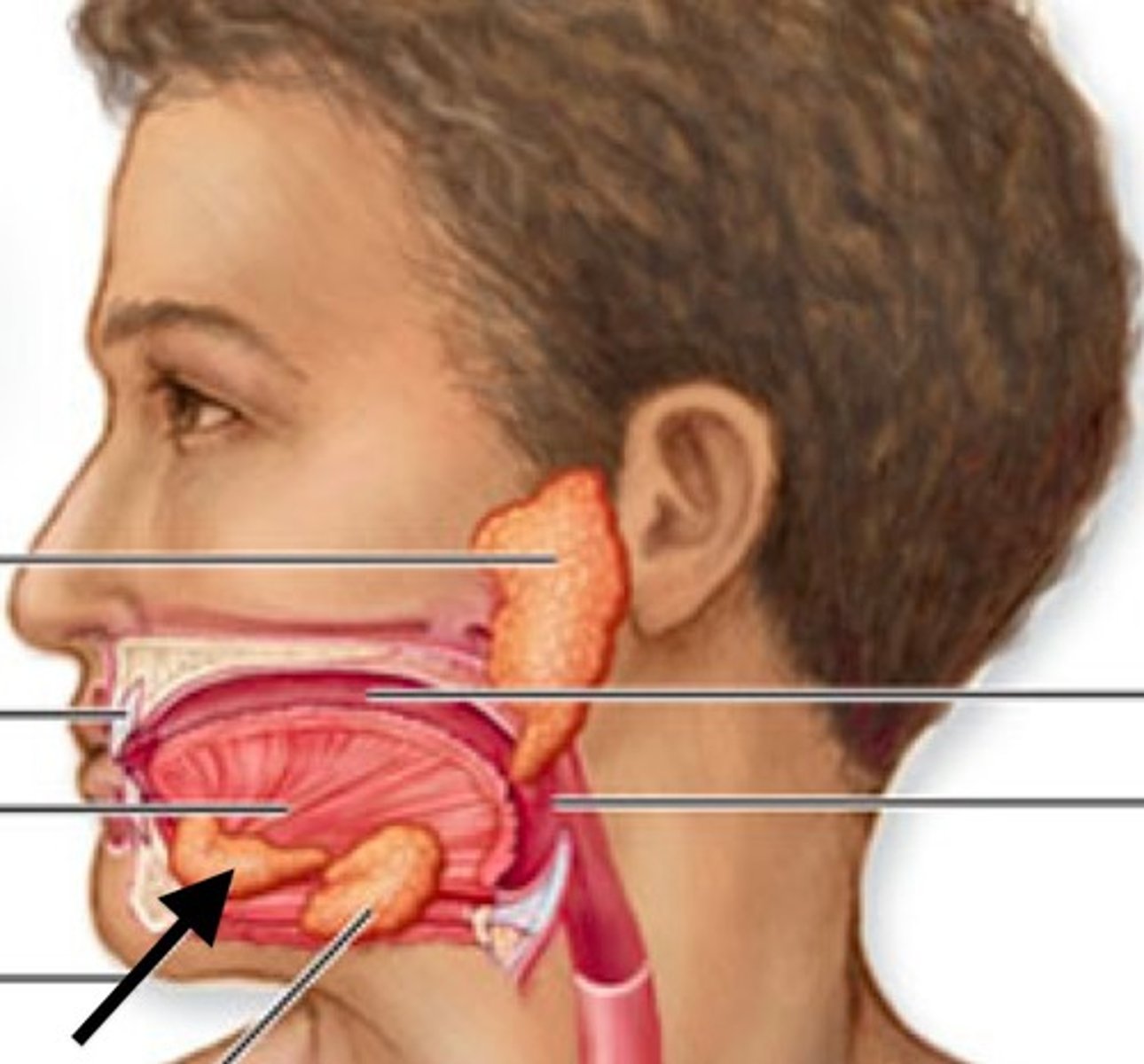
parotid papilla - a small, fleshy elevation of tissue on the inner cheek lining that marks the opening of the parotid duct
What is this?
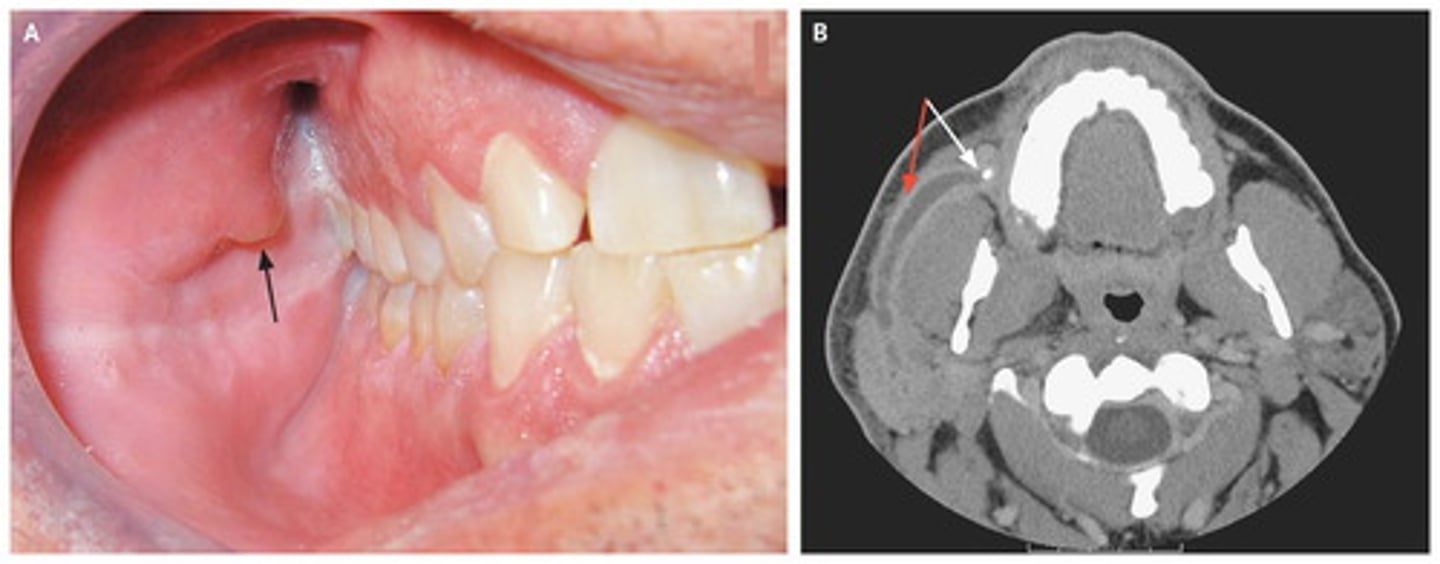
Parotitis - bacterial or viral (aka Mumps)
What is going on here?

palatopharyngeal arch
What is 1?
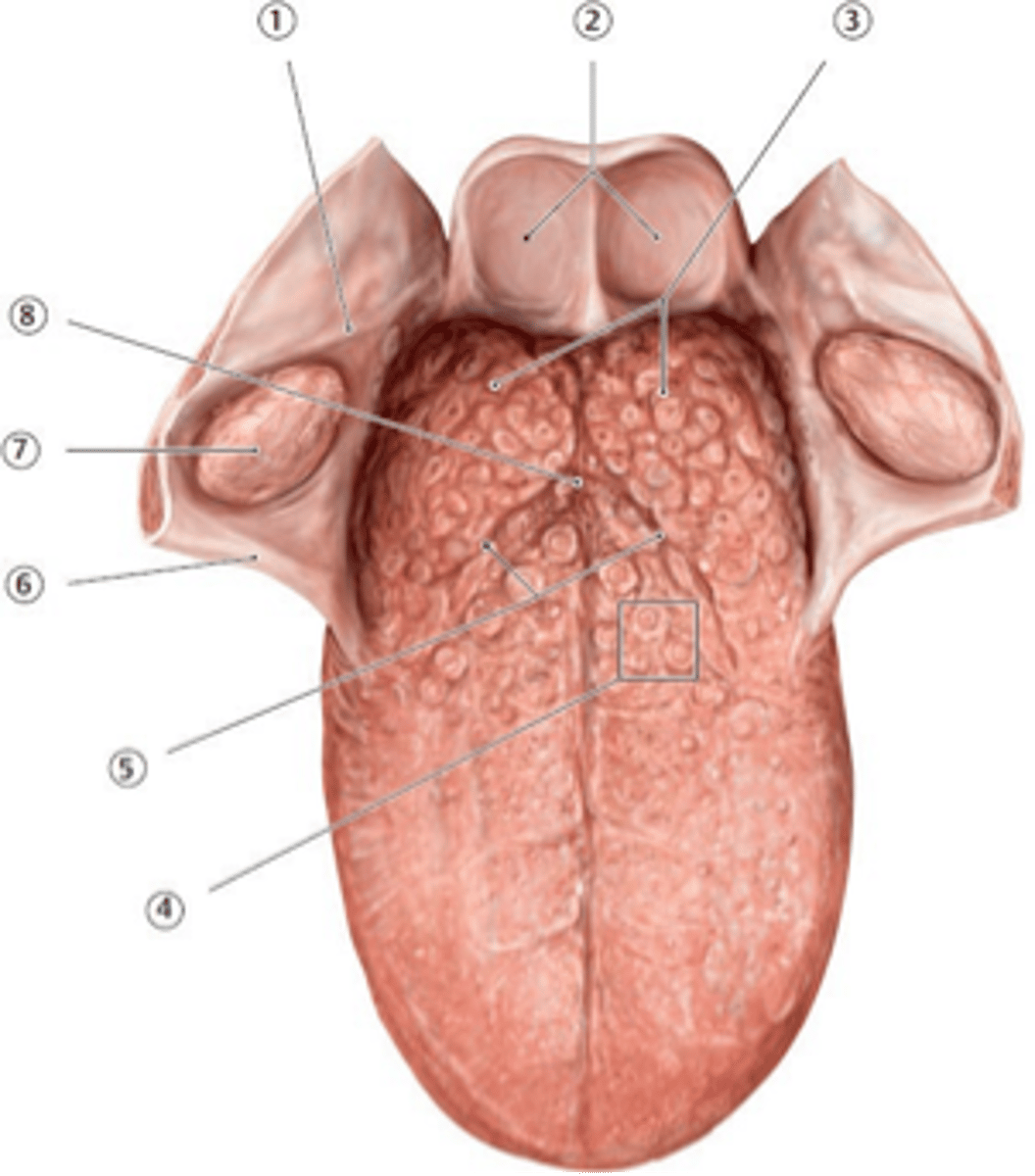
Epiglottis - a flap of cartilage located at the top of the windpipe (trachea)
What is 2?
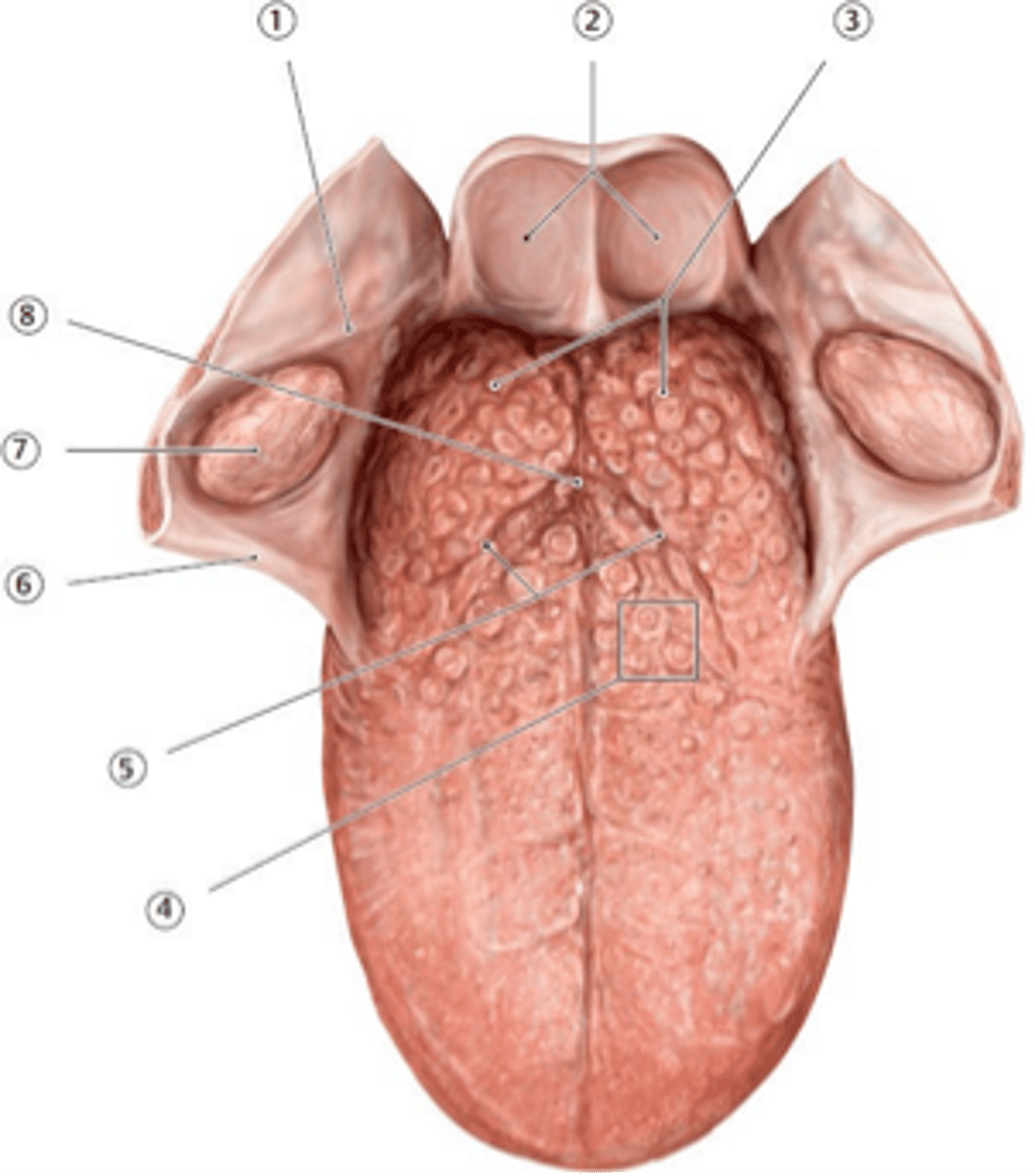
Lingual tonsil - pair of oval-shaped masses of lymphatic tissue located at the base of the tongue, near the epiglottis
3?
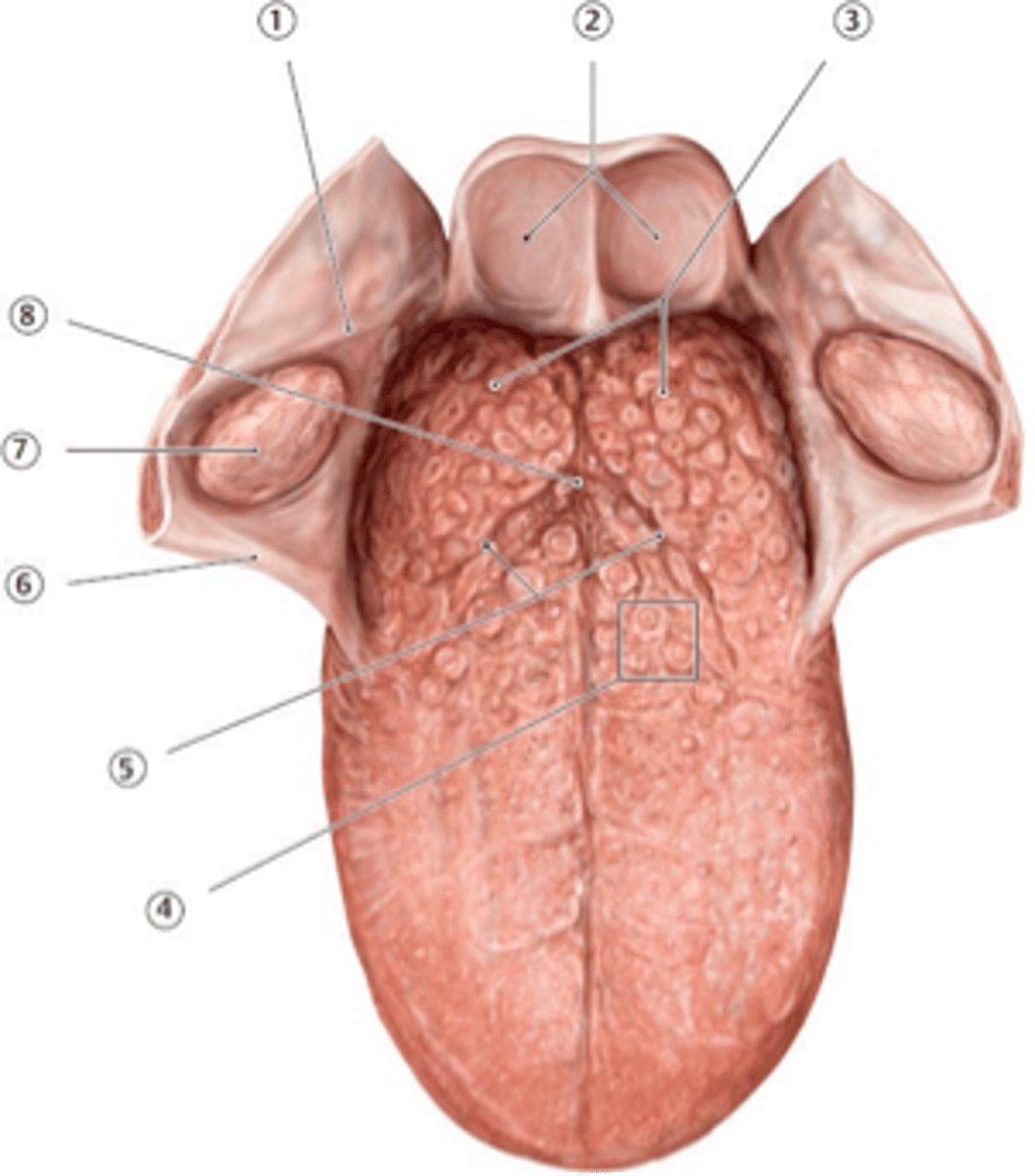
Circumvallate papillae - dome-shaped structures on the back of the tongue, arranged in a V-shape, that contain taste buds and are particularly sensitive to bitter tastes
4?
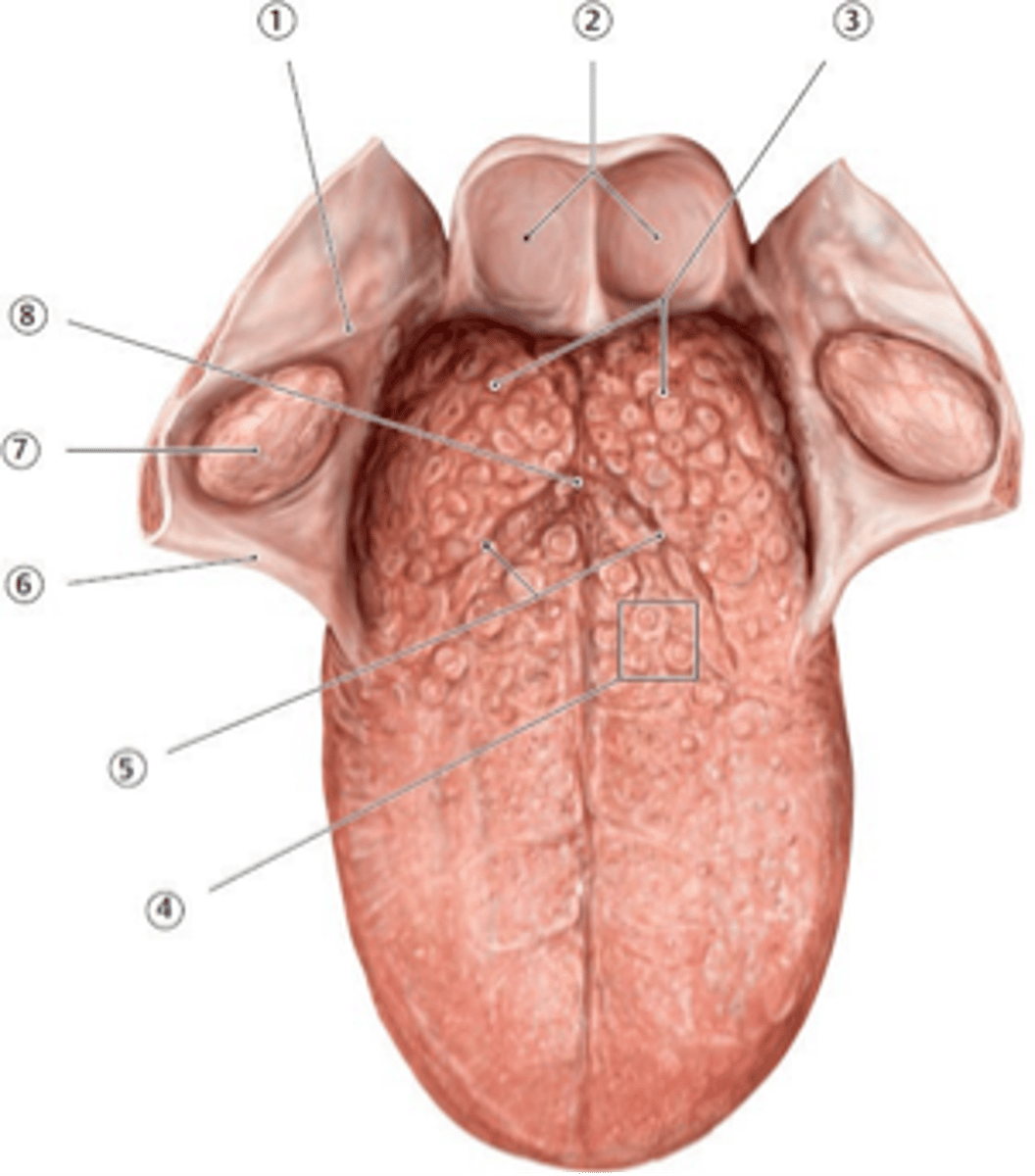
Palatoglossal arch
6?
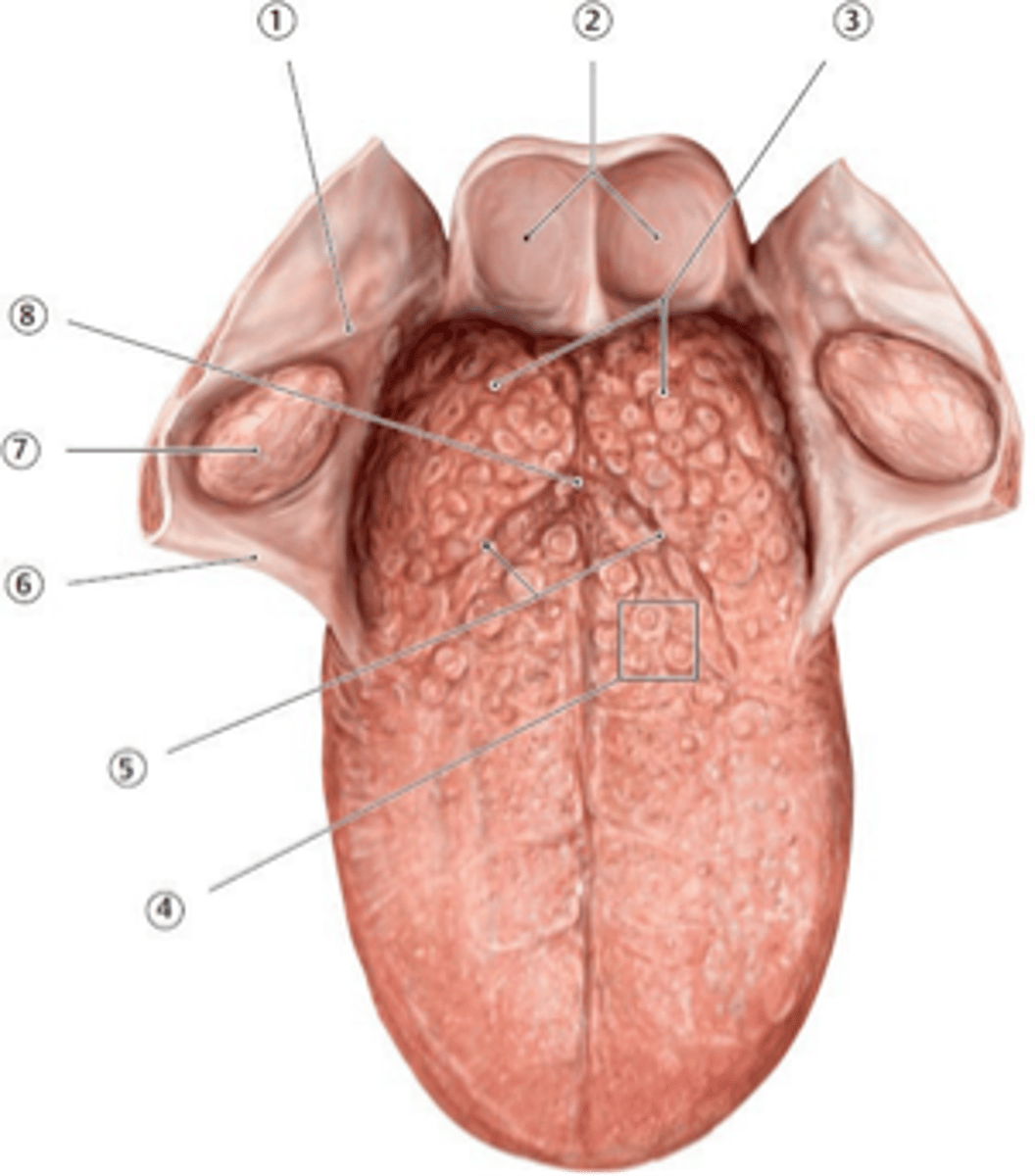
Palatine tonsil - two oval-shaped masses of lymphatic tissue located on either side of the throat, at the back of the mouth
7?
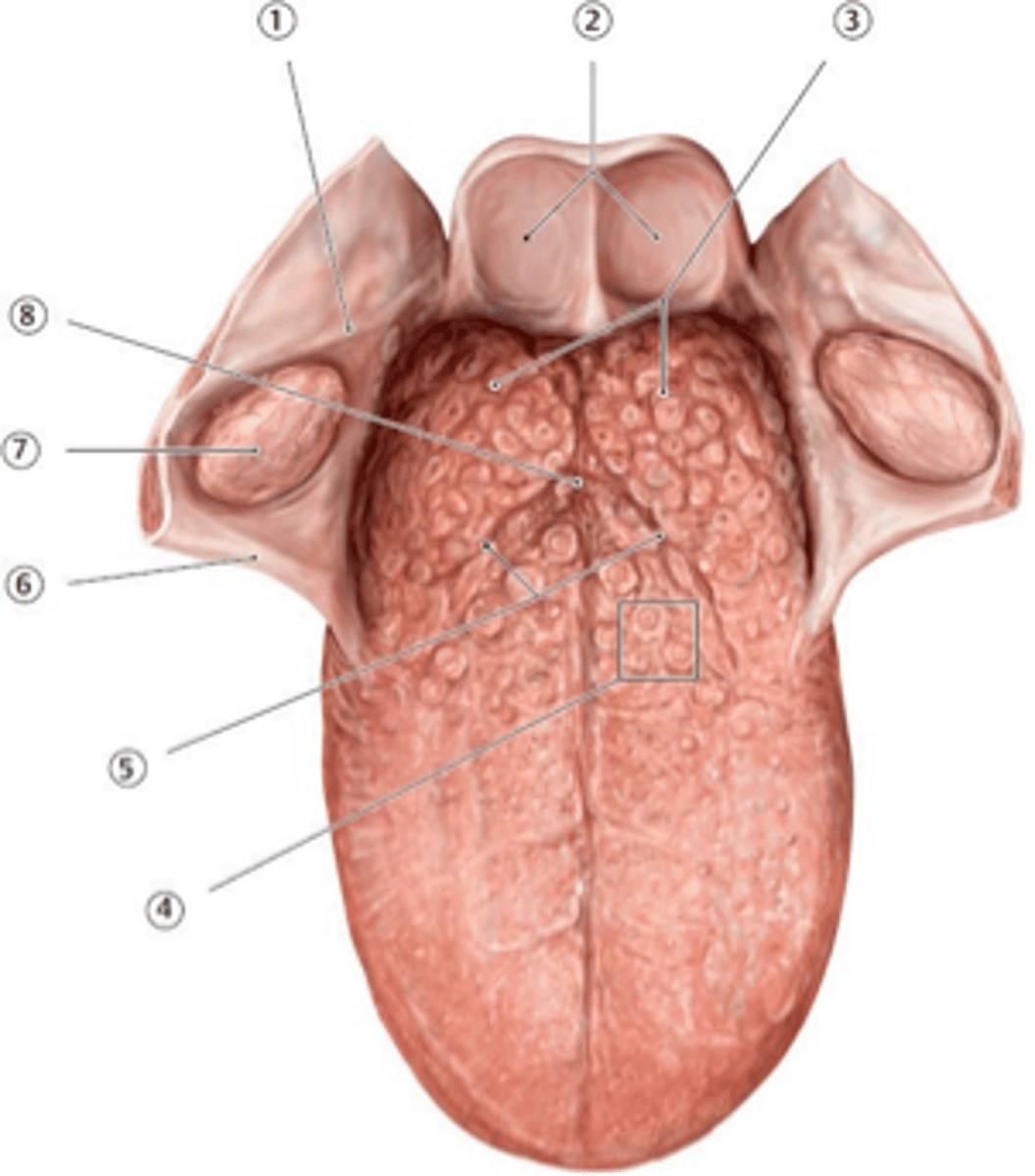
Wharton's duct
What is this?
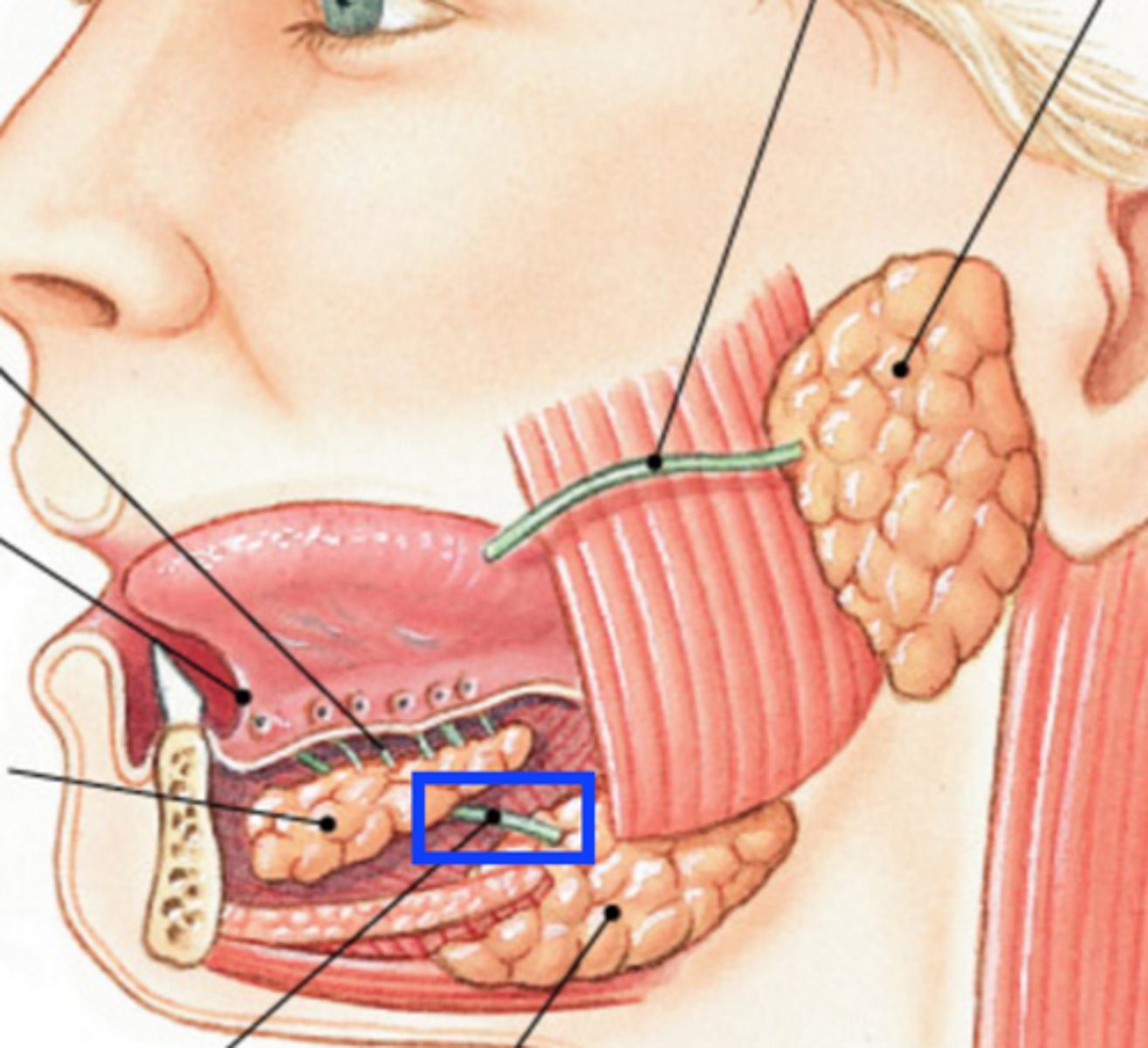
Wharton's duct, which empties into sublingual carnuncle
Sublingual gland empties into...
Submandibular duct
submandibular gland empties into...
Parotid duct (Stensen's duct), which empties into parotid papilla
Parotid gland empties into
Circumvallate papillae, Foliate papillae, Fungiform Papillae, Filiform, Papillae
Name the papillae of the tongue
Foliate Papillae - small, leaf-like ridges located on the sides of the tongue, near the back
What is A?
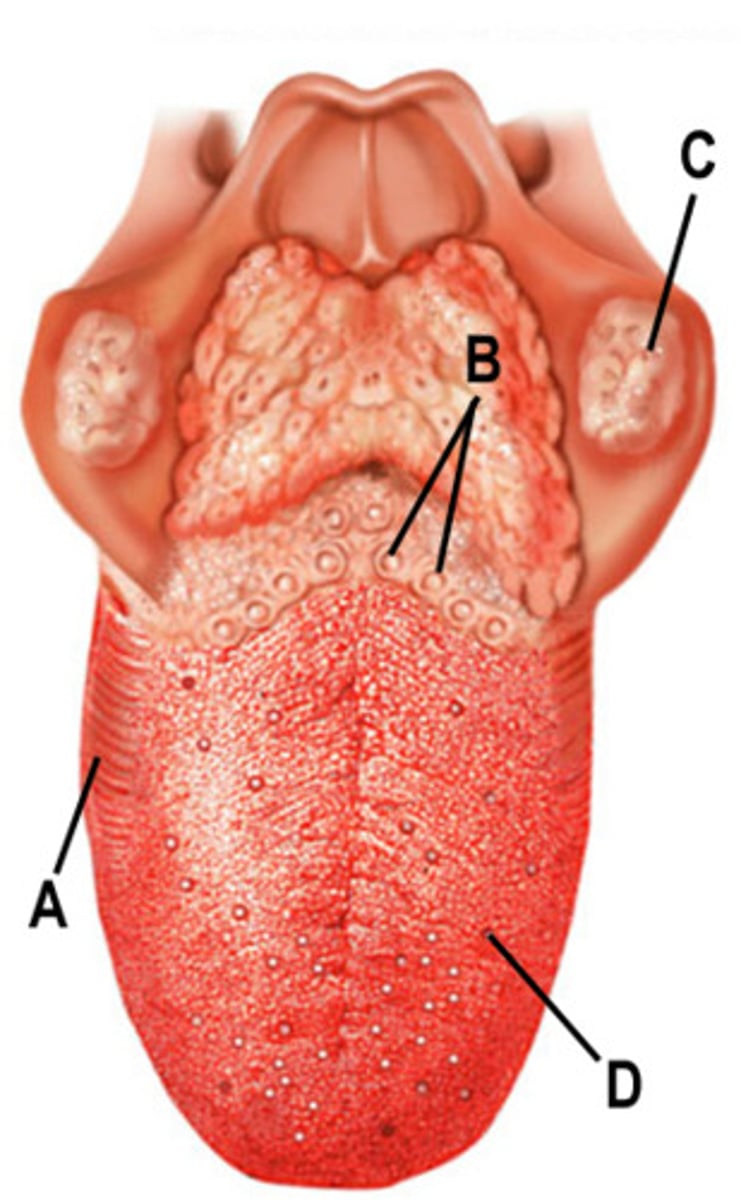
Circumvallate papillae - dome-shaped structures on the back of the tongue, arranged in a V-shape, that contain taste buds and are particularly sensitive to bitter tastes
What is A?
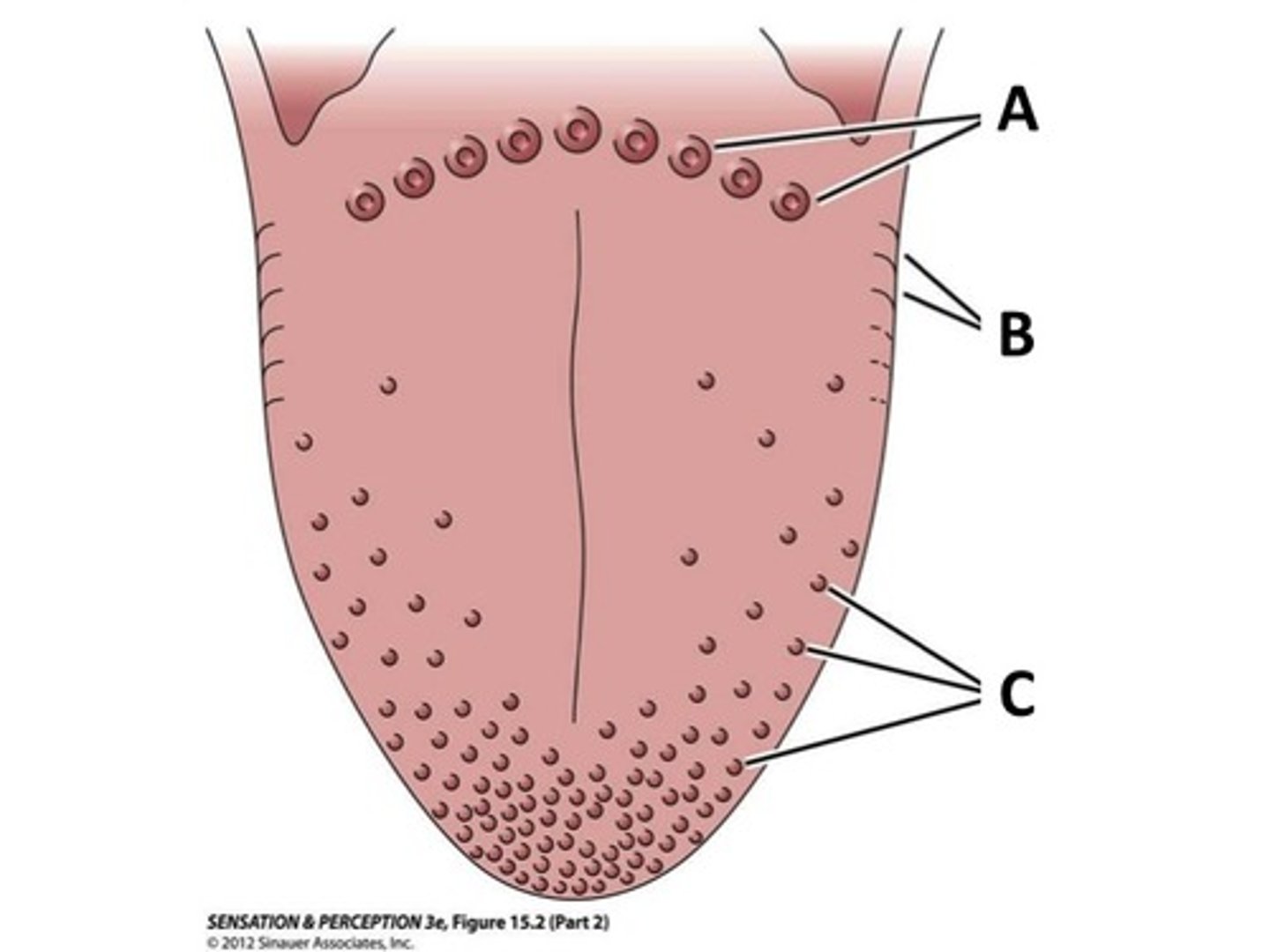
Fungiform Papillae - small, mushroom-shaped bumps on the tongue that contain taste buds
What is C?
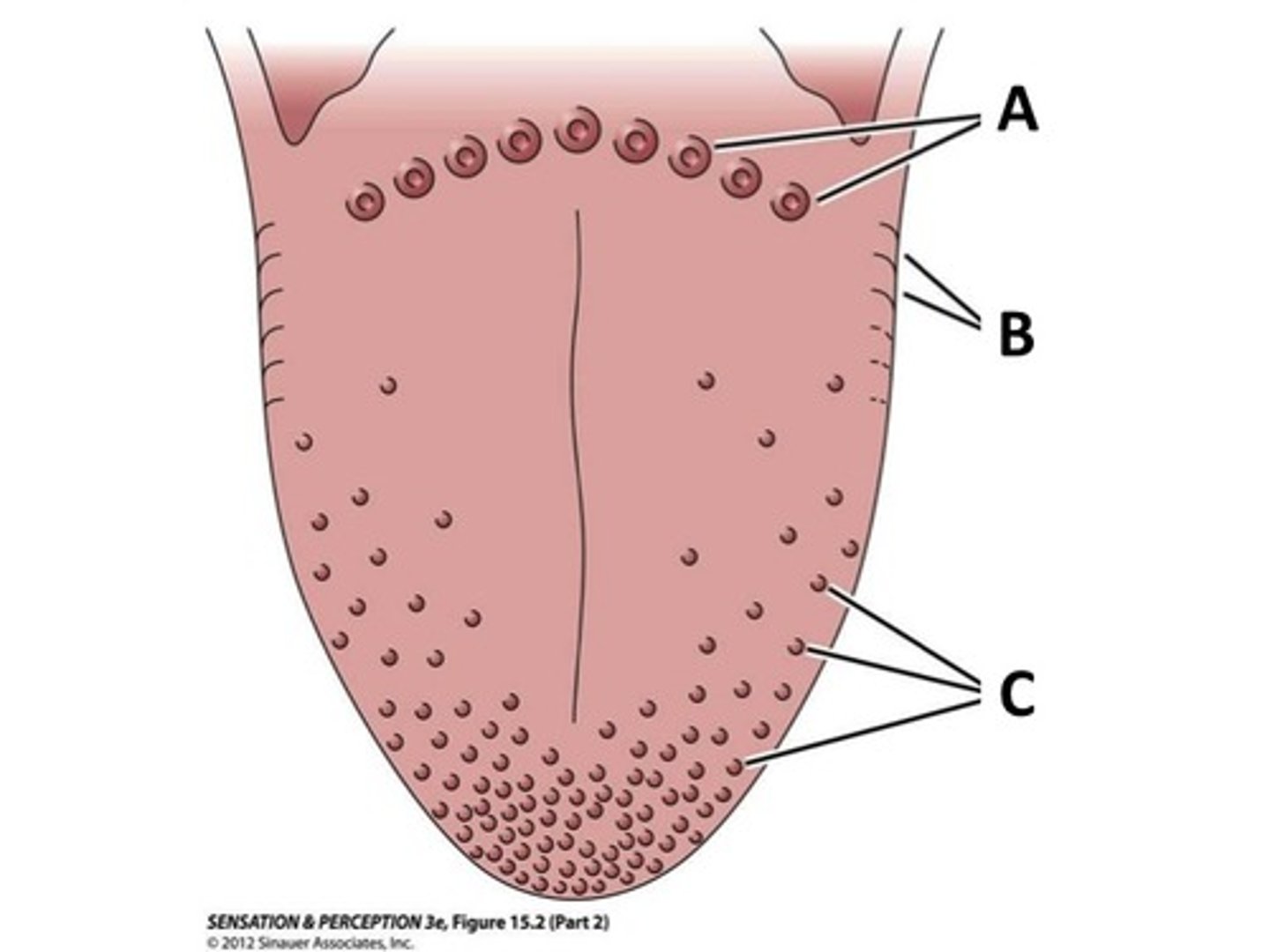
Filiform papillae - the most numerous type of papillae on the human tongue, characterized by their thread-like (filiform) shape
What is A?
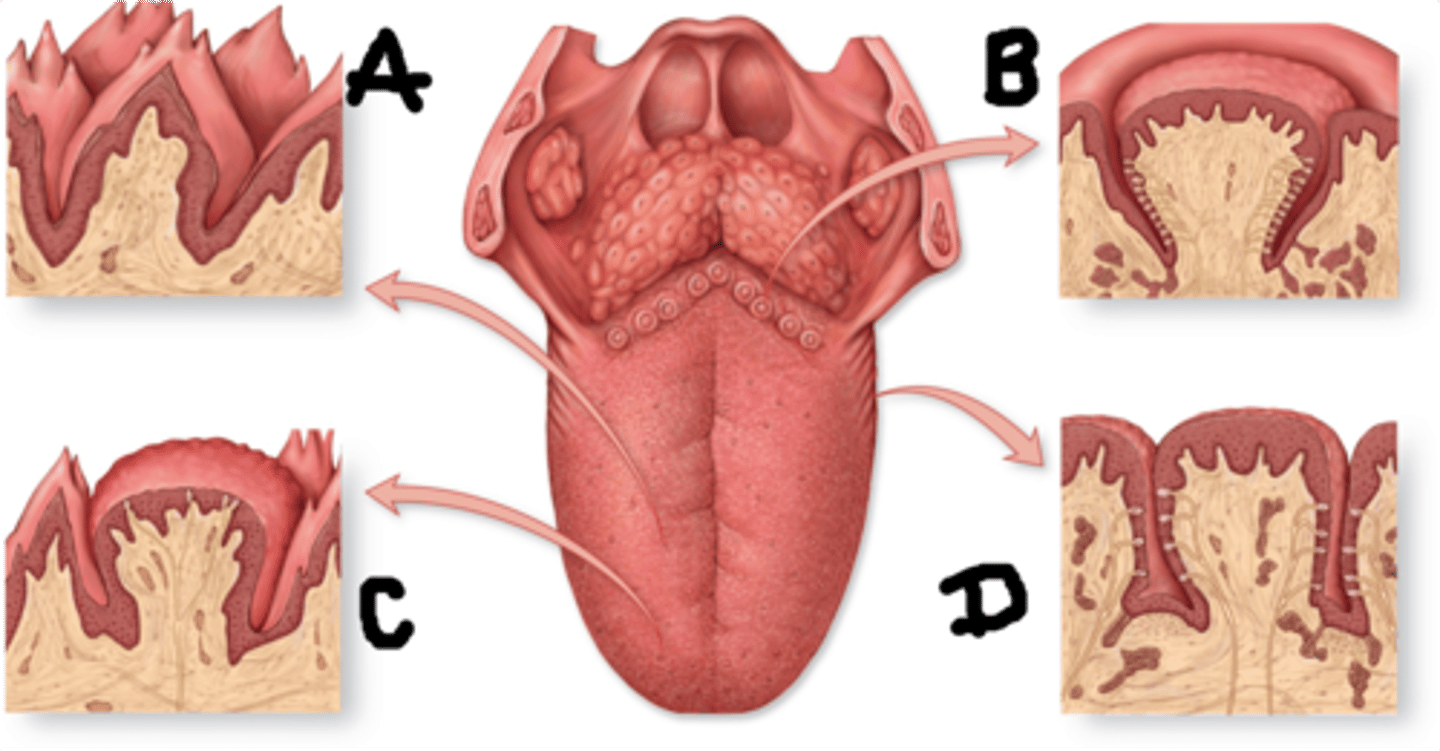
Foliate papillae
What type of papilla is this?

Plica fimbriata - small, fringe-like folds of mucous membrane located on the underside of the tongue, near the frenulum
What is this
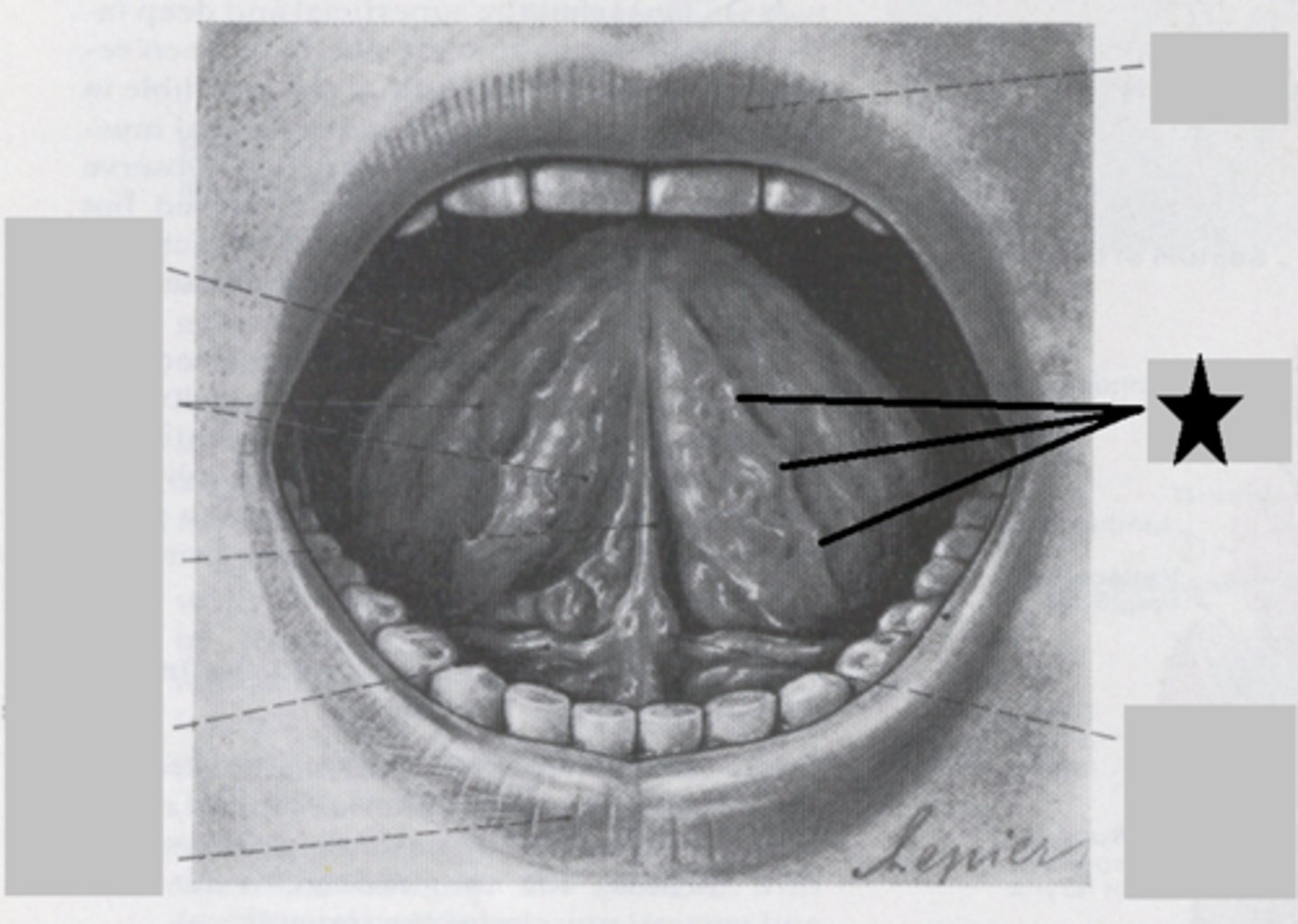
Linea alba - cheek biting
What is pointed out here?
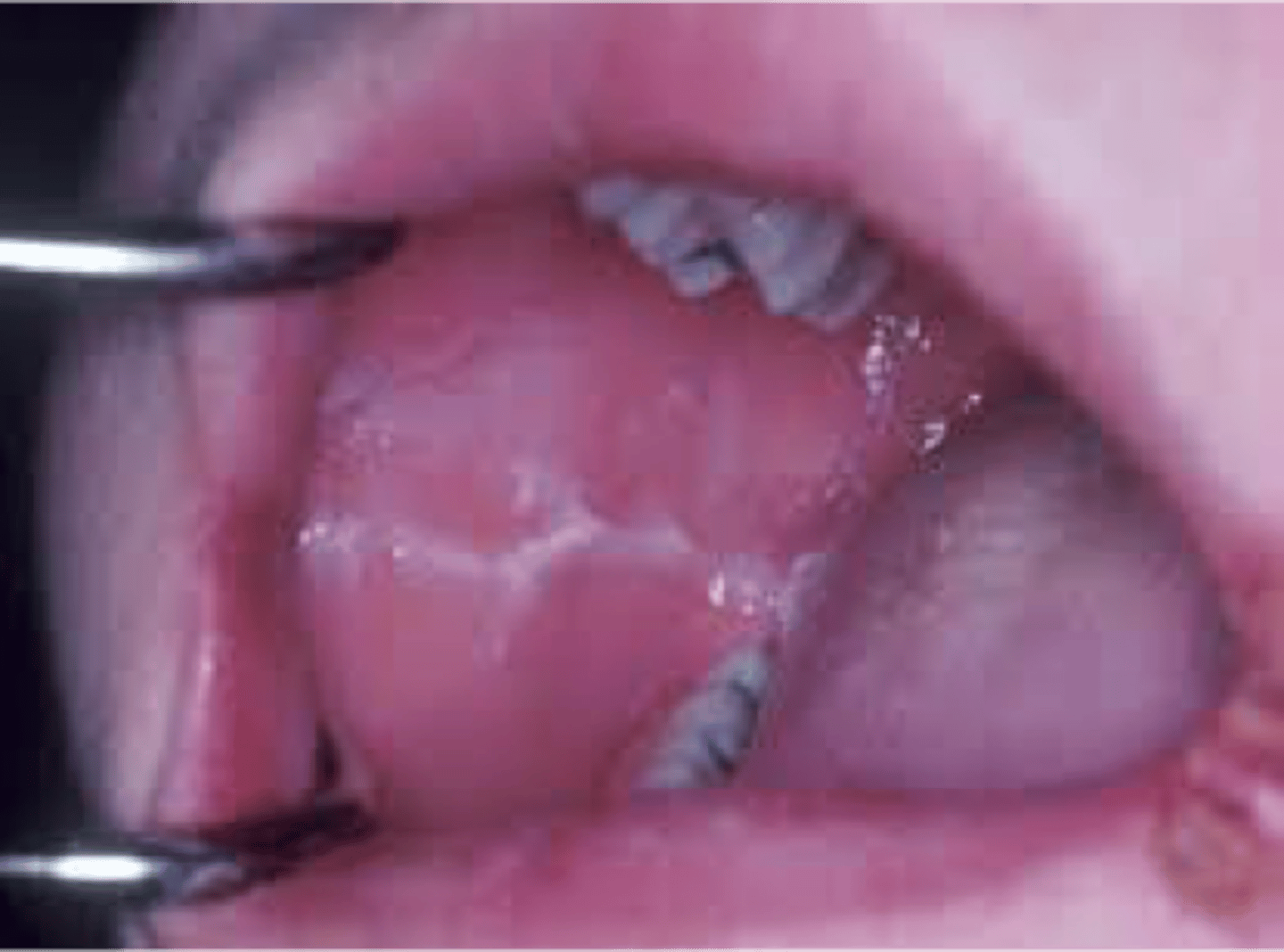
It is a normal finding
is linea alba a normal finding?
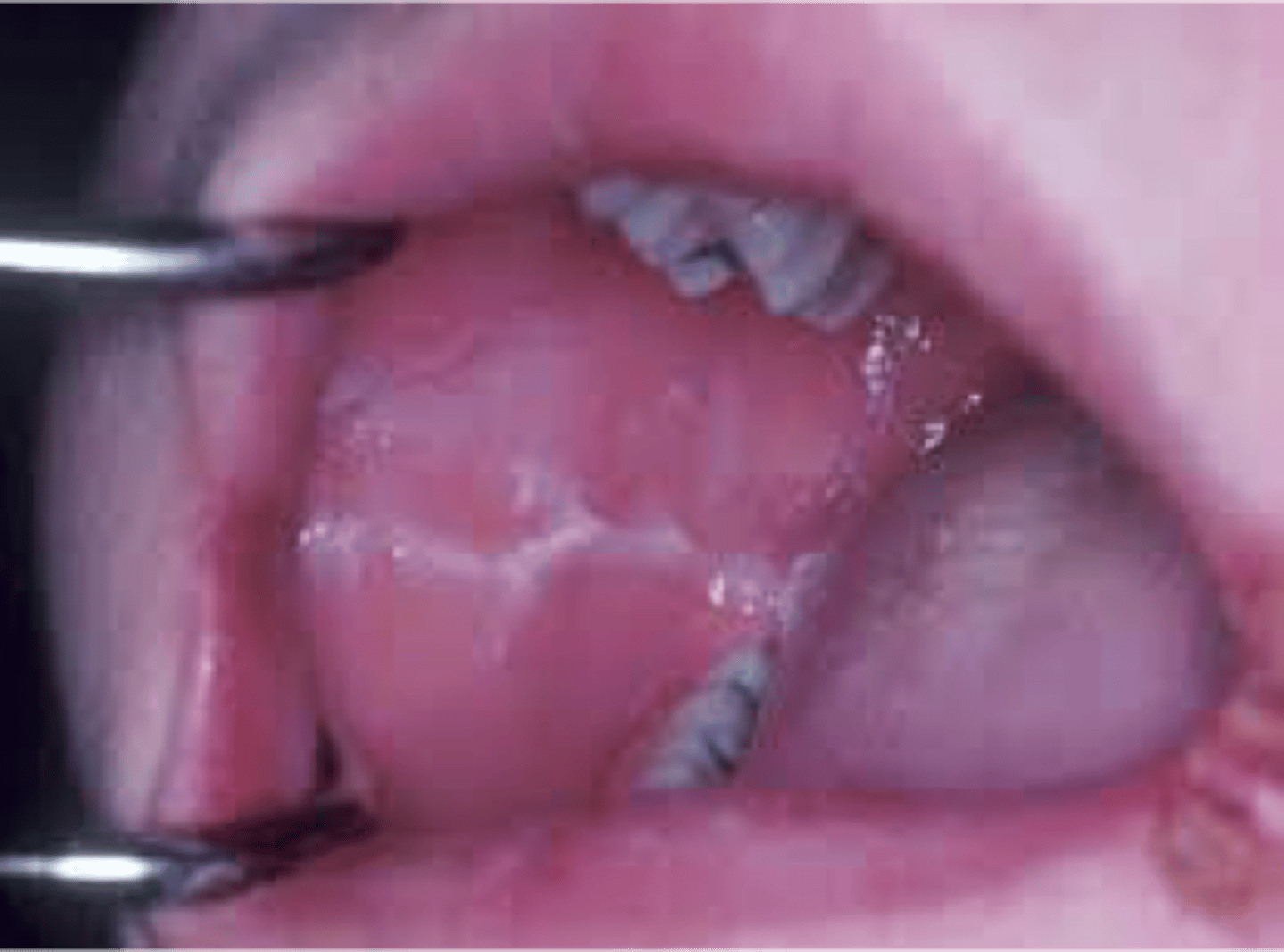
Lower tori/exostoses - benign, bony growths that can occur in the mouth, specifically on the jawbones (normal findings)
What is pointed out here?
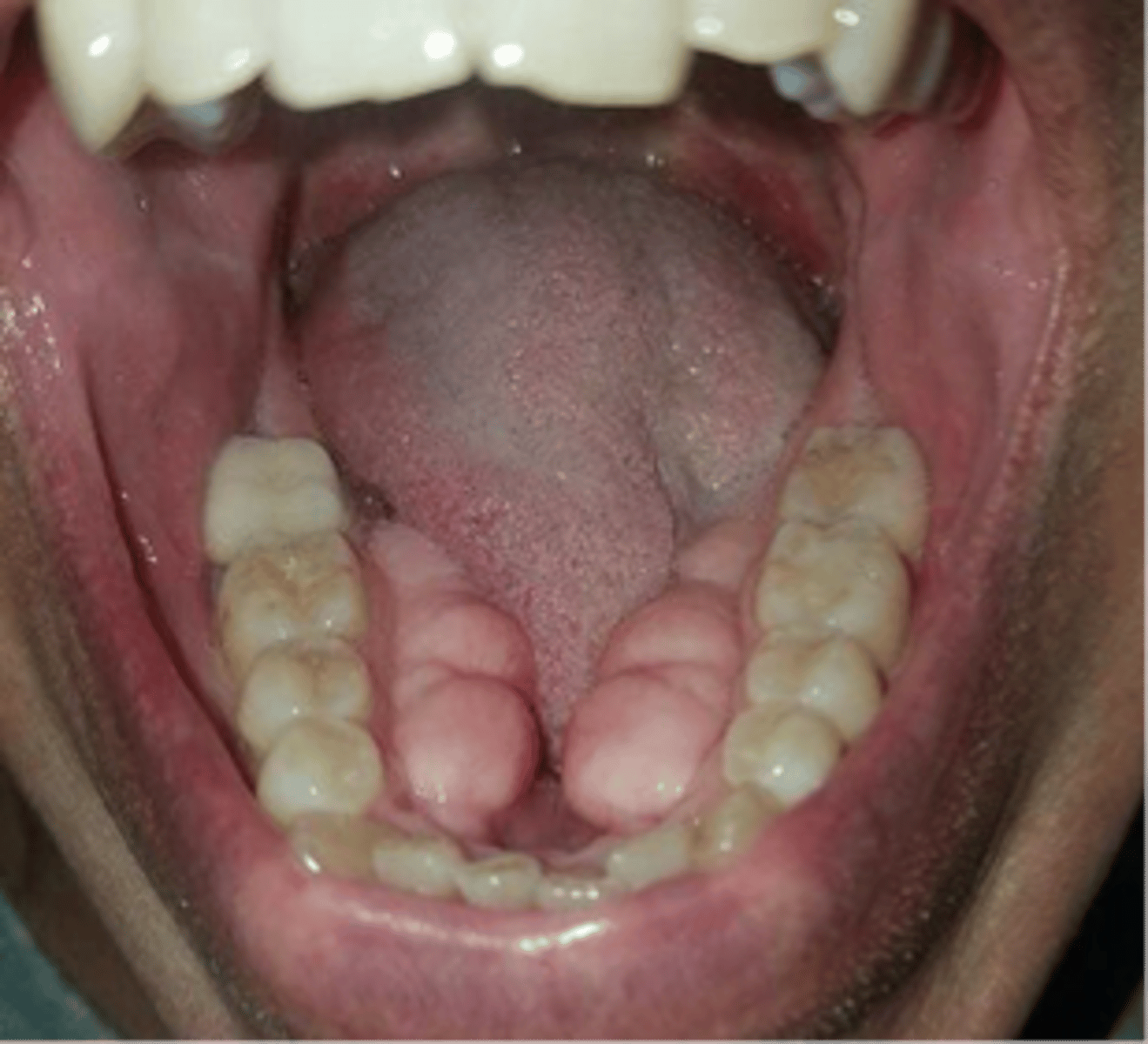
Buccal exostoses - Bony protuberances on the buccal of the mandible and/or maxilla (normal/benign)
What is pointed out here?
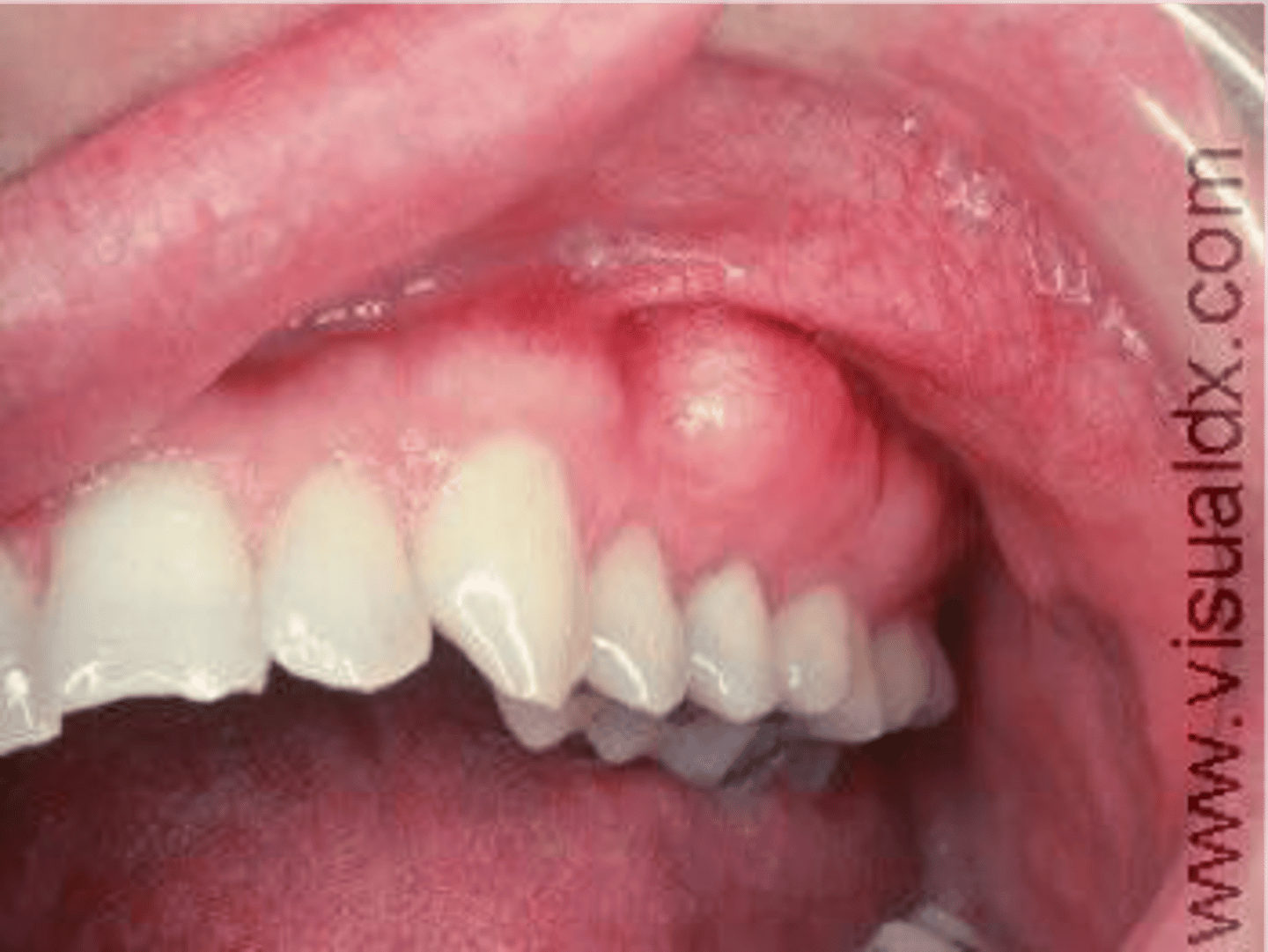
Incisive papilla - a small, oval-shaped tissue prominence located on the roof of the mouth, behind the front teeth (incisors)
What is this?
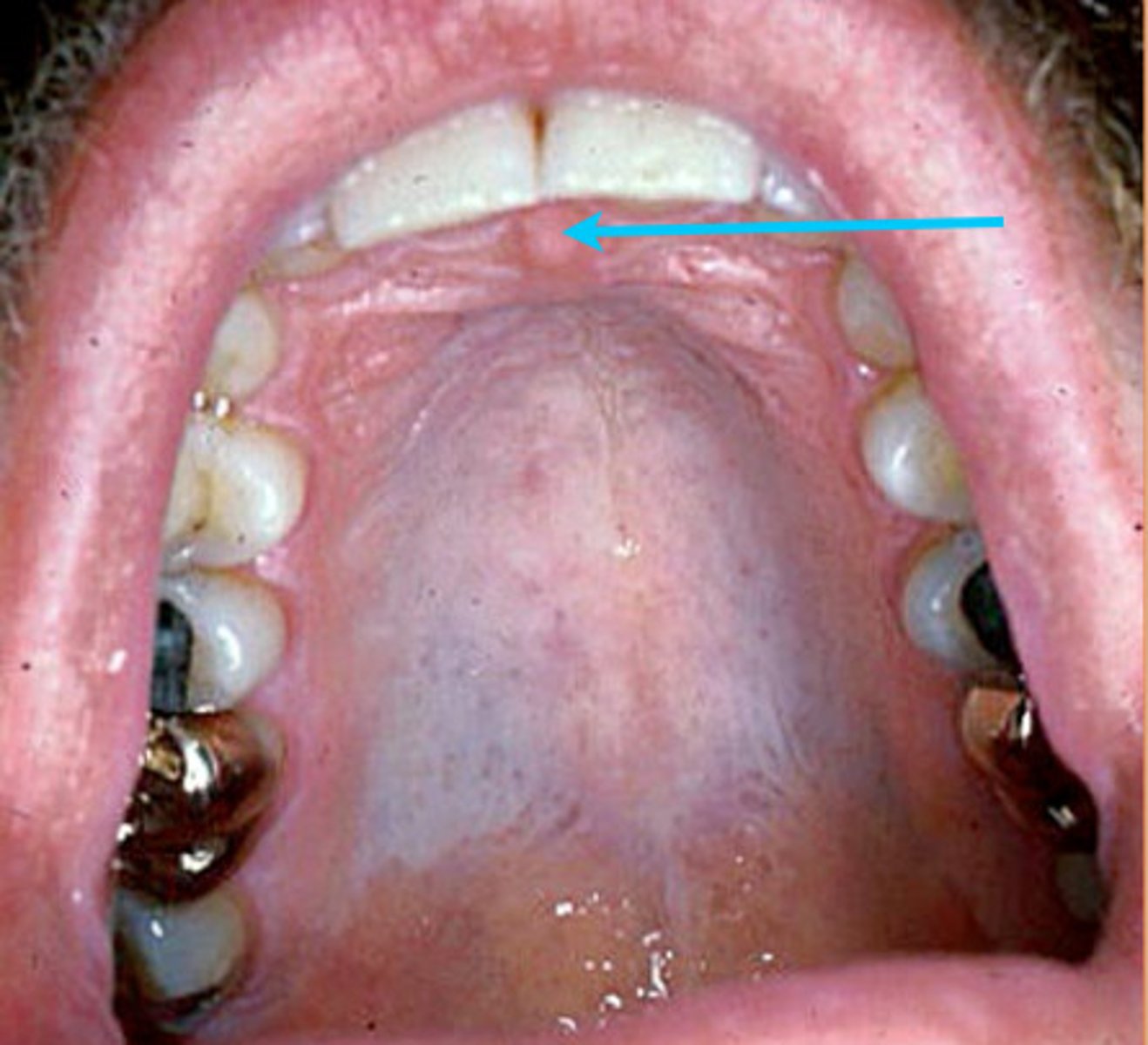
Attached Gingiva
What is this highlighted area?
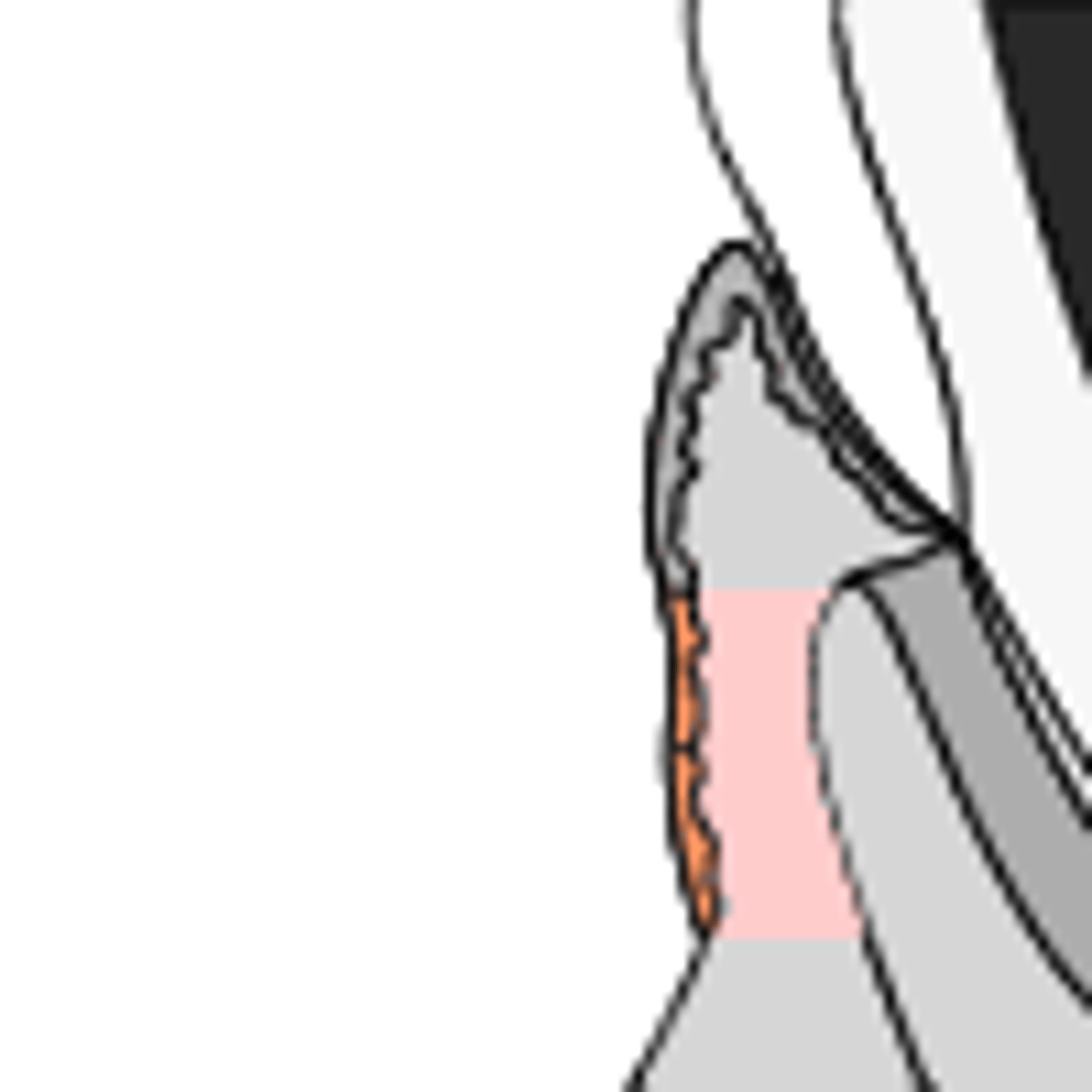
Gingival margin - the border or edge of the gums that surrounds the teeth
What is 1?
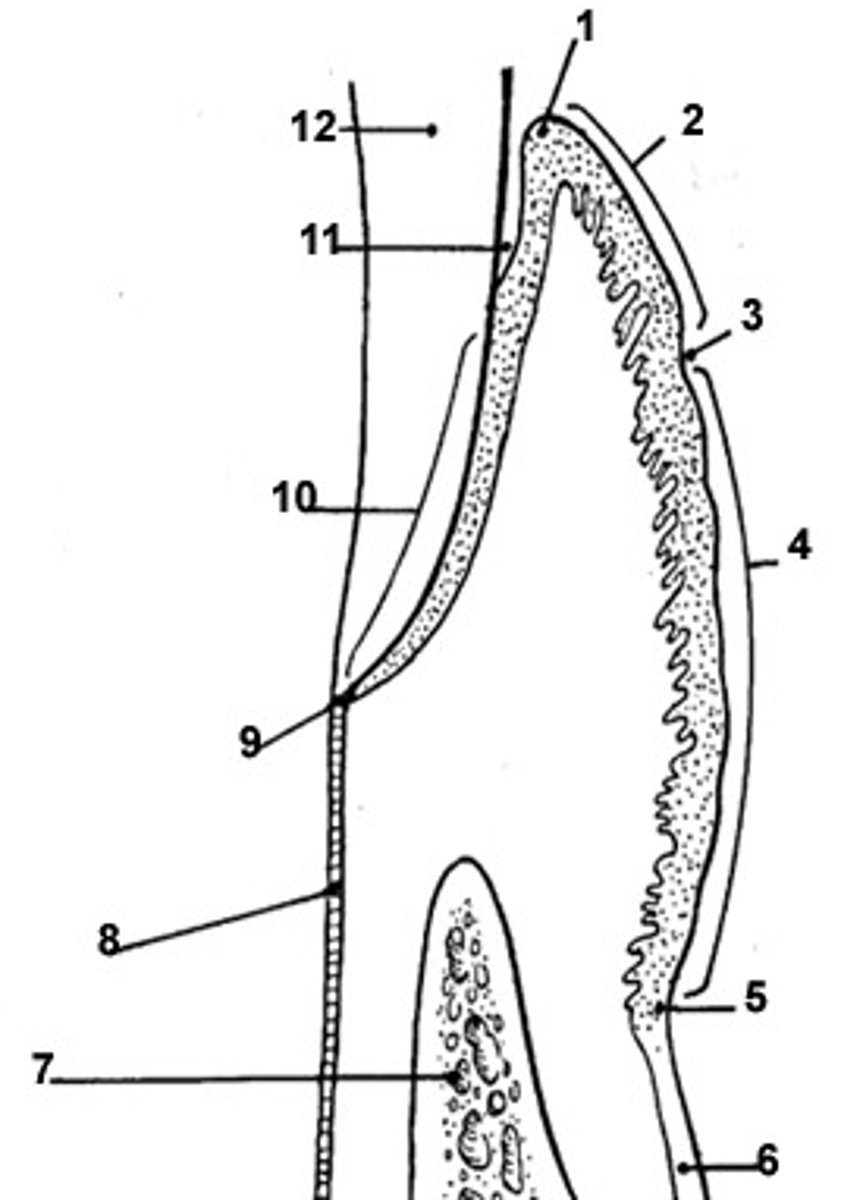
inferior border of mandible - the lower edge or boundary of the lower jawbone (mandible)
What is this?

submental triangle - a specific area in the anterior (front) part of the neck, located just below the chin
What is this?
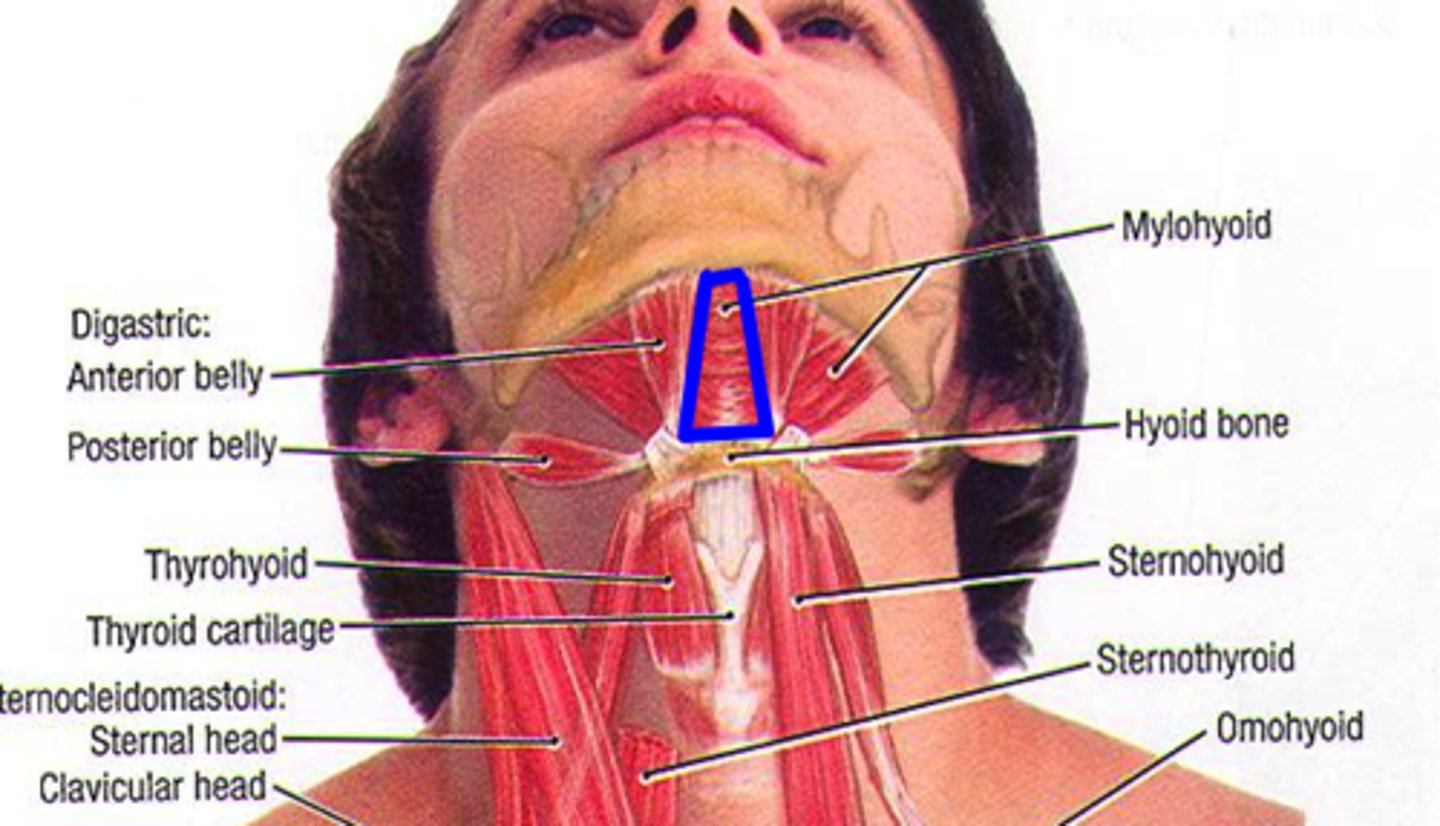
Tragus of the ear - a small, fleshy flap of cartilage located on the outer ear, just in front of the ear canal
What is this?
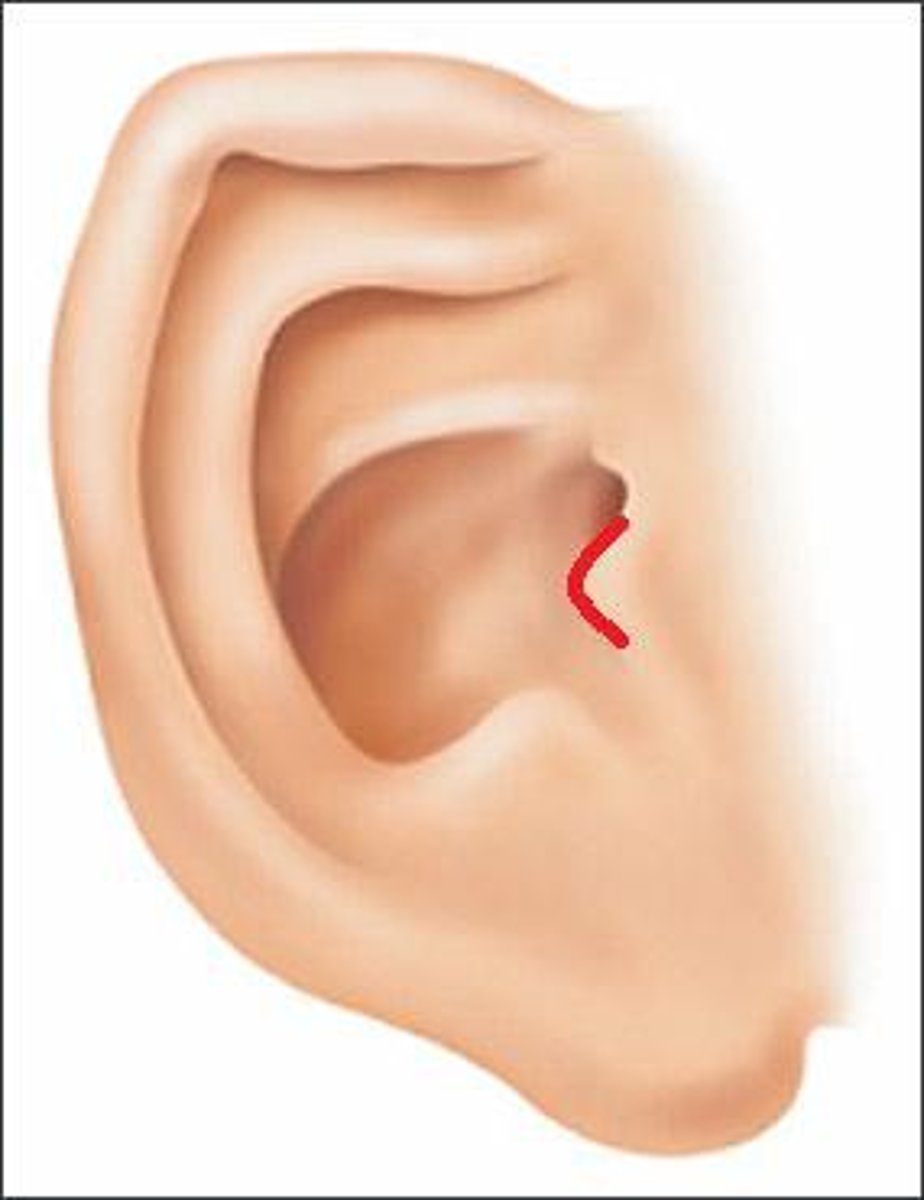
Ala of nose -
What is this?
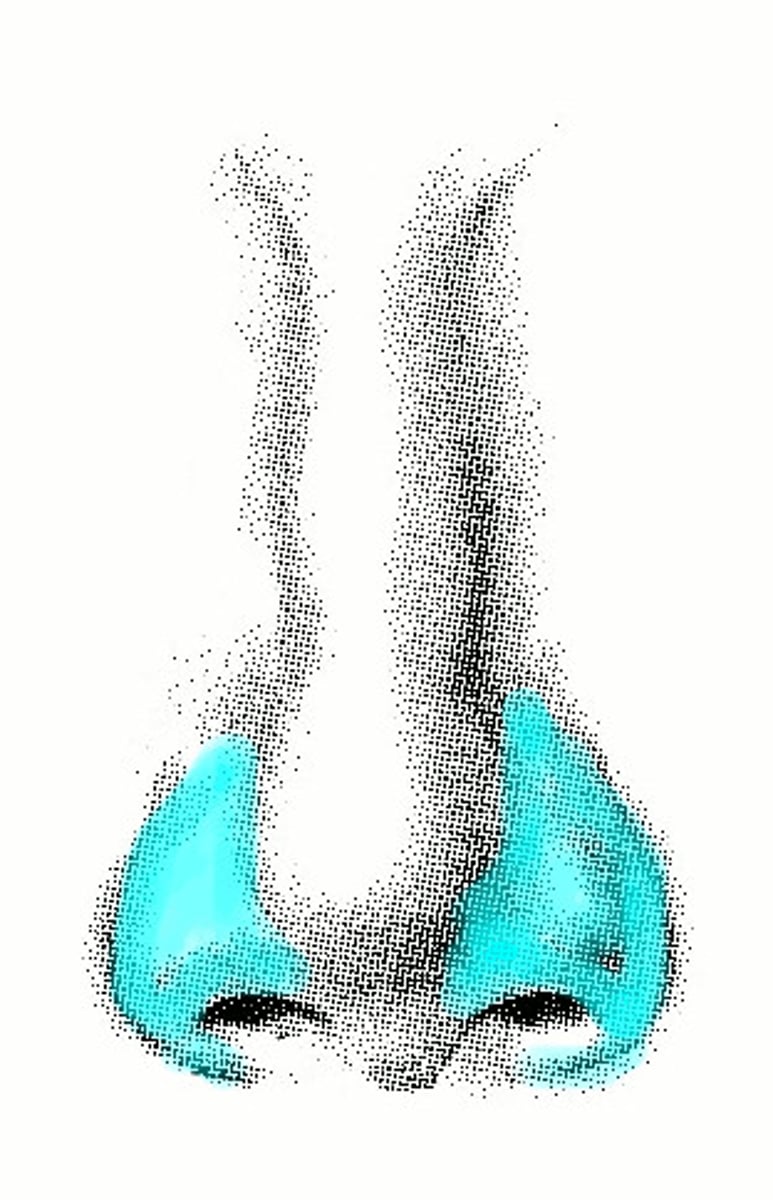
Nasolabial crease (groove/sulcus) - the crease that runs from the sides of the nose down to the corners of the mouth
What is this
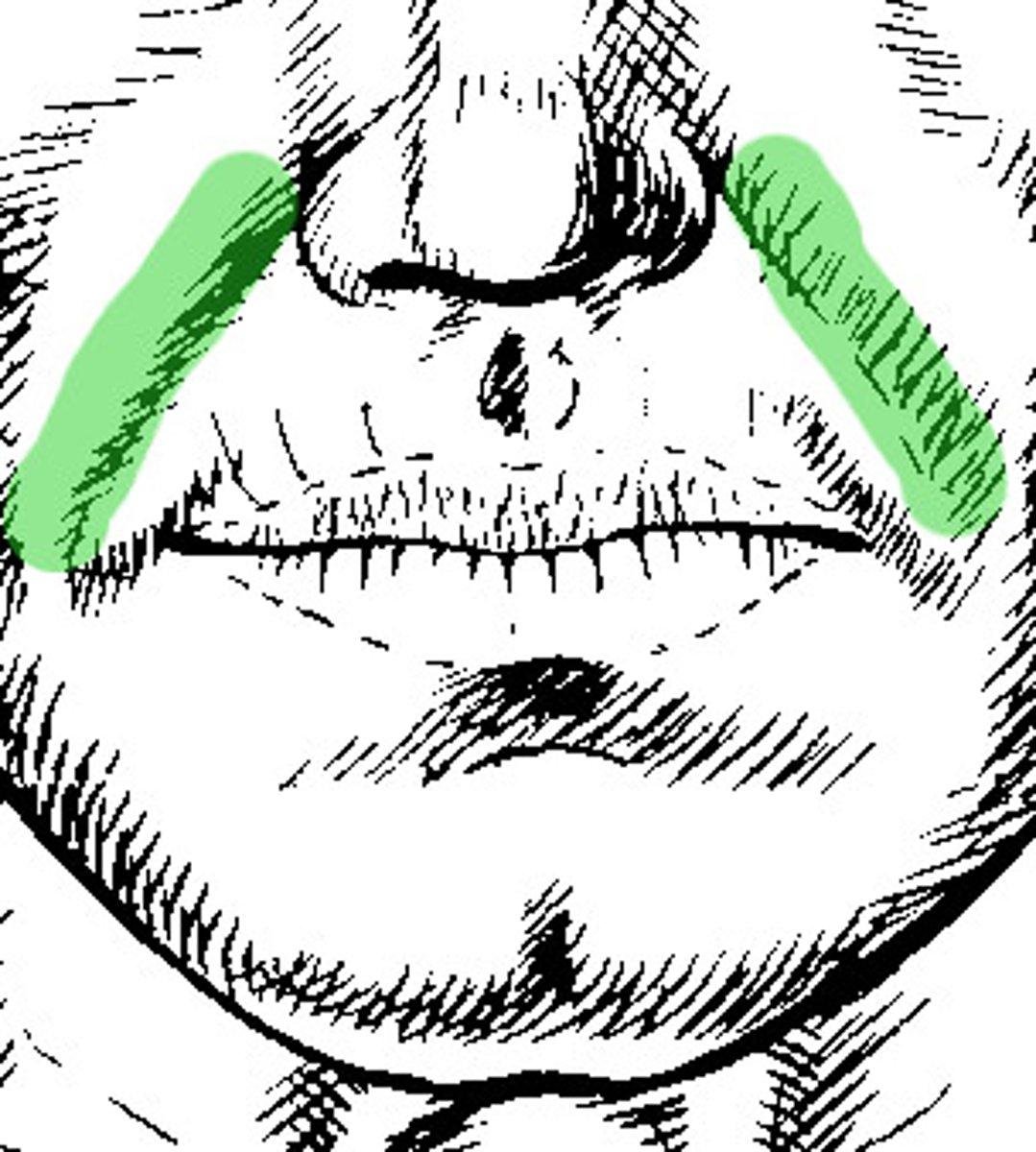
mental protuberance - Part of the mandible that forms the chin
What is this?
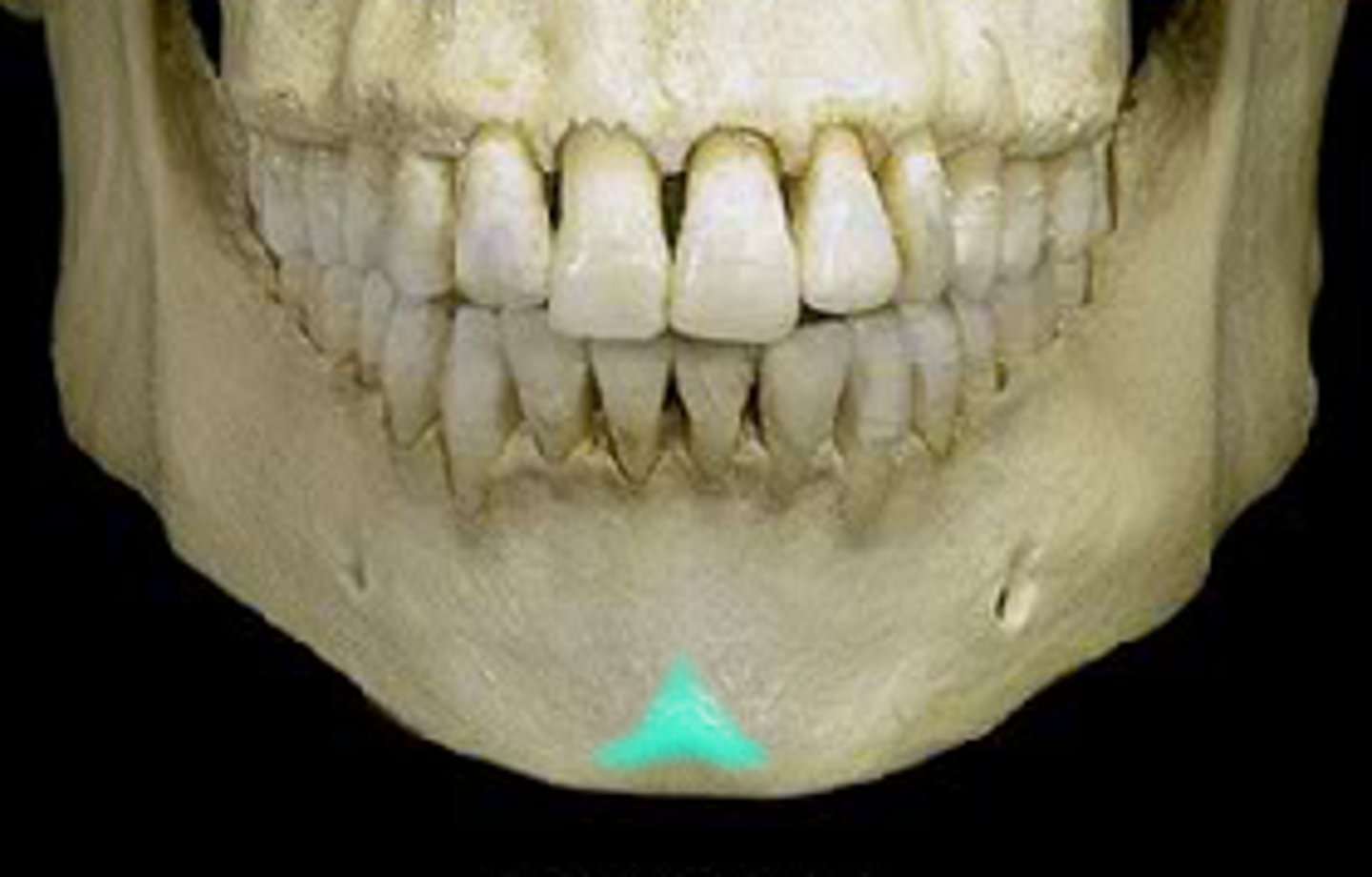
Thyroid fullness - the sensation of a lump or swelling in the neck, specifically around the thyroid gland area, or a feeling of tightness or pressure in that region
What is pictured here?
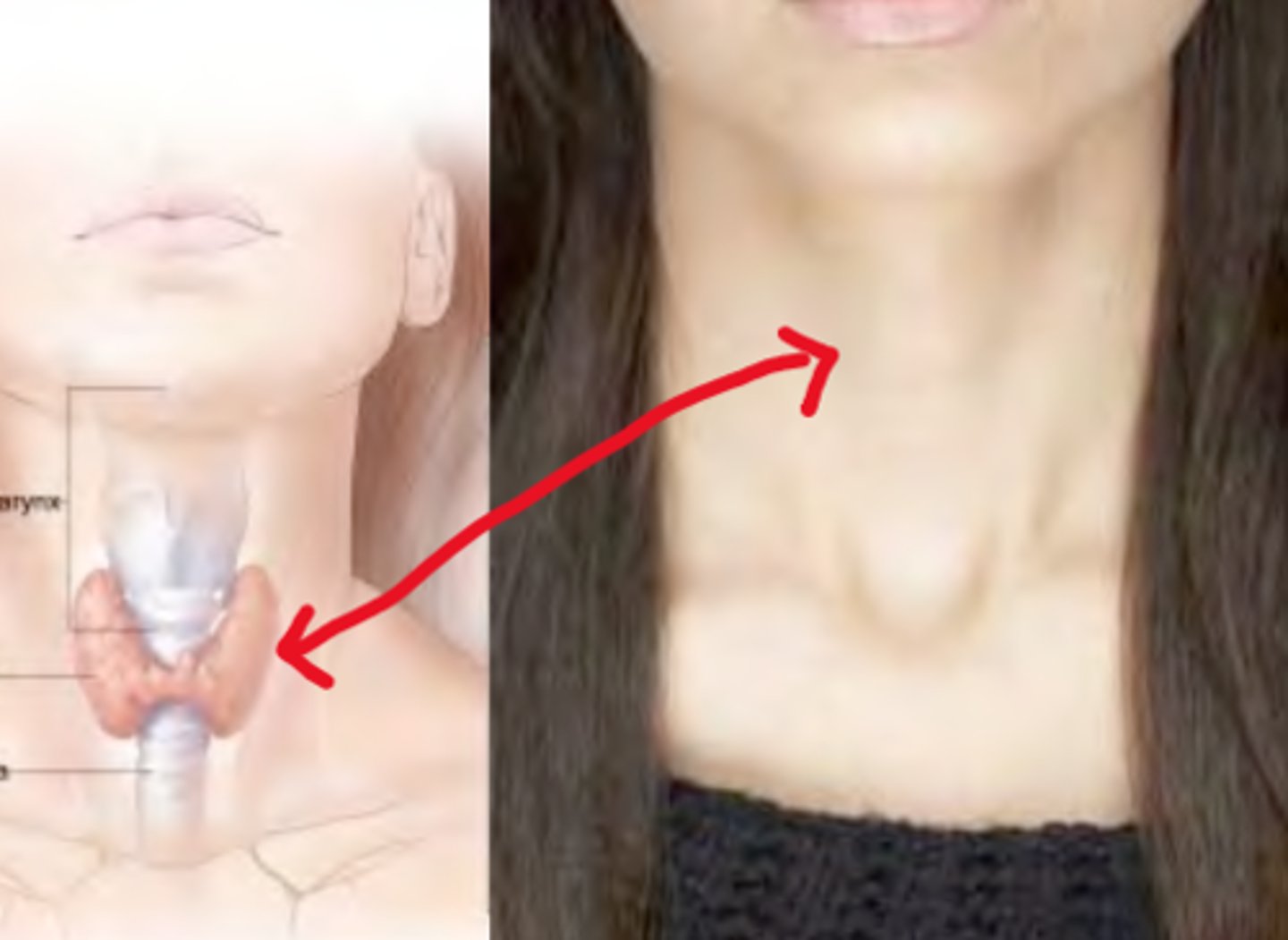
buccal mucosa - Mucous membrane lining the cheek.
What is 2? (not linea alba)
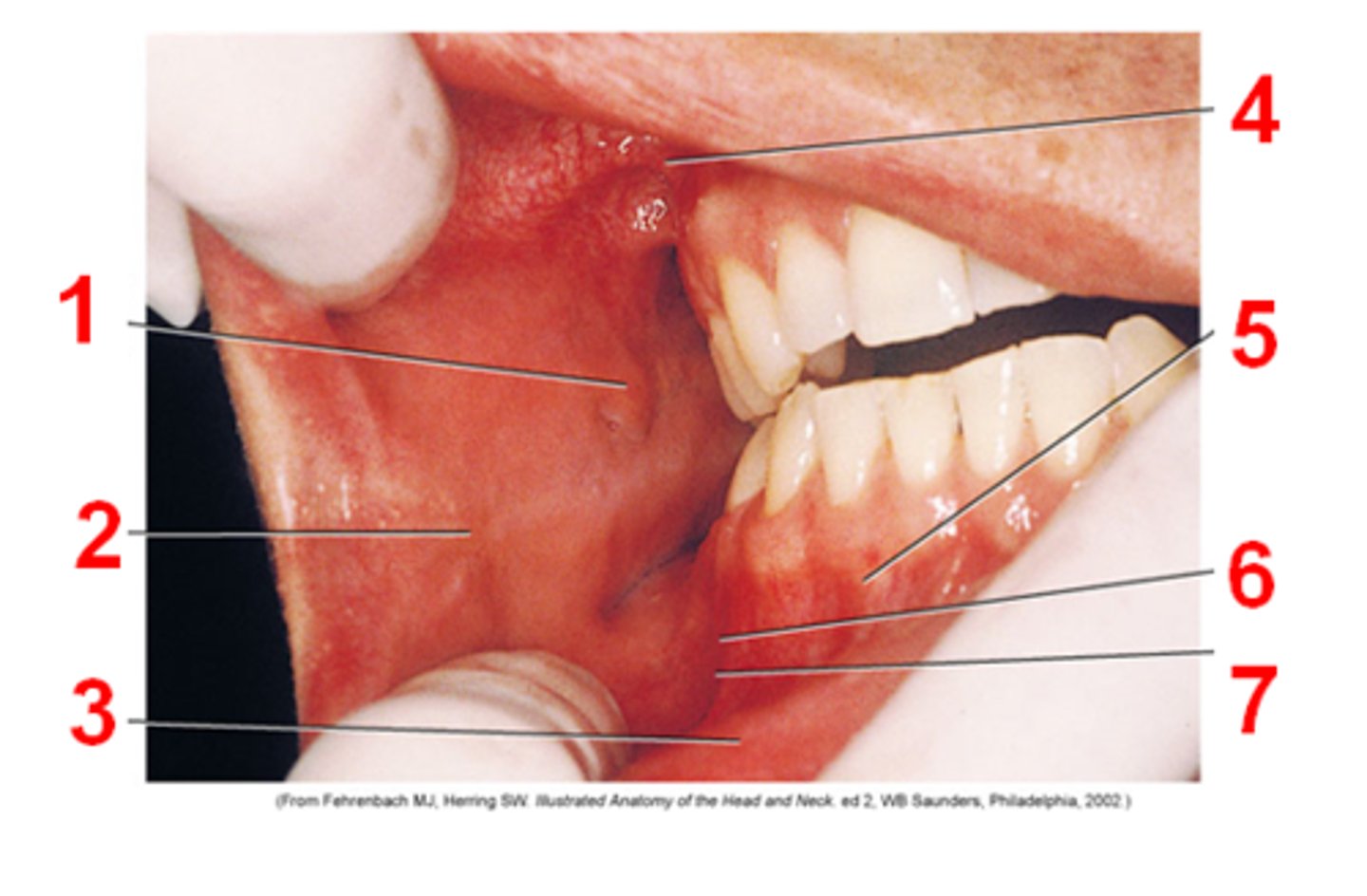
Lingual Varicosities - dilated, twisted veins on the underside (ventral) of the tongue and side of tongue (lateral)
What is pictured here?
